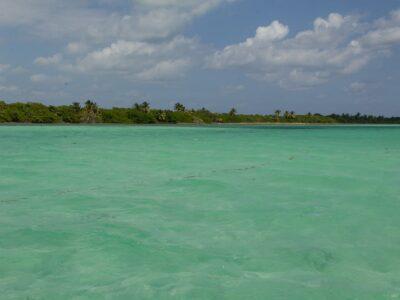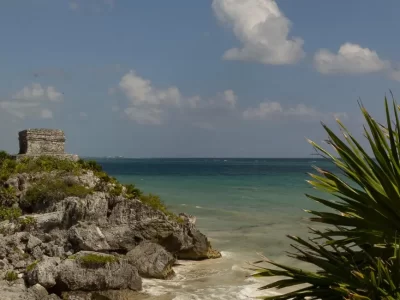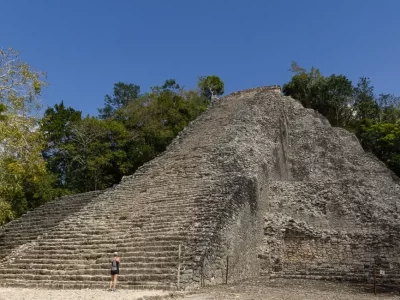With historic buildings in bubble gum colours and more cultural activities than copies of Frida Kahlo’s art, Merida -the capital of the state of Yucatan in Mexico- is a cool place. Cool and hot, with daytime temperatures reaching 32º C (90ºF), but also with many museums and art galleries to hide from the sun. At night, the heat subsides and music and performances fill its squares.
I spent 12 days in Mérida (pronounced MEH-ree-dah) and while I didn’t find spectacular churches like the ones I’ve seen elsewhere in Mexico and some of its buildings could use a repair or two, I did find great examples of colonial architecture and some beauties from the 19th and early 20th century. And good food!
Disclosure: This post contains some affiliate links. If you make a purchase through those links I will earn a commission at no additional cost to you (zero, nada). To check the full disclaimer, click here.
These are the best things to do in Merida, Mexico
Table of Contents
Walk Around Merida’s Historic Centre
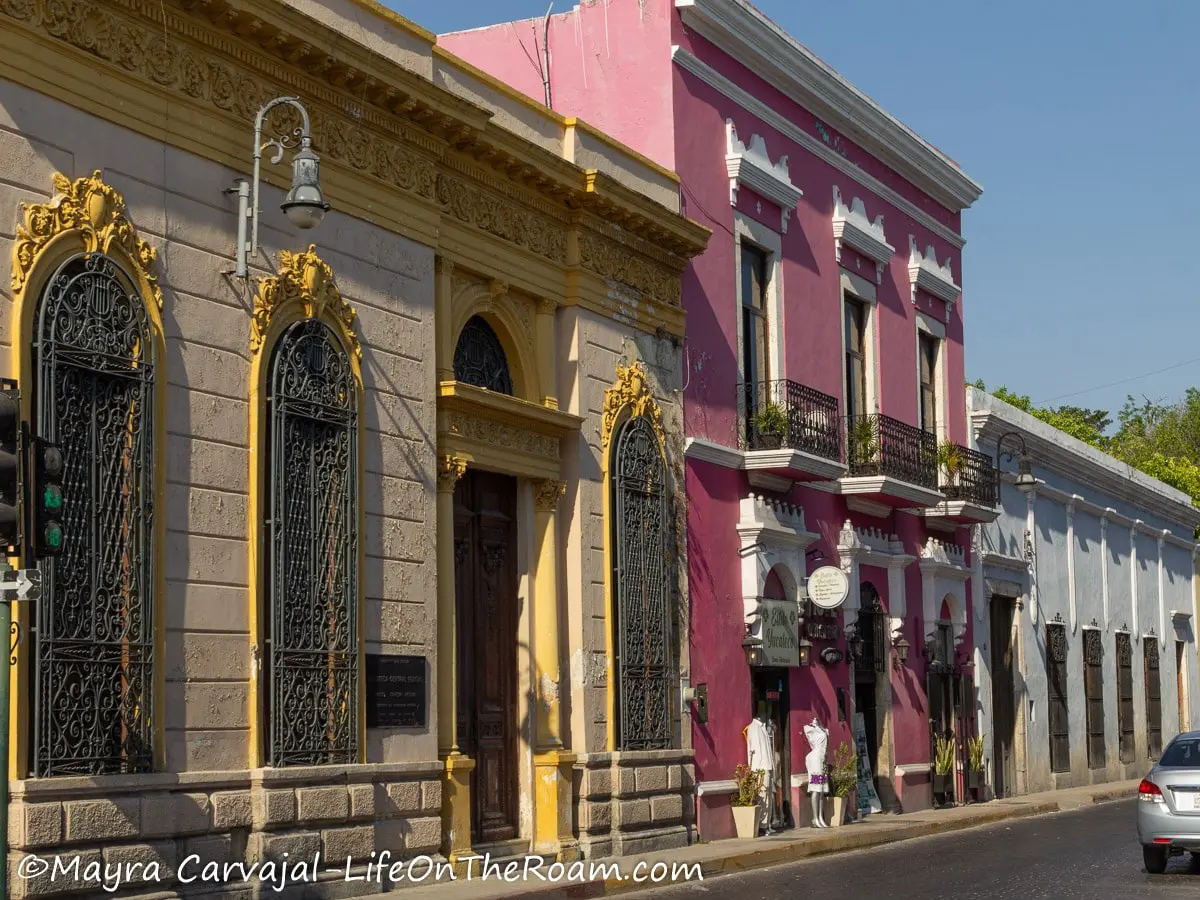
Walk from square to square looking at the many historic buildings in Merida and appreciating the different architectural styles.
Some of them were former residences from the Colonial period, built in the 16th century in Baroque and Neoclassical style.
Some churches date as far back as 1562, such as the Chapel of Our Lady of the Rosary (intersection of Calle 61 and Calle 58), which used to be part of the San Juan de Dios hospital.
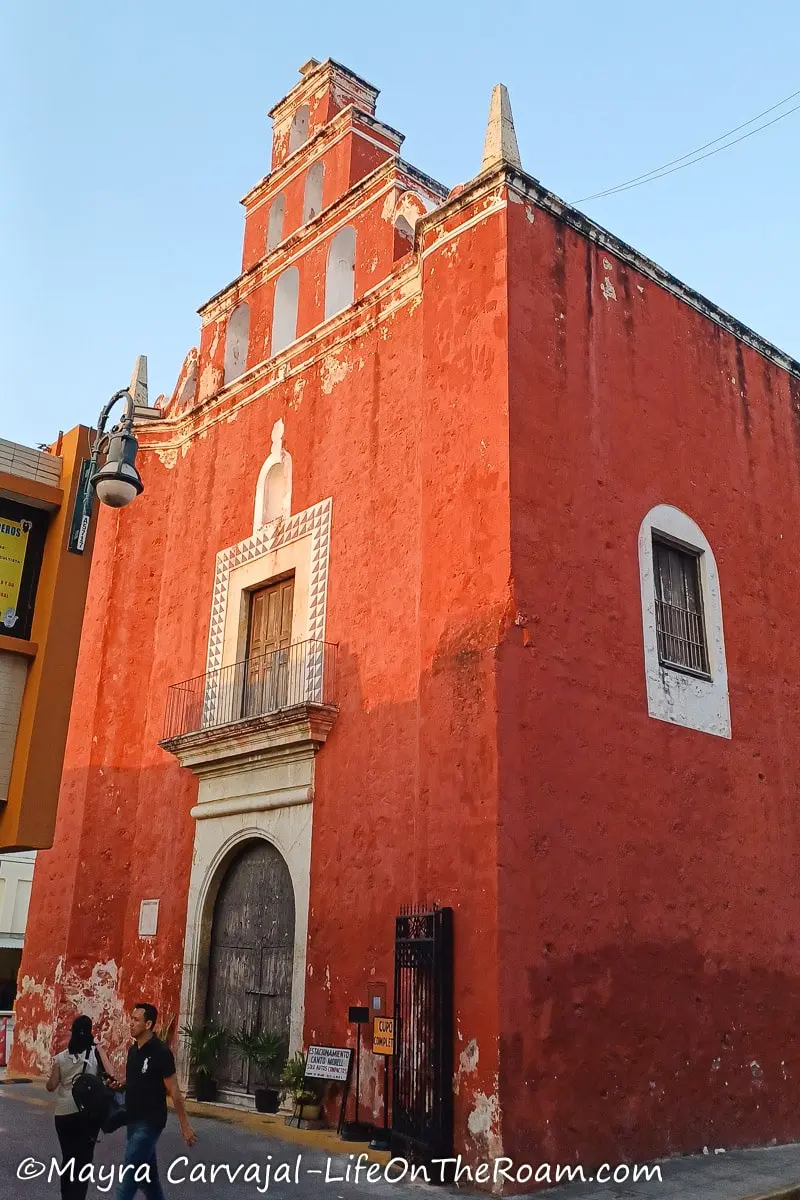
You can also find some Art-Déco examples from the mid-20th century, like Teatro Daniel Ayala.
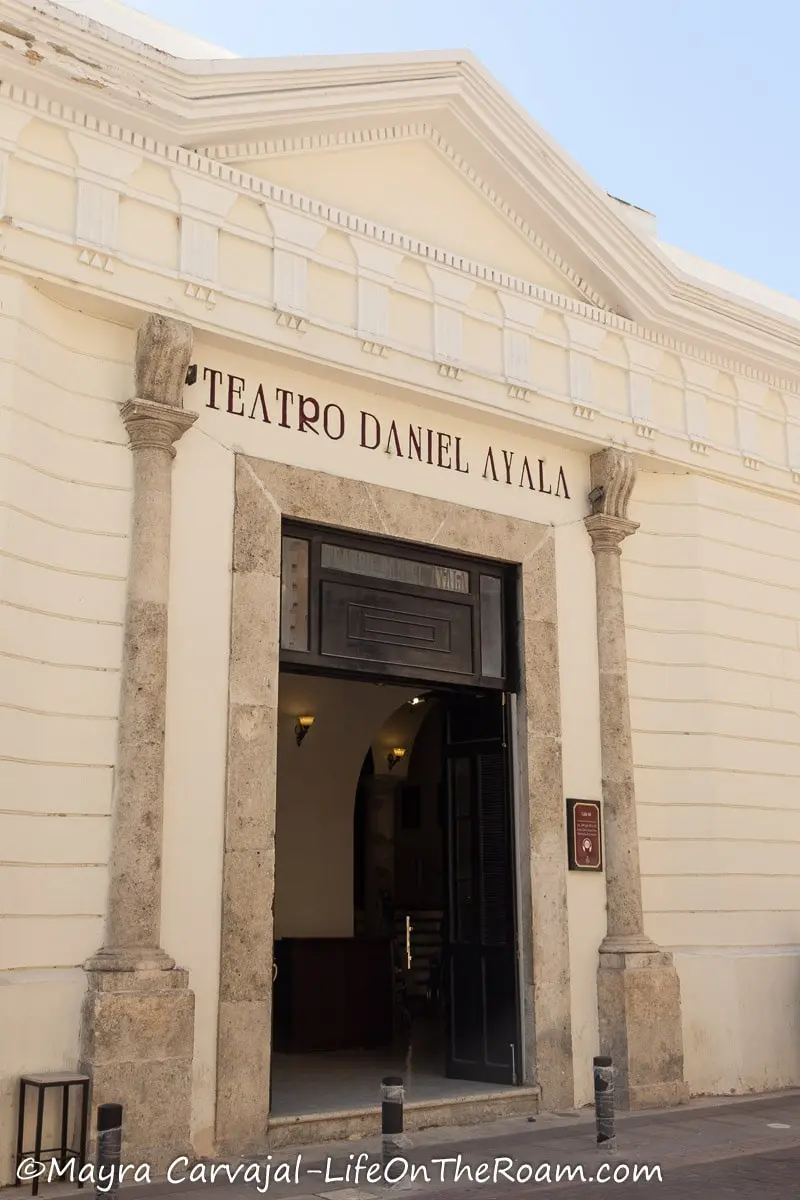
Merida was named “The White City” by the Spaniards when they saw the Mayan buildings covered in white stucco. Today, it’s all about colour.
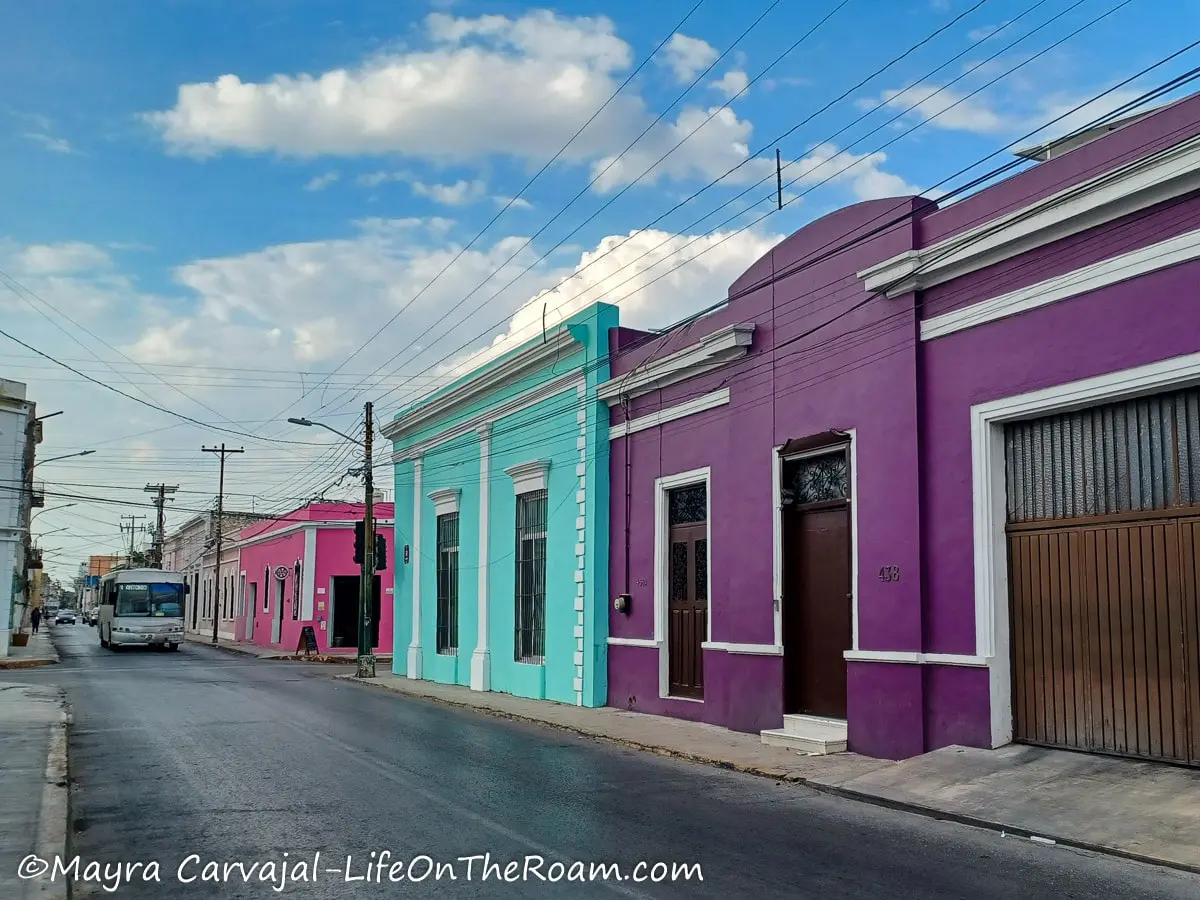
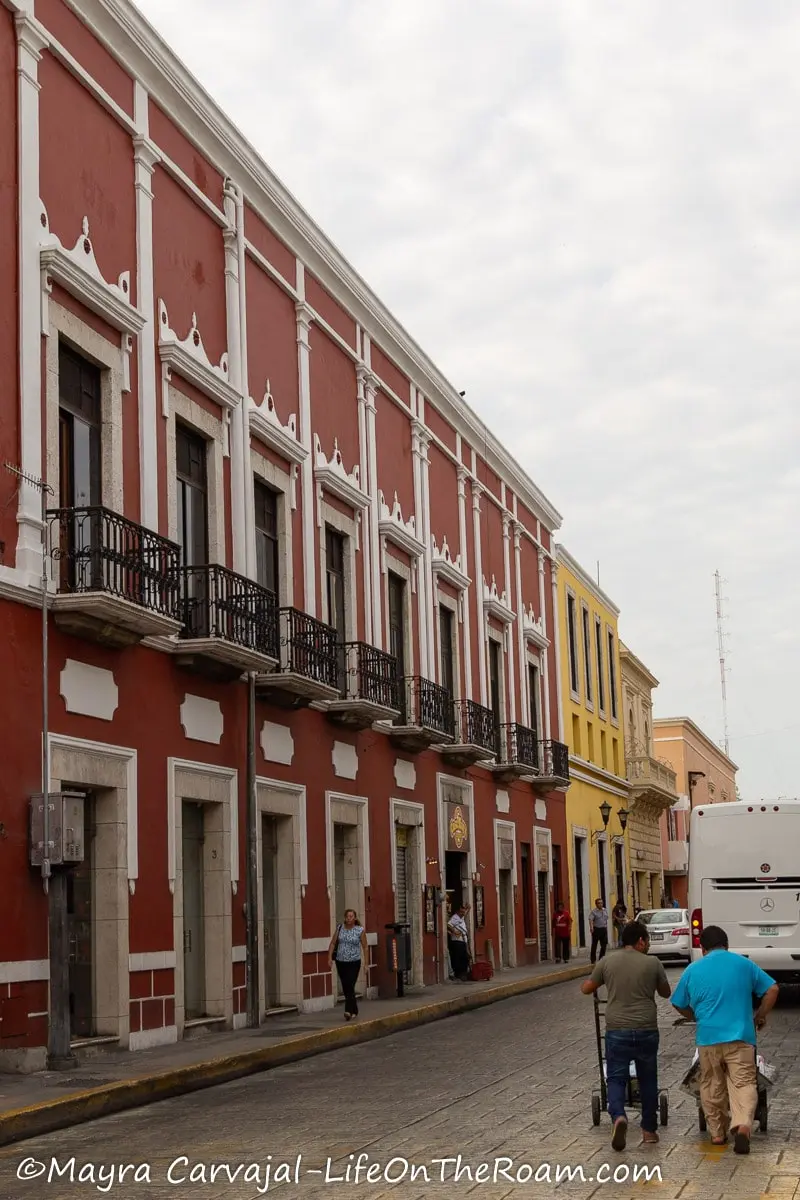
I loved the big doors and windows and the precious ironwork that also adorns the balconies.
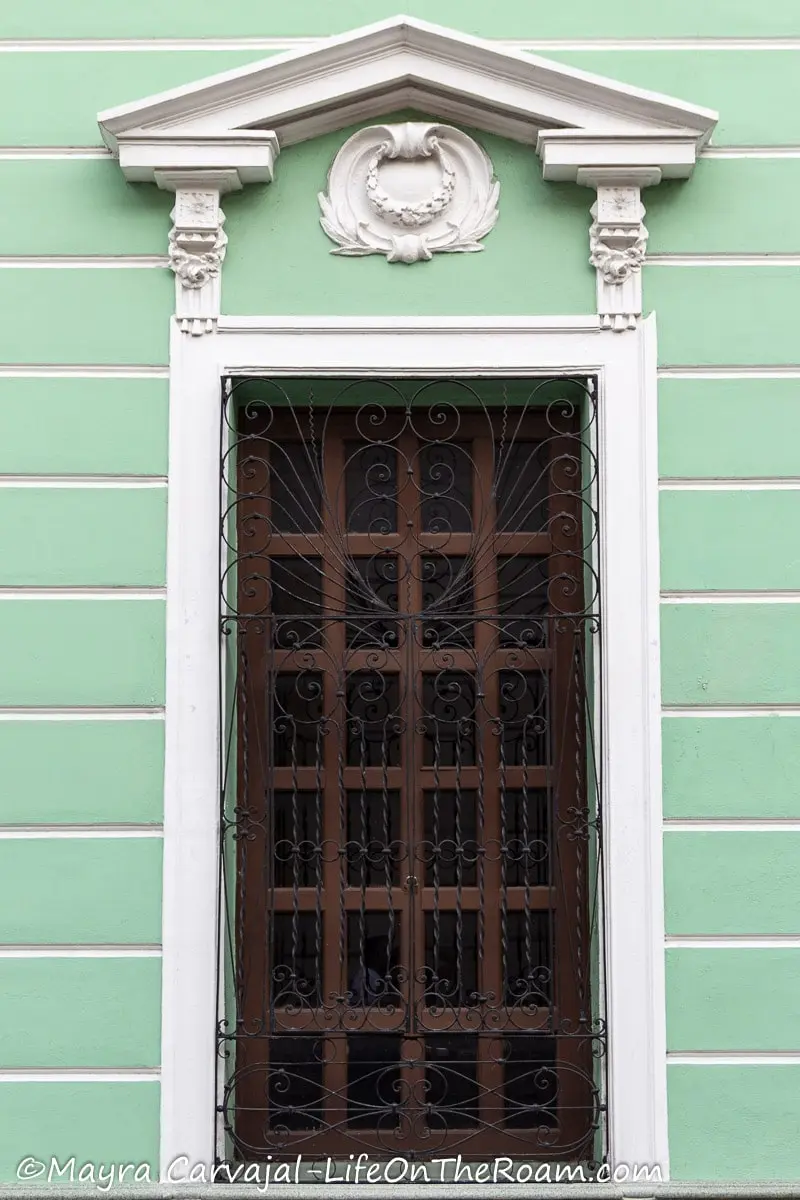
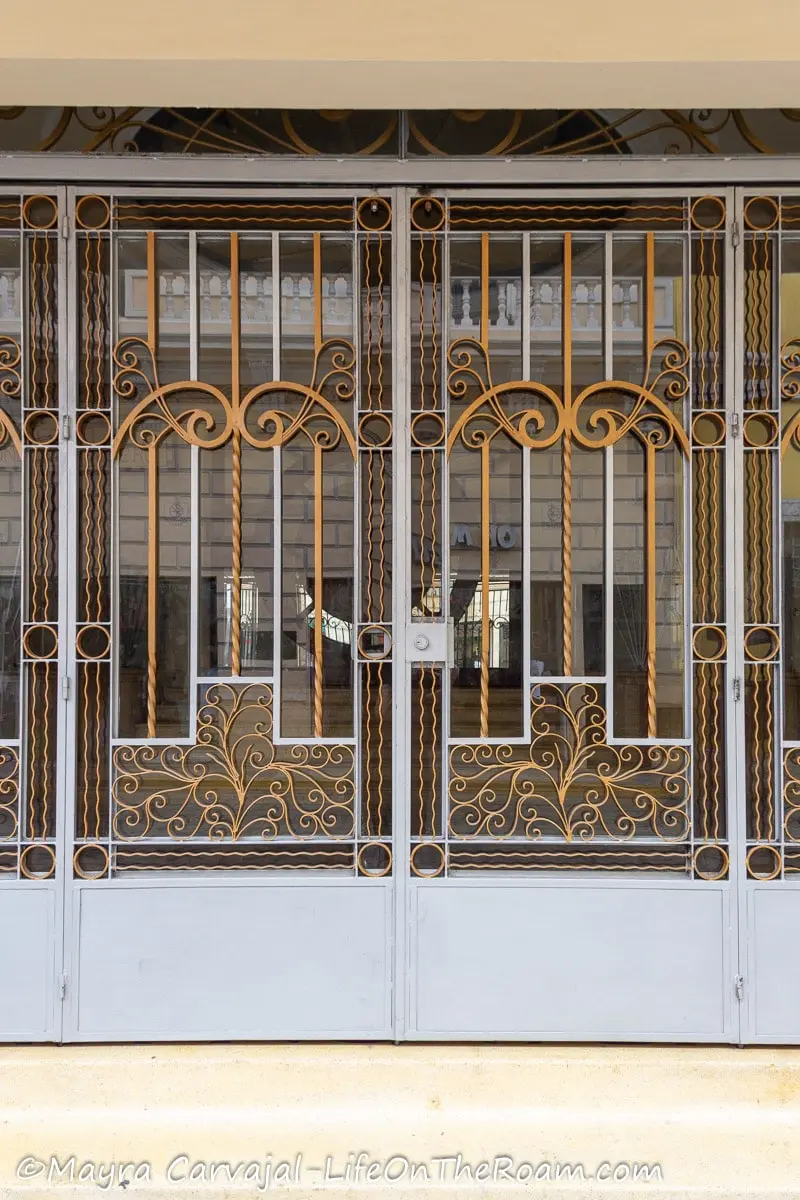
Unless you visit in the cooler months of December, January, and February, you’ll be more comfortable doing your walks in the morning or late afternoon. At mid-day you’ll be better off visiting the many museums and art galleries in Merida.
As I mentioned in the introduction, you’ll notice some buildings could use some TLC. City officials seem to have noticed too as some restoration works were going on in some areas and hopefully will continue. If you look beyond the smudged make up you’ll be able to see the beautiful bones.
Visit the Tourist Info Office to book a free bilingual tour of the Historic Centre departing Monday to Saturday at 9:30AM. (Register in advance to secure a spot)
Didn’t make it to the free tour? Check out this walking tour of Merida’s Historic Centre, with a rating of 4.9/5 based on more than 130 reviews.
Enjoy the Cultural Activities at the Main Square (Plaza Grande)
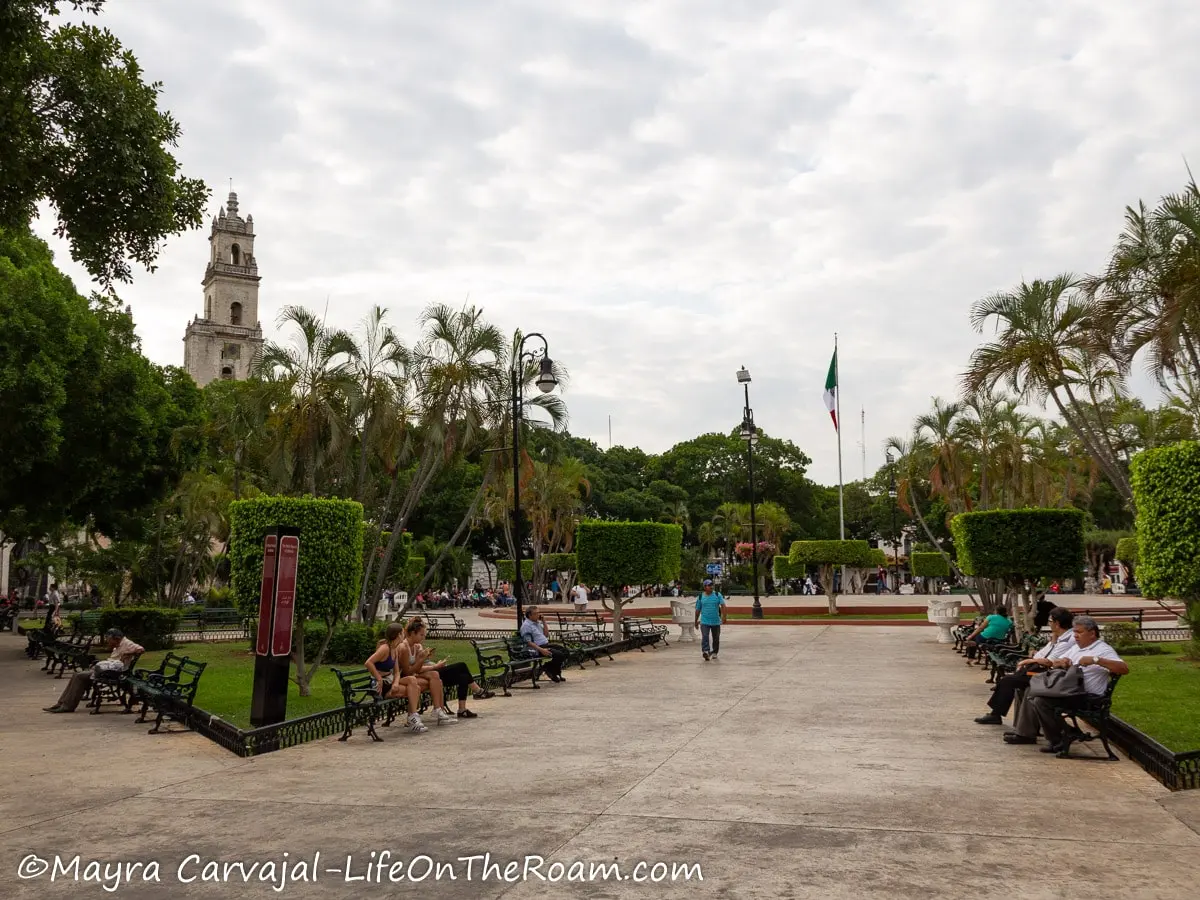
Plaza Grande, as in “Big Square”, is the axis where the main religious, civic, and cultural institutions in Merida meet: it’s surrounded by a cathedral, government buildings, and art centres so there’s a lot to see and do around.
Without being spectacular, Plaza de la Independencia (its other name) is nice. It’s the largest in the city, with benches, Tu y Yo chairs (“You and Me” or “Confidant Chairs” where people sit facing each other), tall trees, landscaping, and the MERIDA letters for your Insta photo.
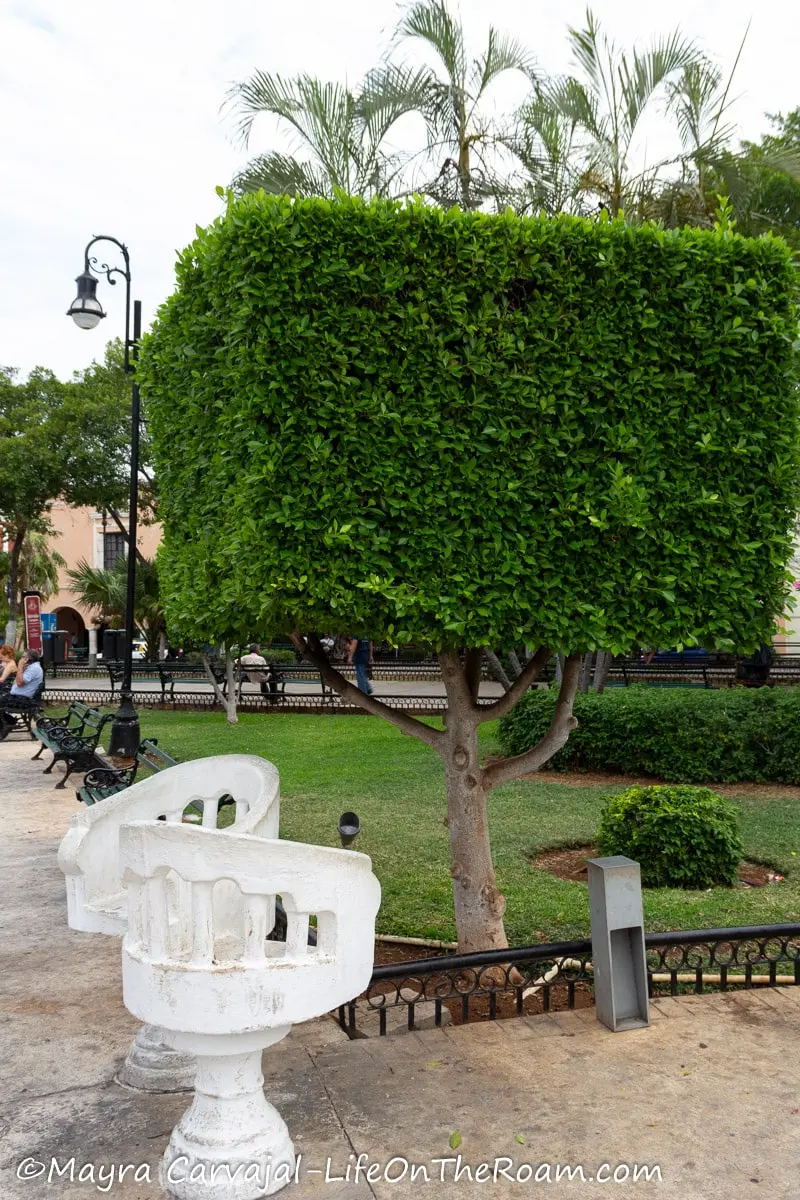
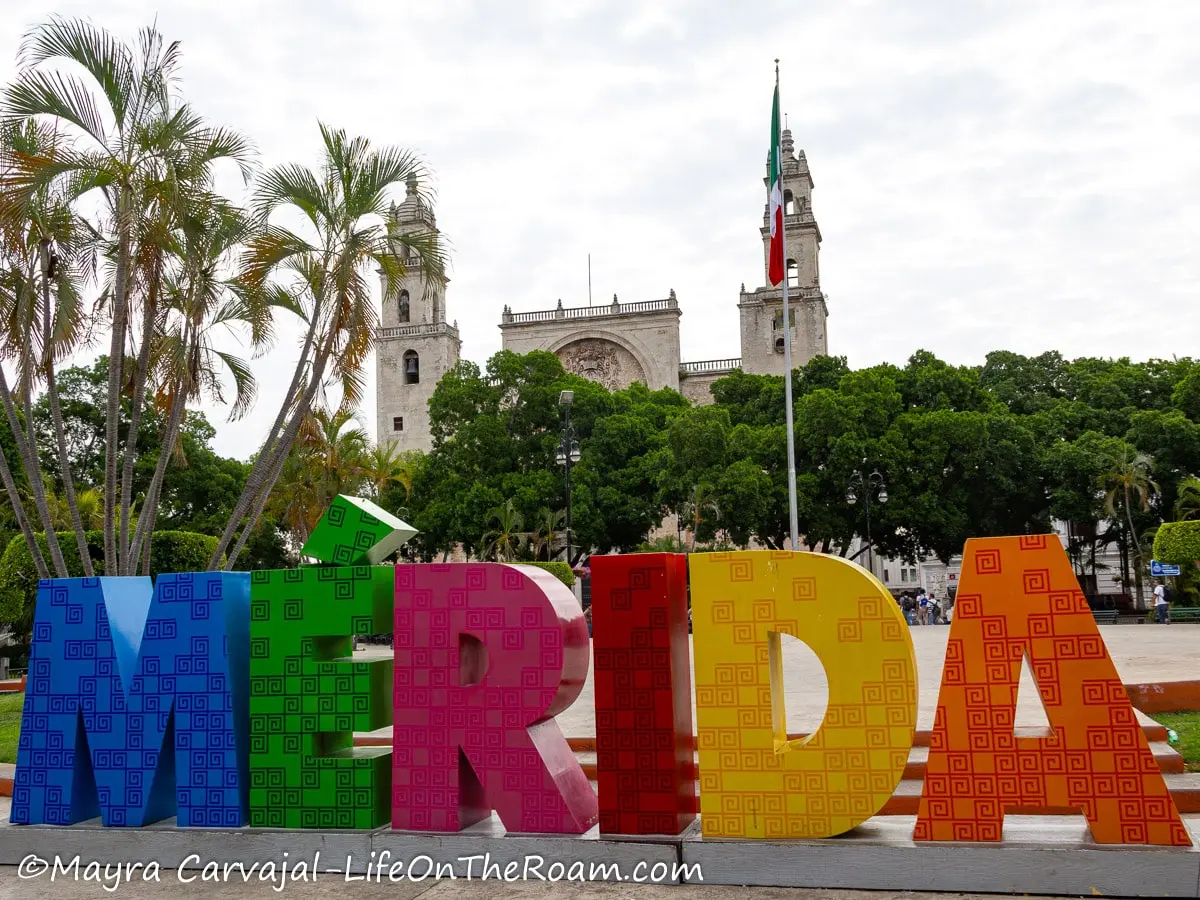
But what makes it truly special, other than the prominent buildings nearby, are the cultural activities that take place around here: concerts, dances, performances, you name it.
All this action usually starts between 8PM and 9PM. As I mentioned before, Merida is hot. To prevent people from melting into a puddle, many outdoor (and free!) events are scheduled after the sun goes down.
You can watch a Jarana and a Vaquería (beautiful traditional dances) on Mondays, a re-creation of the Mayan ball game (Pok Ta Pok) on Saturdays, and enjoy a bunch of activities all day on Sundays, when there’s also many stalls with arts and crafts.
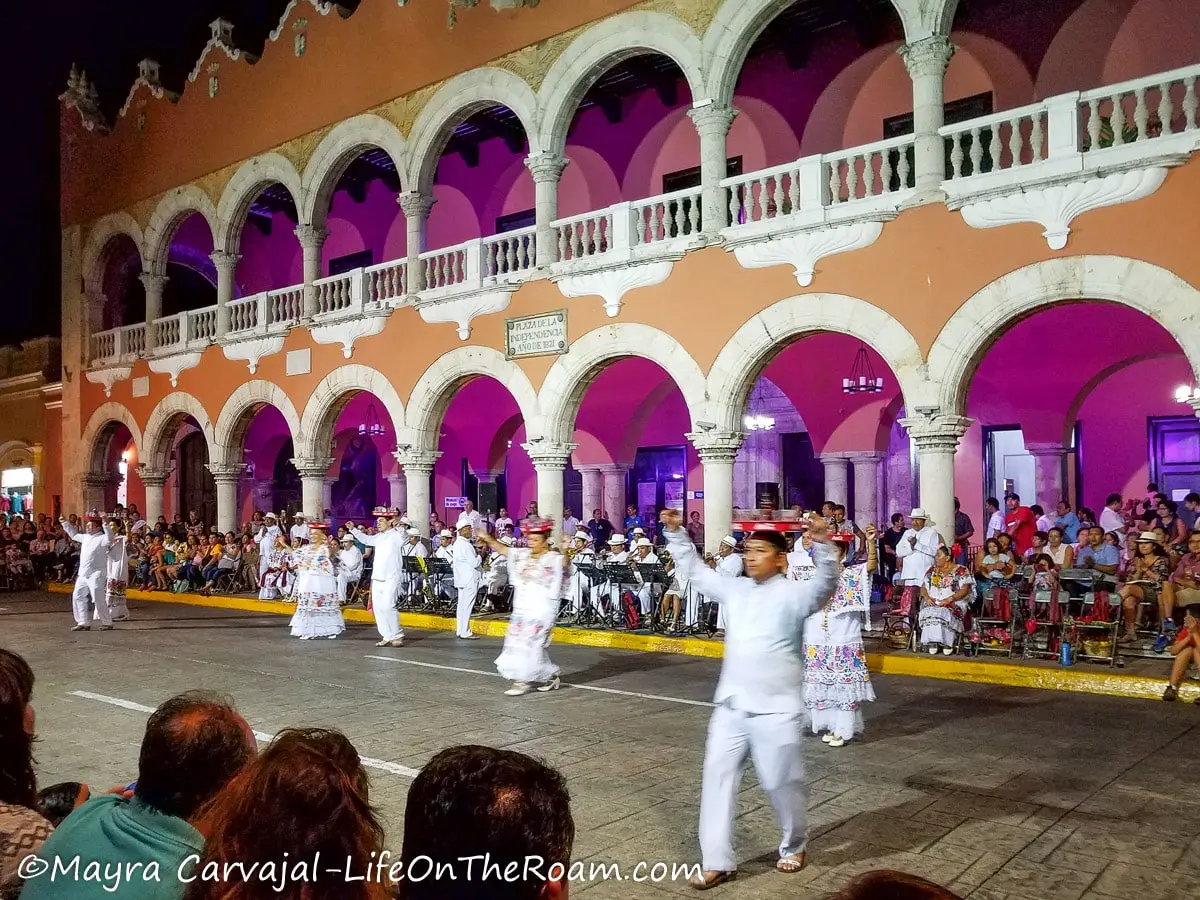
To find out more about what’s going on in the square (and other squares around Merida) you can visit the Tourist Info office located right across, on the west side (Calle 62).
Visit Merida’s Cathedral (Catedral de San Ildefonso)
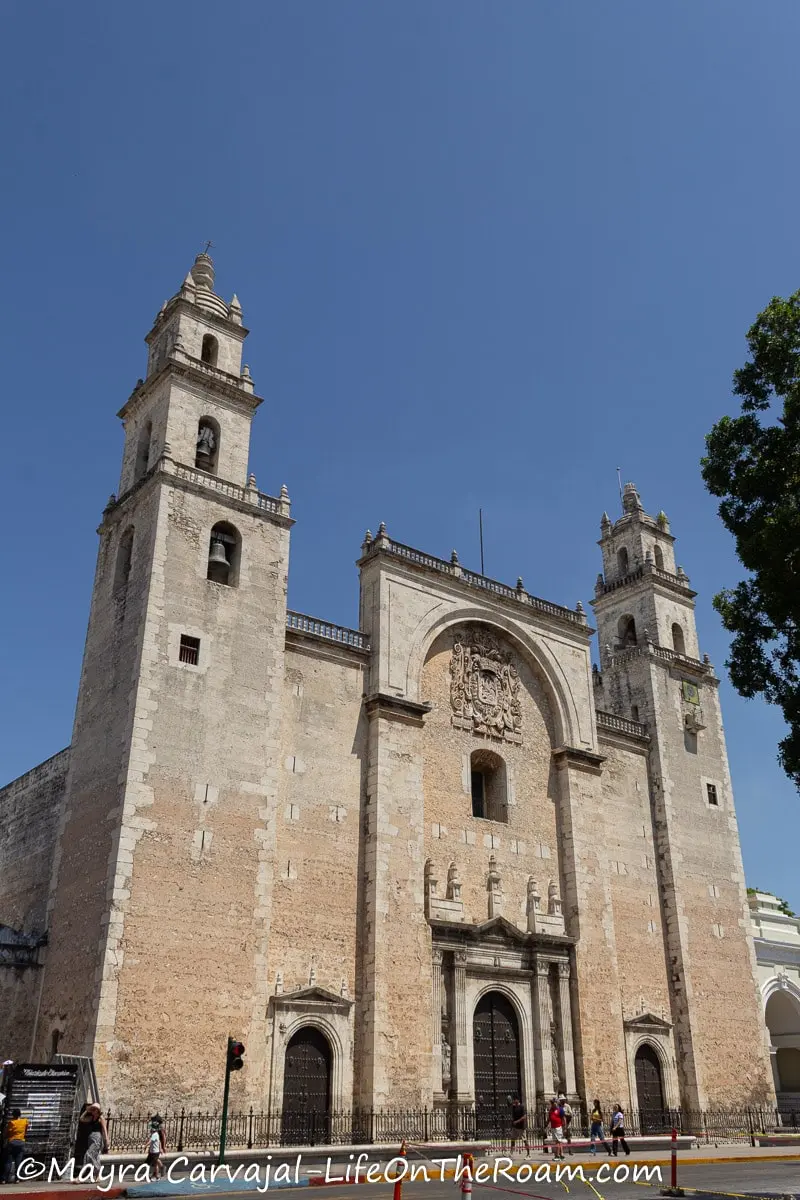
This isn’t just the largest church in the Yucatan Peninsula, it’s also Mexico’s oldest cathedral -construction started in 1562- and the first built in the continental Americas.
Its historical significance is more impressive than its architecture when compared to other churches around Mexico, as its Renaissance-style stone façade is on the simple side.
The most relevant details are the big columns on the central section holding an arch that frames the coat of arms of Spain on the upper side, and the main entrance flanked by four columns, with statues of St. Peter and St. Paul.
The interior is simple, although the height commands a sense of grandeur. It also houses the world’s largest indoor wooden statue of the crucified Christ.

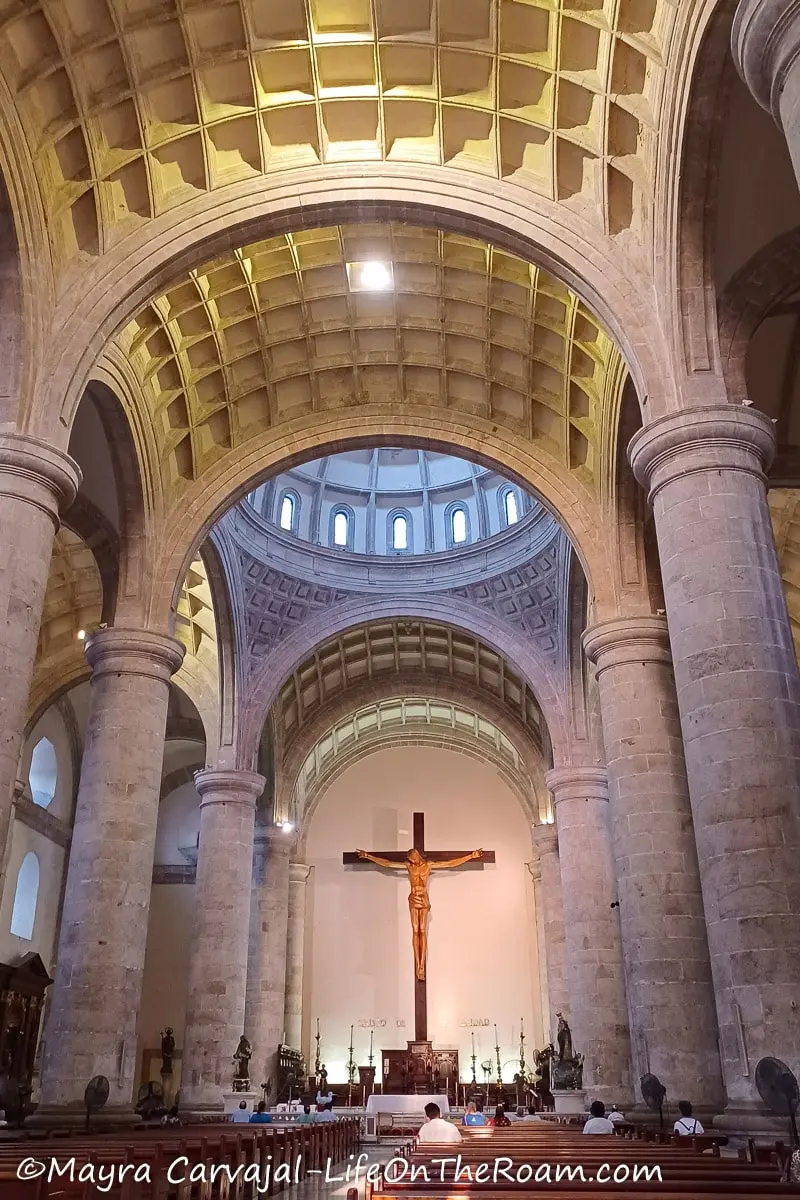
There are some altars in Baroque style, but nothing to write home about from an aesthetic point of view as the sacred art treasures of the church were destroyed in 1915 during the Mexican Revolution.
Southeast corner of Calle 60 and 61, Historic Centre.
Admire the Murals at the Government Palace (Palacio de Gobierno de Yucatán)
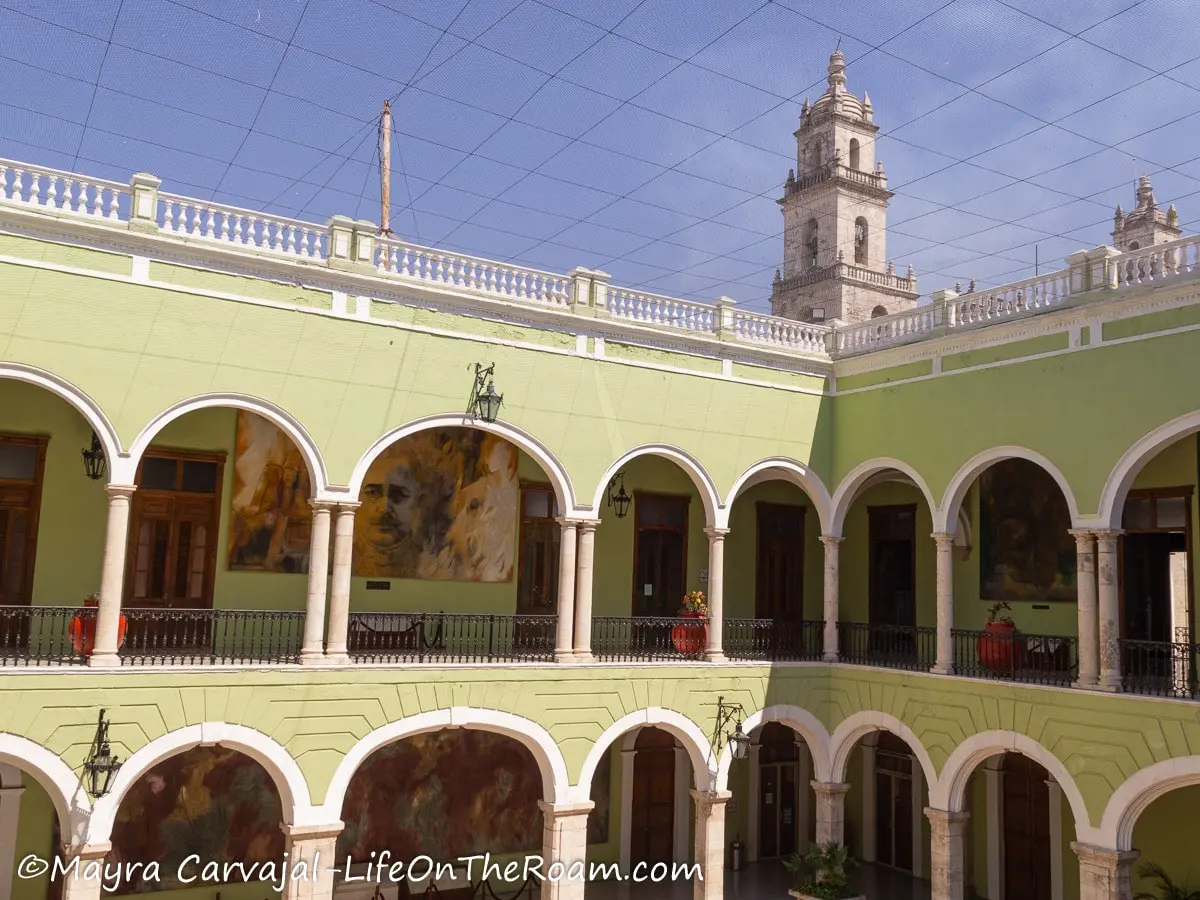
Behind the pistachio walls of this 19th-century building in Neo-classical style you’ll find a jewel.
The Government Palace of the State of Yucatan is home to 27 fantastic paintings from local artist Fernando Castro Pacheco. You can see more of his work at the namesake cultural centre in Paseo de Montejo.
The murals covering the 2nd floor and the main staircase give you an opportunity to learn about the history of the state of Yucatan, the key milestones in Mexico’s history, and the struggles of the Mayans.
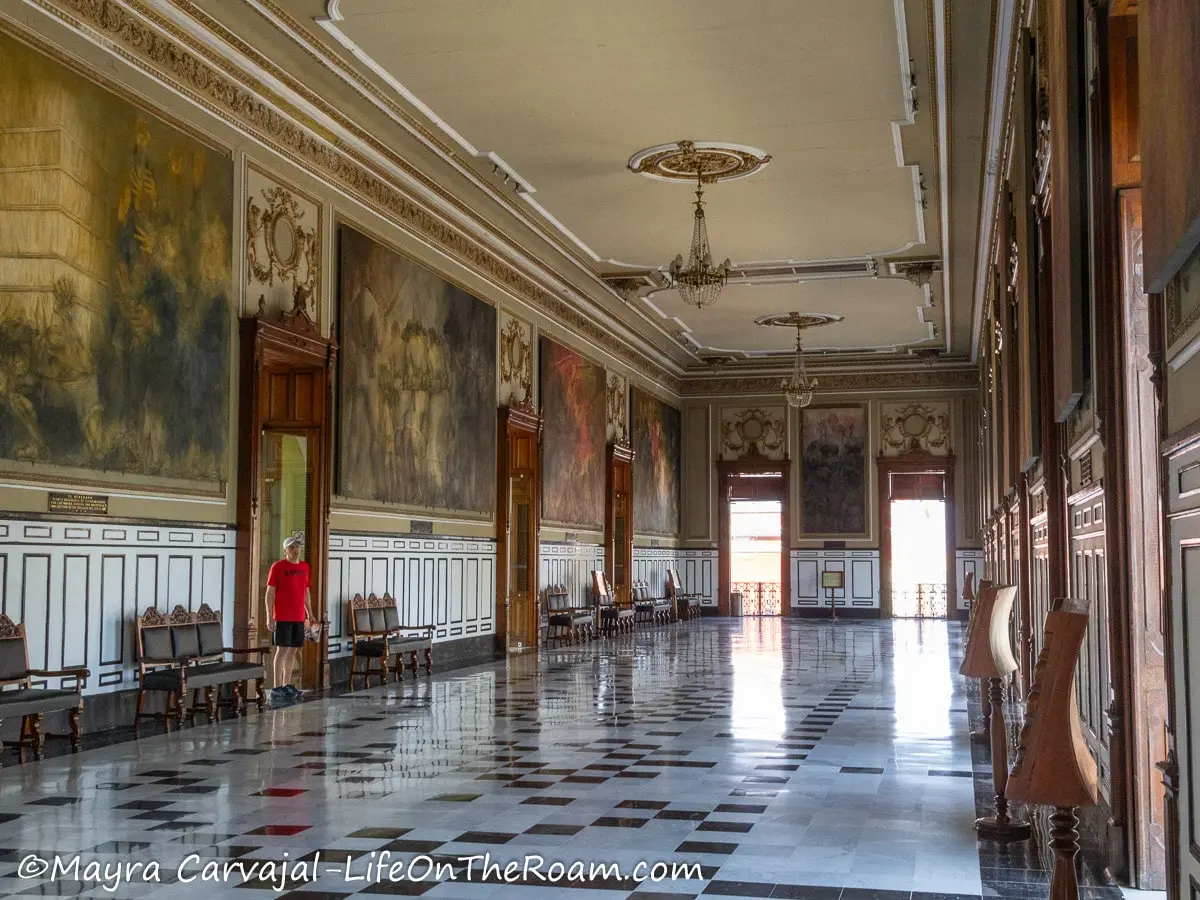
To me, the most impressive artwork is the staircase mural that depicts the Mesoamerican worldview. It’s quite unique, in black and white with some red and yellow here and there.
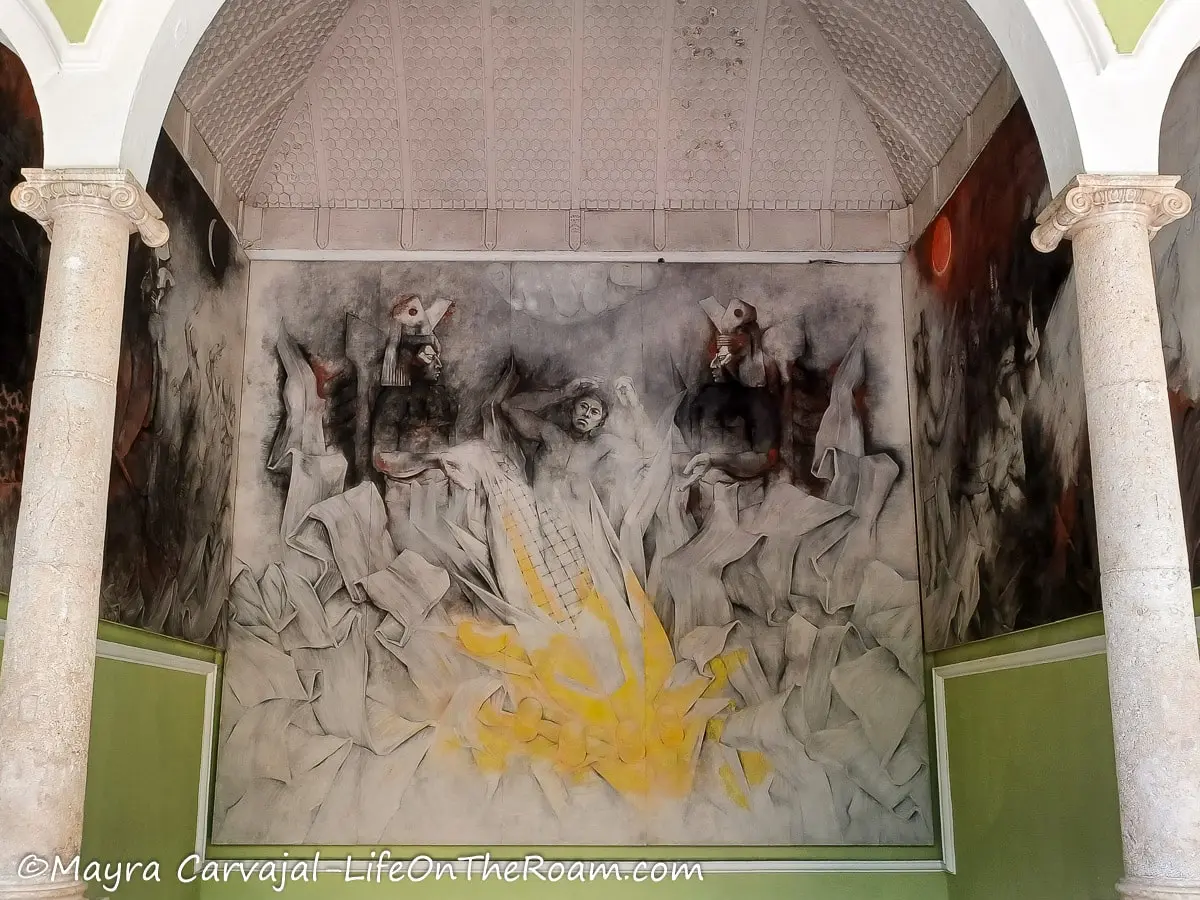
As an added bonus, from the main room you’ll enjoy a wonderful view of Plaza Grande and the Cathedral.
Northwest corner of Calle 60 and 61, Historic Centre. Free admission.
Go to Casa Montejo Museum
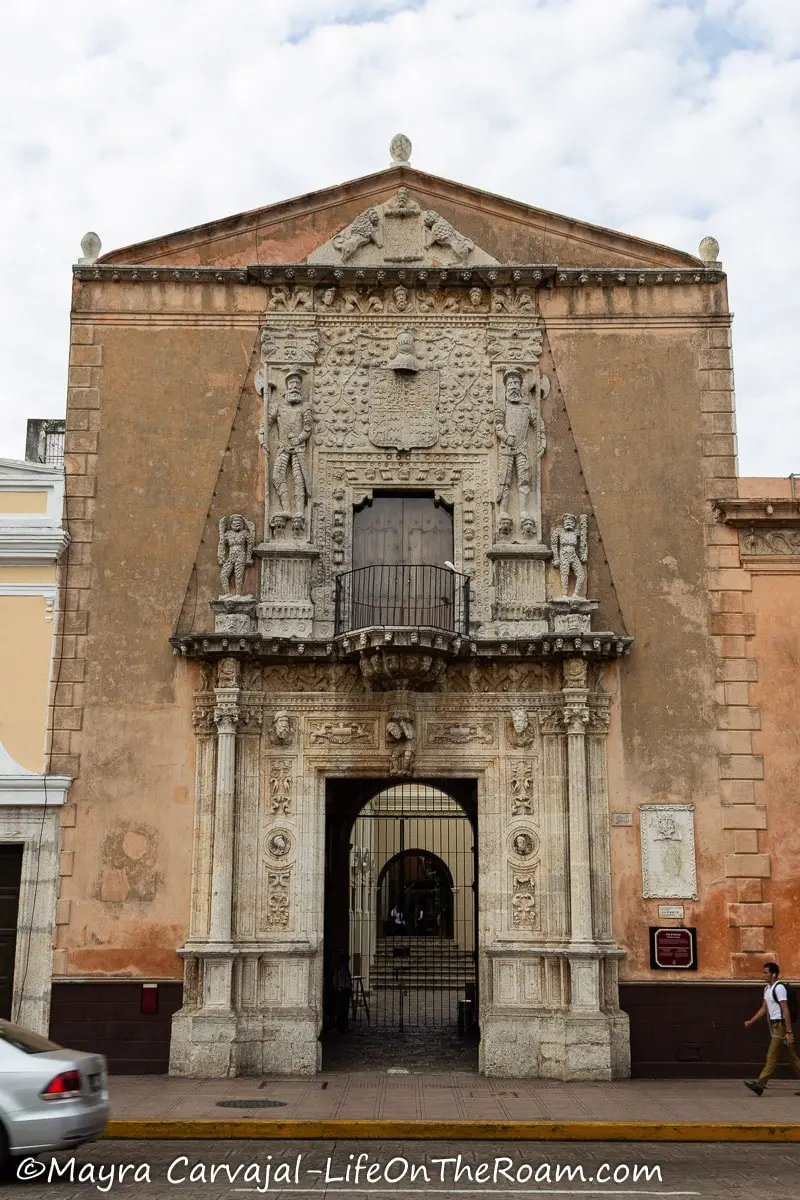
As the conqueror of the city that existed before Mérida, Francisco Montejo claimed prime real estate by telling his son to build a huge house that occupied an entire block, facing the main square.
Over the centuries the property shrank significantly, but what remained went under renovation and it’s now a (free!) museum with furnishings showing the evolution of decorative style in Mérida’s mansions.
The only original feature of the house is the intricate façade in Plateresque style, which was the architectural style of choice in Spain when they built the property in the 1540s. The imposing entrance is a sight to behold and it’s known as the best example of Plateresque style not only in Mexico but in the Americas.
I couldn’t help standing there for several minutes looking at the many details.
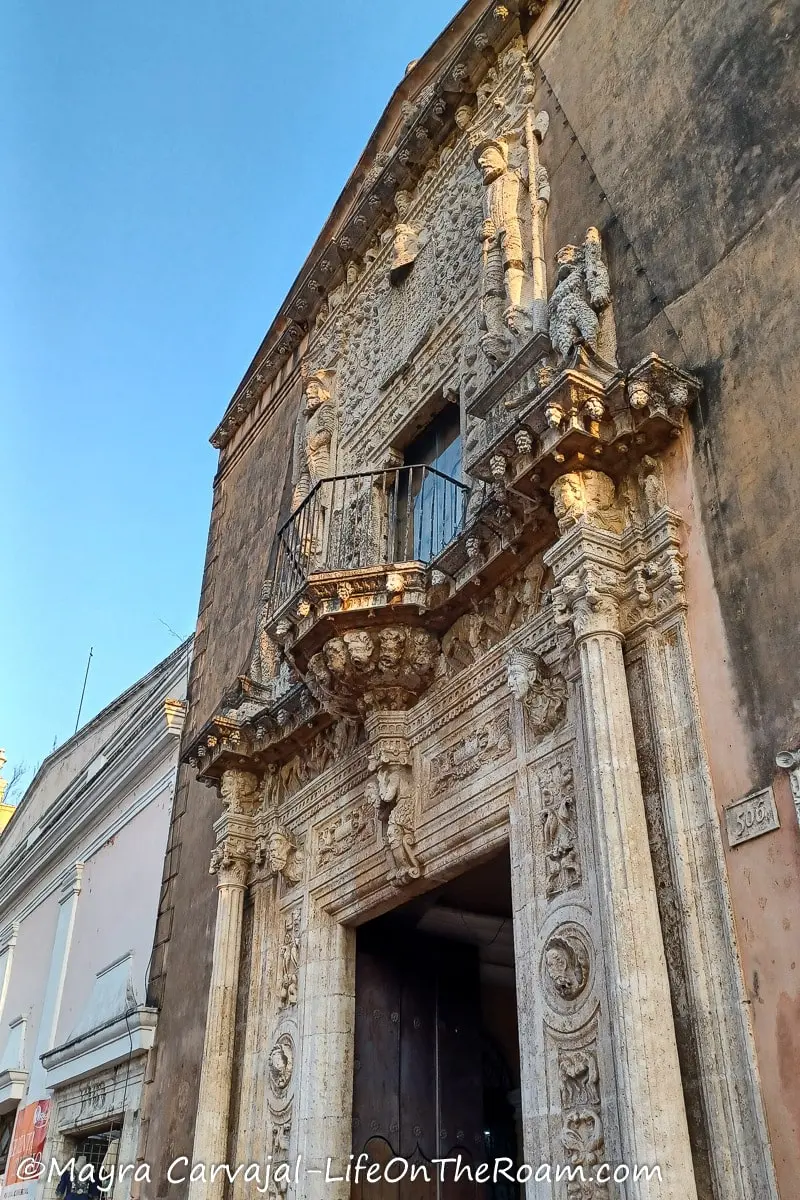
The stone frame is decorated with neoclassical columns, fantastical figures, and carved heads of angels and members of the Montejo family (allegedly). Rumour has it that even the architect’s head is featured here.
Look further up and you’ll see a rich display of floral motifs around a coat of arms, flanked by two Spanish soldiers standing on the heads of four Mayans with an expression of pain in their faces.
A quiet way of taking a victory lap without moving one inch.
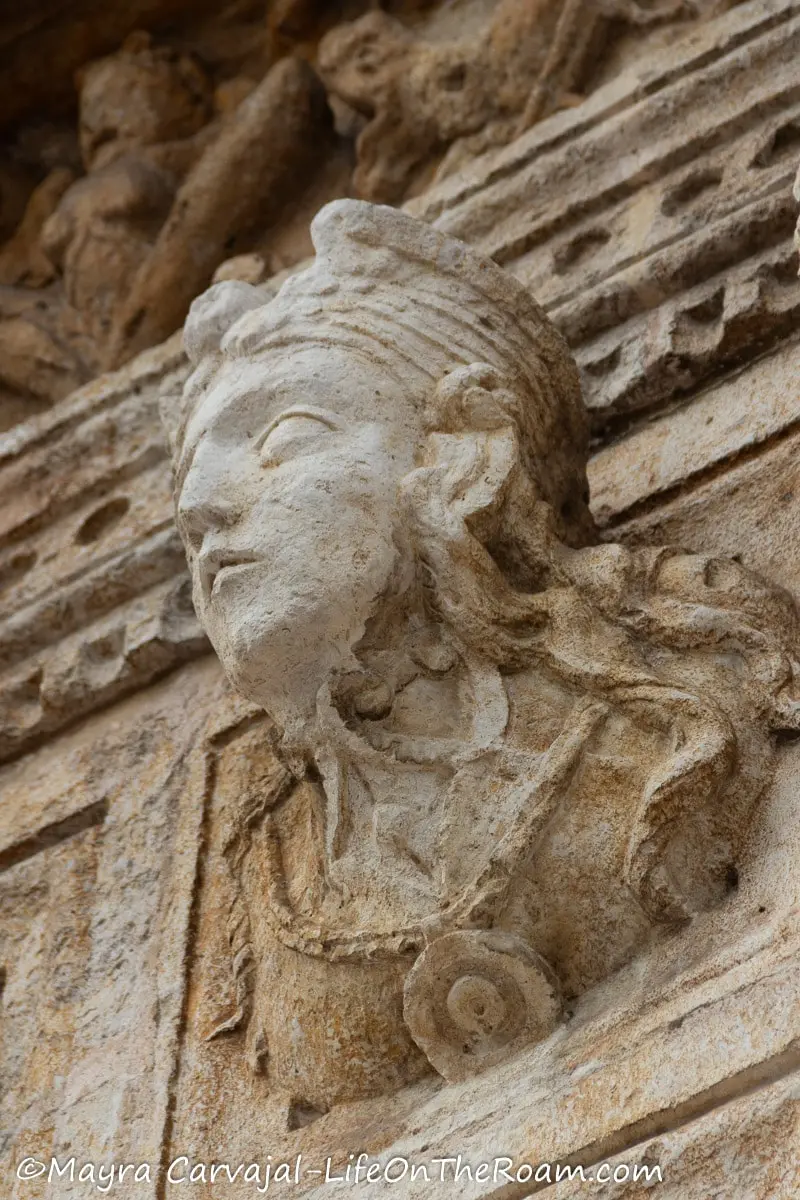
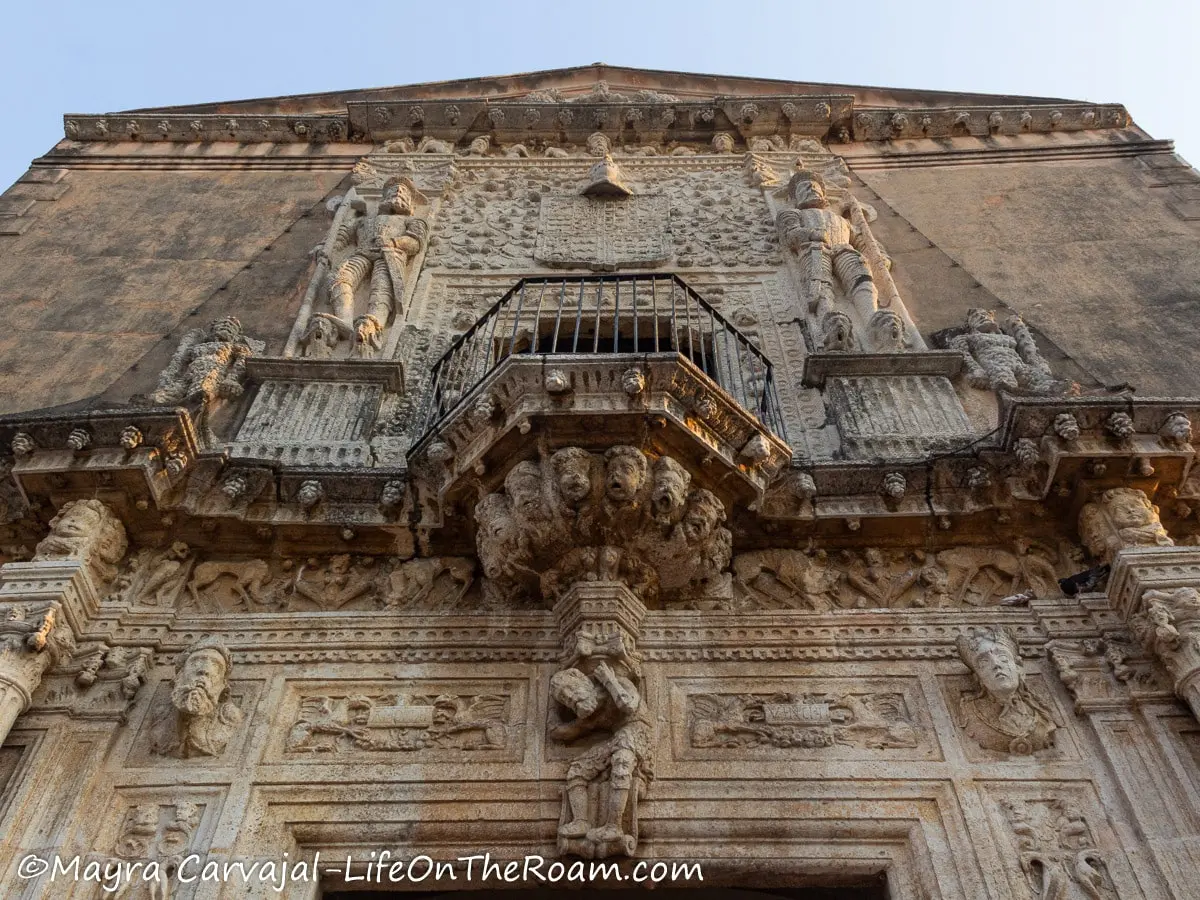

The monumental windows, replaced at the beginning of the 20th century, are flanked by effigies holding a pediment crowned with a coat of arms.
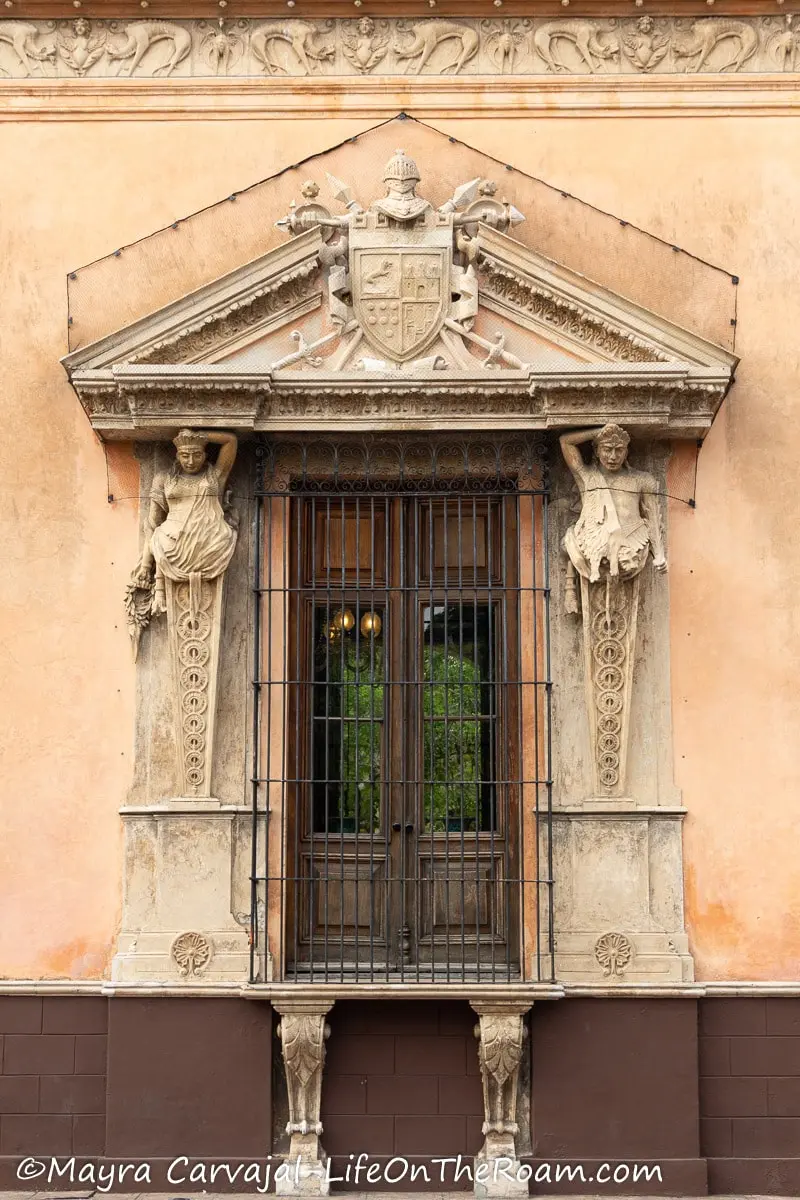

Inside, the house opens into an inner courtyard with mature trees and red ginger flowers enclosed by a cloister with rounded arches.
The museum consists of four main spaces designed as a library, a living room, a bedroom, and a dining room. Although this isn’t exactly the original layout of the house and it’s not its original furniture, it shows the European styles that influenced the interiors of rich people’s houses in Yucatan.
You’ll find a lot of furniture and decorative objects from the 19th century, brought from France, England, and the United States, some reproductions, and a few pieces from Italy, Germany, Spain, and China.
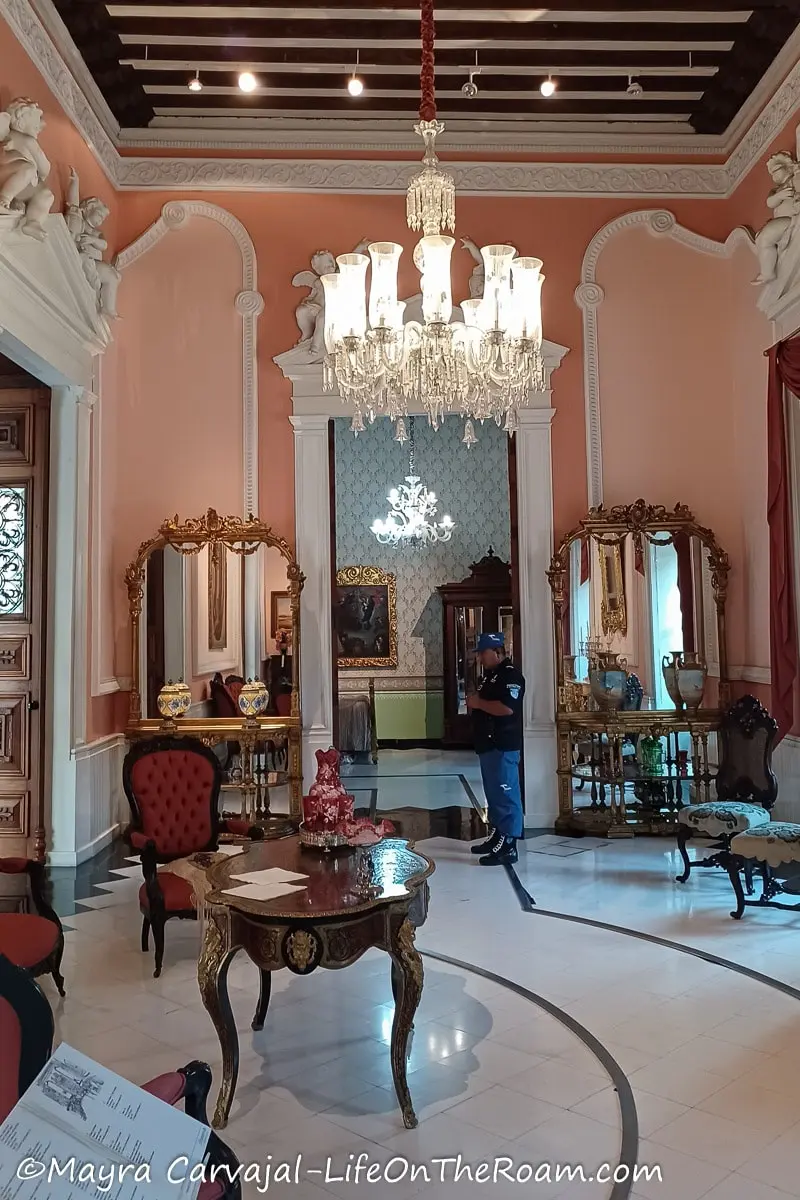
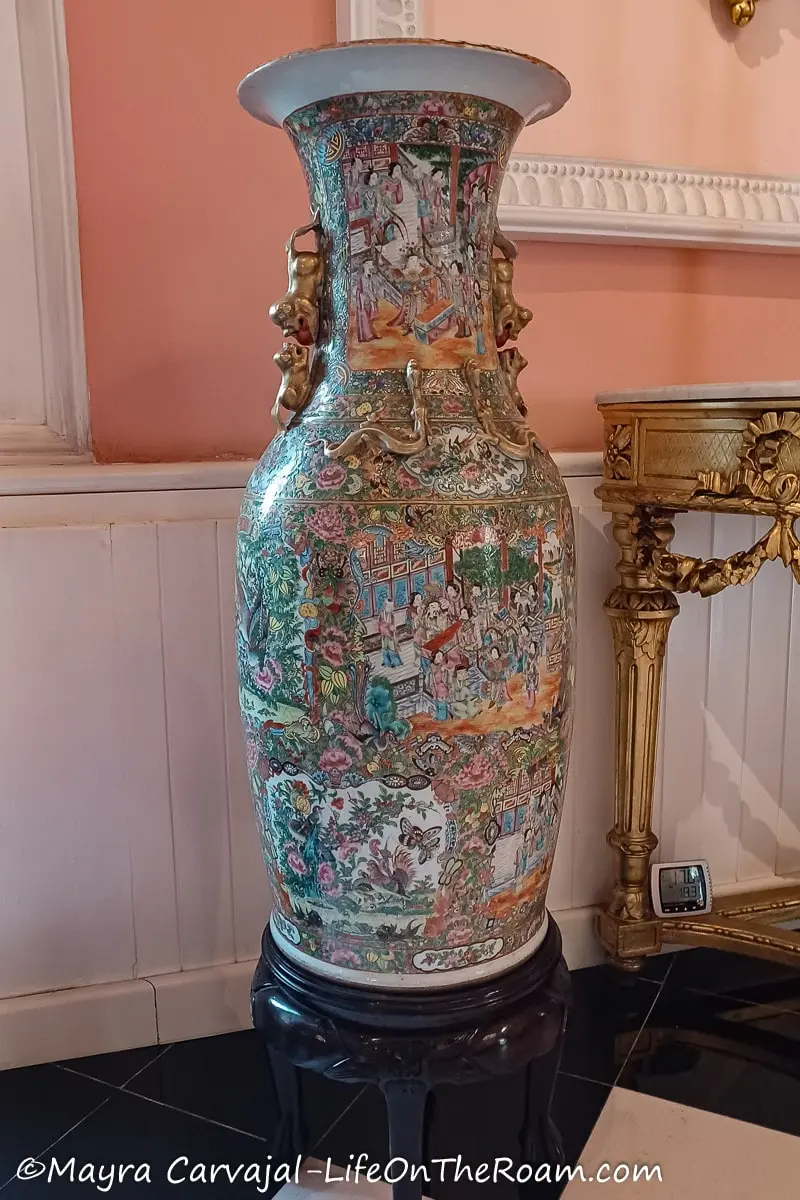
Some of my favourite pieces are the 19th century Baccarat chandeliers in the living room and the bedroom, the Qing Dynasty vases from China, the Victorian-style vanity in the bedroom,
I found the Victorian-style dining room to be the most impressive, with beautiful woodwork covering the walls and ceiling and a big table to accommodate a big family, which was the norm at that time.

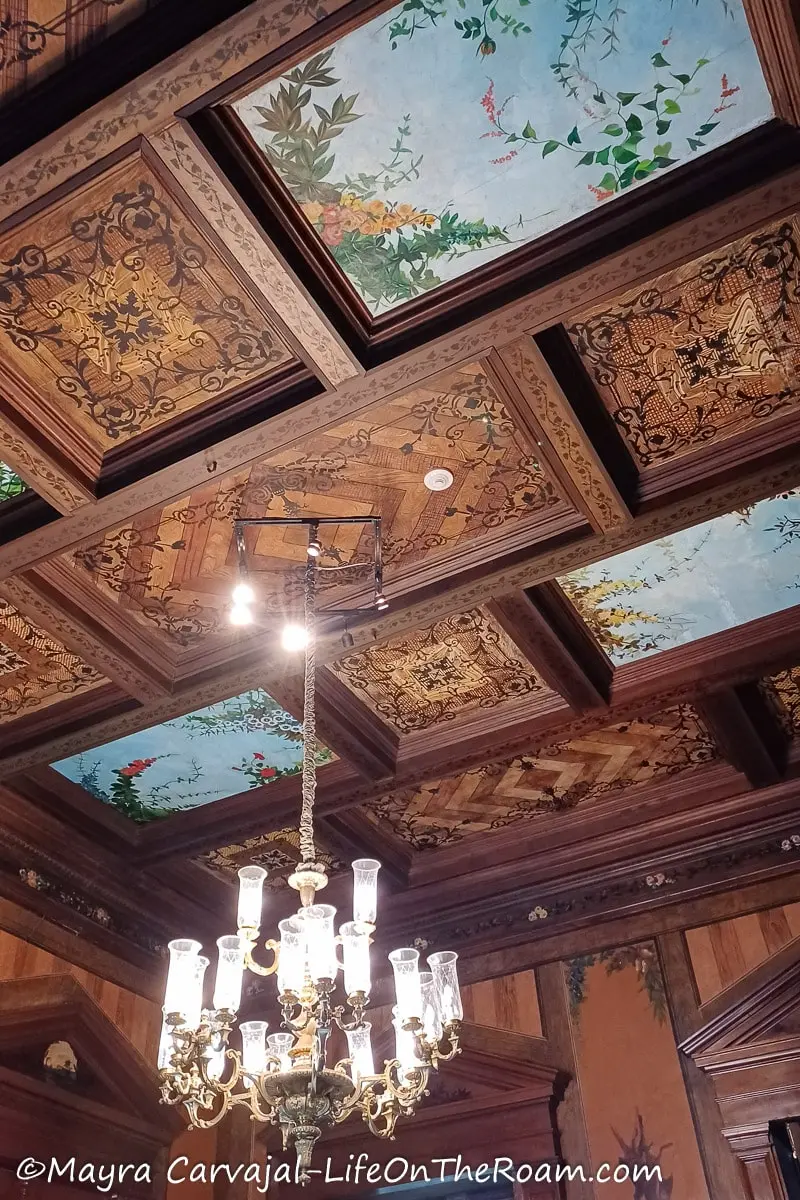
You’ll see many precious items such as Baccarat crystal chandeliers, Chinese porcelain, and Venetian crystal.
The museum has a gift shop, restrooms, and it’s also a space for temporary exhibits.
On Wednesdays at 8PM you can see a video mapping (Diálogos del Conquistador) outside the museum. Free.
Calle 63, 506. Centro -across Plaza Grande (Please note that Casa Montejo is a different site than the museum located in Paseo de Montejo, which is named Montejo 495); Open Tue. to Sat.: 10AM-6PM, Sun.: 10AM-2PM. Free admission.
See Art at the Olimpo Cultural Centre
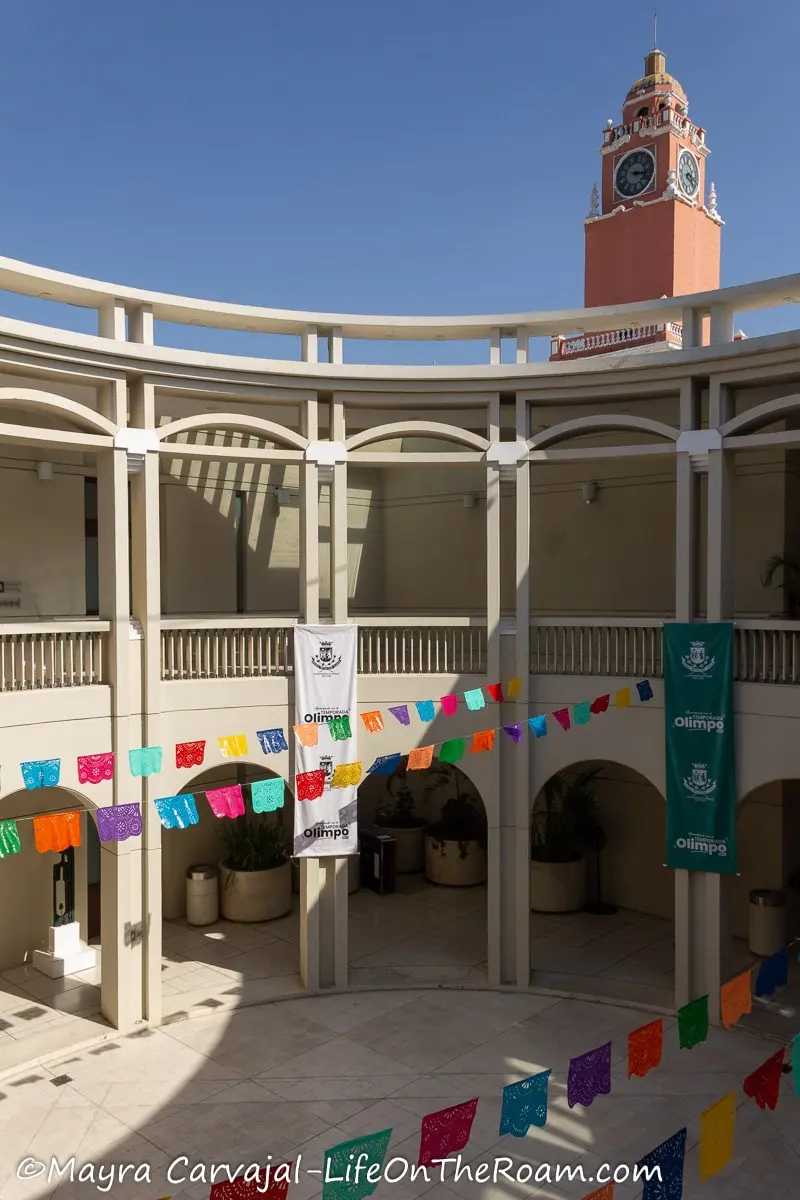
This small space has temporary exhibits showcasing artwork in different media. It also has an auditorium where you can enjoy concerts, dance, and theatre. Most events are free, some charge a small fee. Entrance to the gallery is always free.
Corner of Calle 61 and Calle 62, Historic Centre. Free admission
Try Yucatec Food at La Chaya Maya
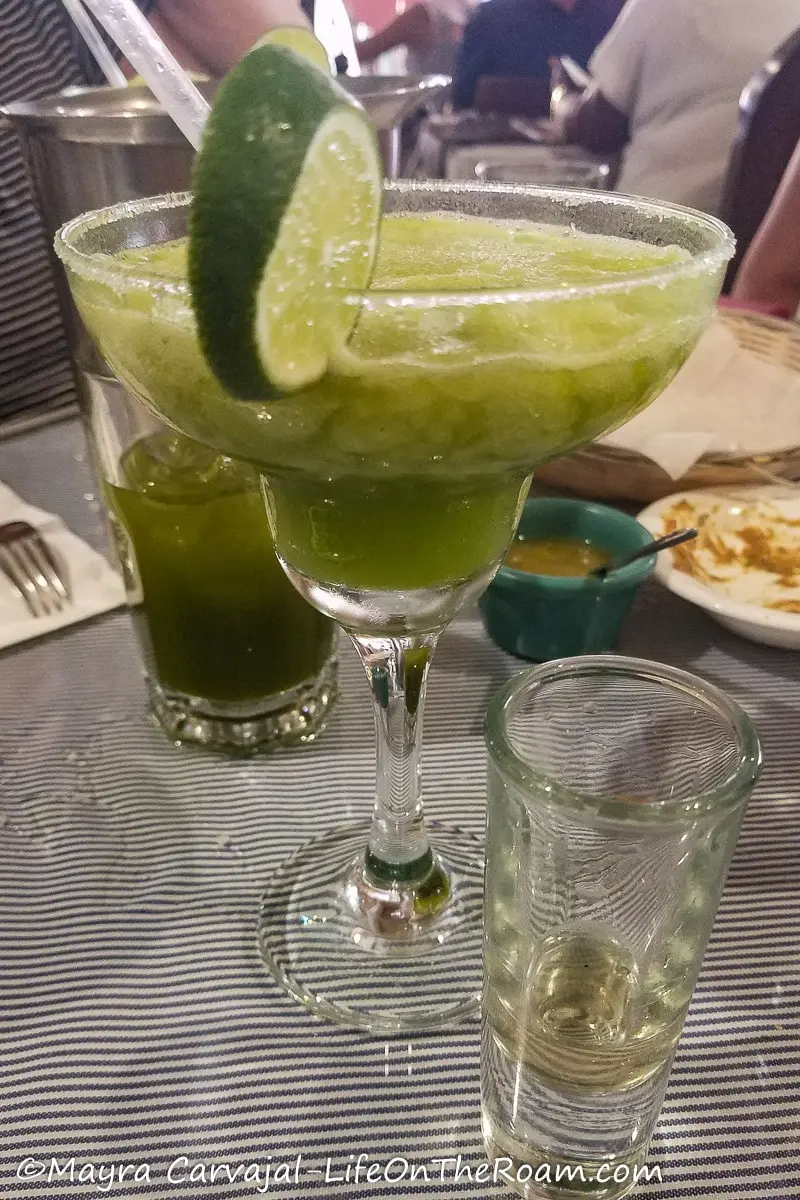
This is a popular place to try Yucatec cuisine. They serve classic regional dishes where you’ll find some vegetarian options such as the delicious papadzul.
A great place to try a Chaya Margarita. Chaya is a local nutritious green leaf similar to spinach. The idea of a Chaya Margarita may look and sound odd, but I must say that I enjoyed mine very much!
Merida Street Food Walking Tour: learn about fruits, spices, herbs, and the local culture as you try Yucatec dishes with a guided visit to the market. It includes a sit-down lunch at a restaurant. 15 people max.
Try local food with this tour, with a 4.9/5 rating based on more than 360 reviews.
Merida Cooking Class: learn to cook delicious dishes of Yucatan while you hear about local traditions. Includes a visit to the market and a taste of local fruits. Vegan and vegetarian options available.
Book this cooking class, with a rating of 4.9/5 based on more than 235 reviews.
Visit the Mayan World Museum (Gran Museo del Mundo Maya)
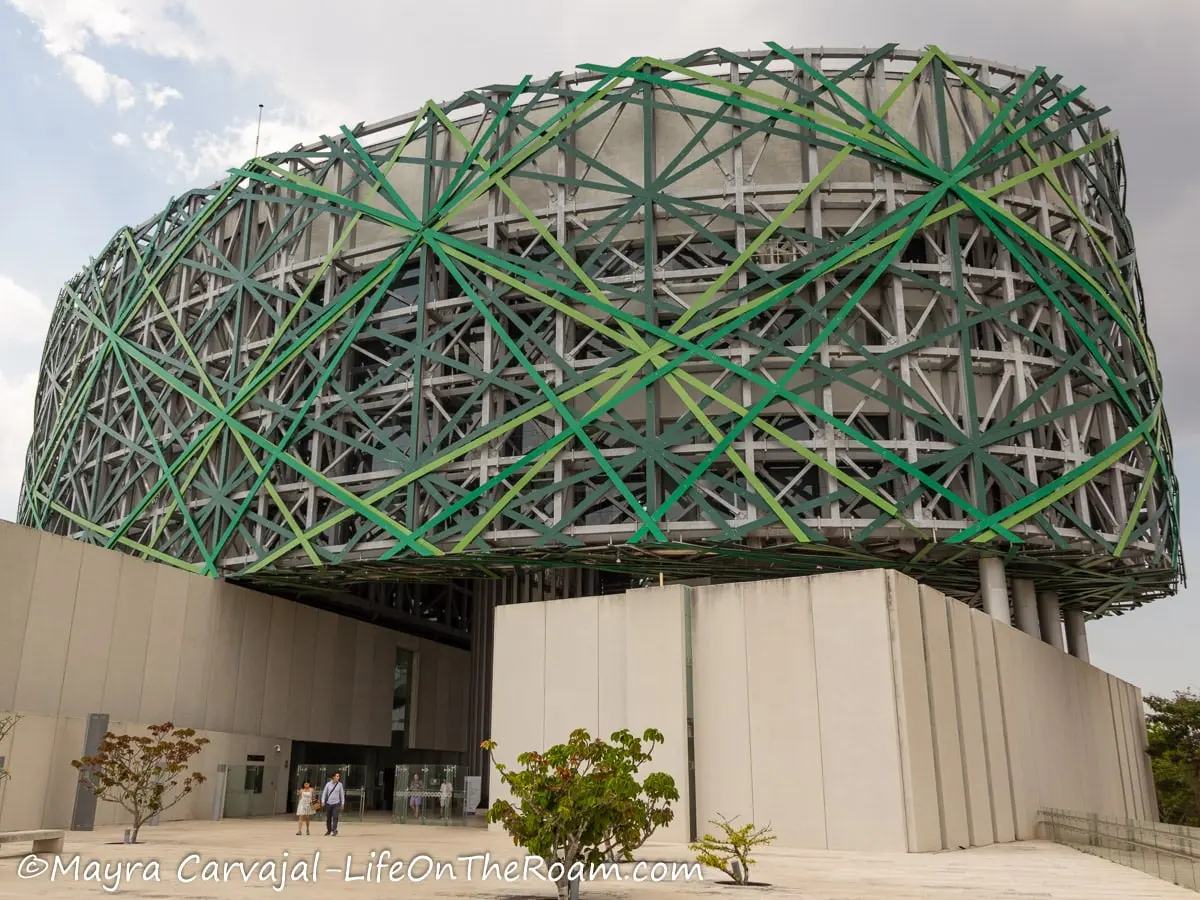
Even if you’re not that into museums you may want to give this one a try. Beyond the valuable art and artifacts you’ll see, the curatorship is fantastic (one of the best I’ve seen). The building has a striking design, inspired by the Mayan cosmogony: a sacred Ceiba tree that connects heaven, earth, and the underworld.
The museum is quite modern, with interactive displays (and signs in English) that offer a fun and engaging way to learn about the world of the Mayans and, in particular, the Mayab: the land of the Mayans in the Yucatan Peninsula.
The exhibit – located on the ground floor- covers the pre-Hispanic and colonial period as well as the present era. Because the Mayan culture isn’t extinct, it’s alive and kicking.
I loved the way objects are arranged in some sections, mixing archaeological artifacts with arts and crafts. Take a look at this one, showing the influence of nature in art and architecture through the ages in the form of building ornaments, pottery, and even hand-made figurines in paper and cloth.
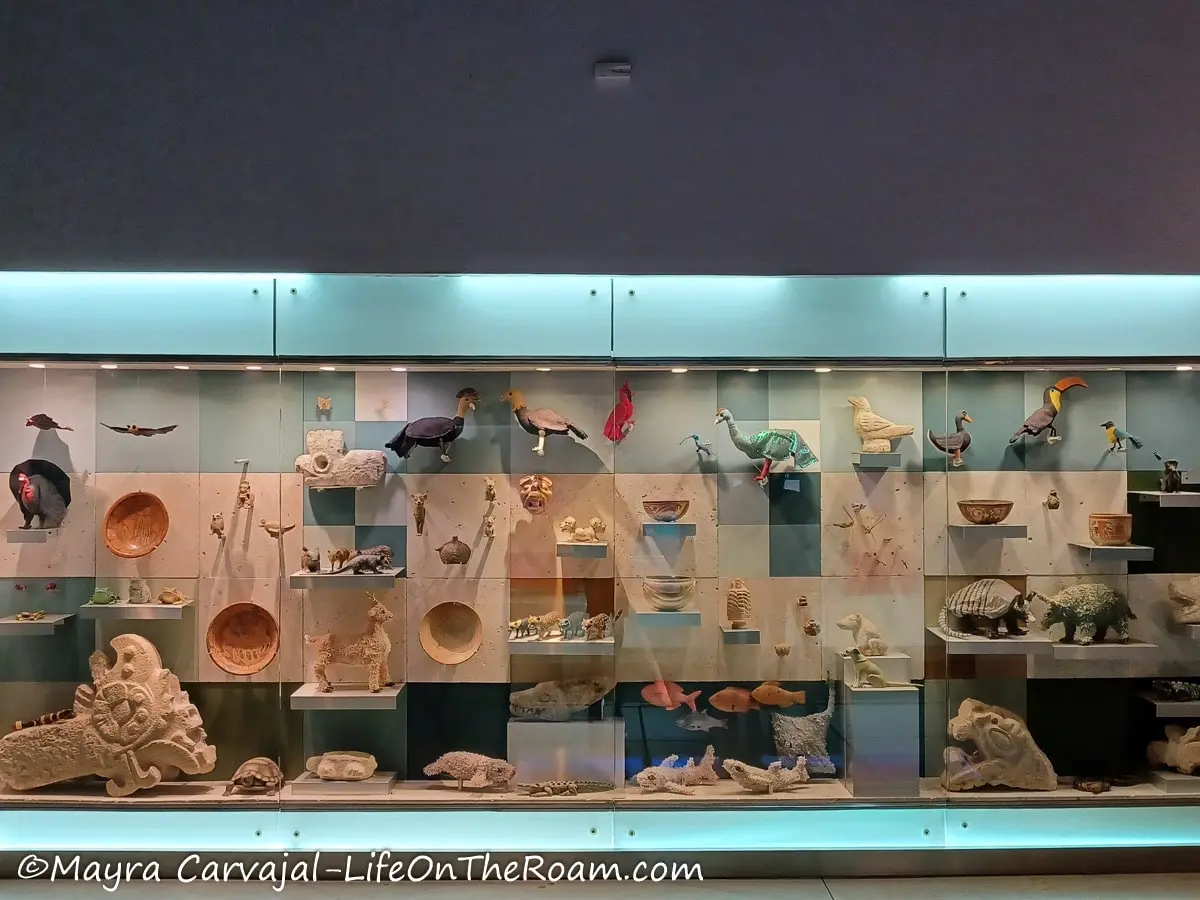
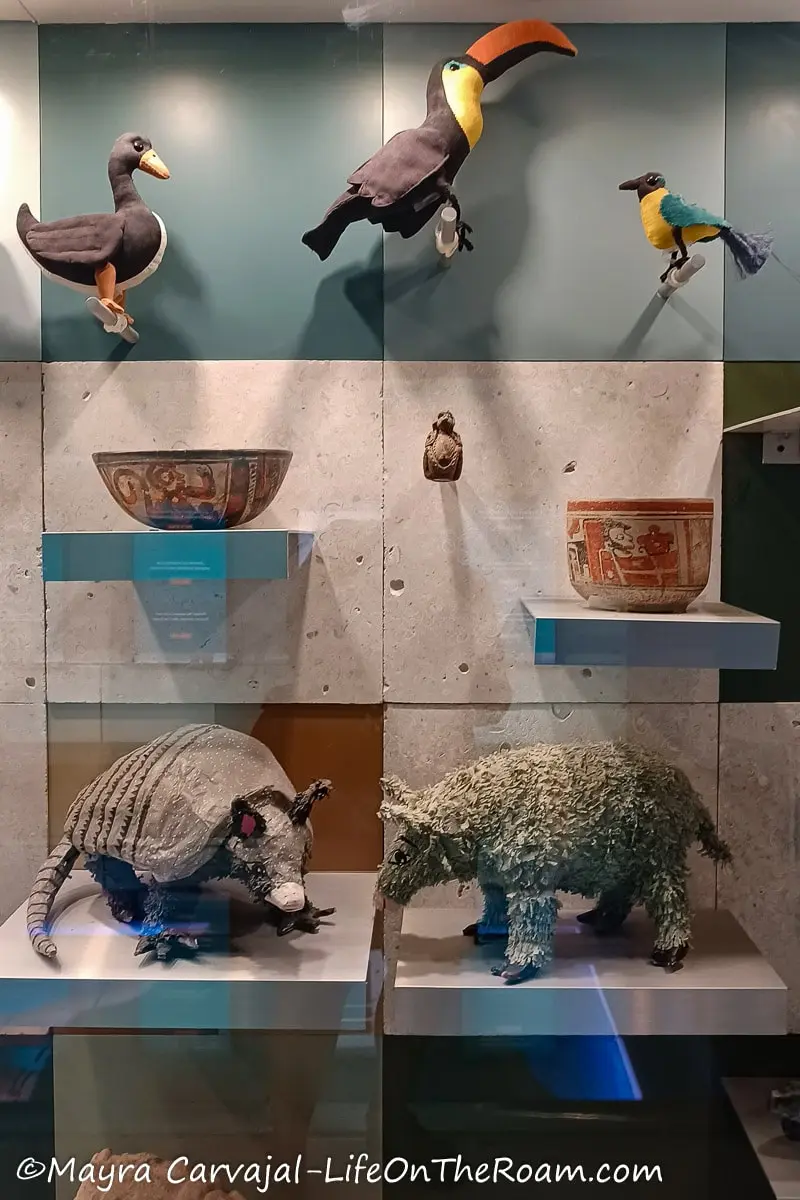
You can go deeper into interesting subjects, try fun things like learning to count as an early Mayan, and find answers to FAQ in the many interactive touch-screens around the museum.
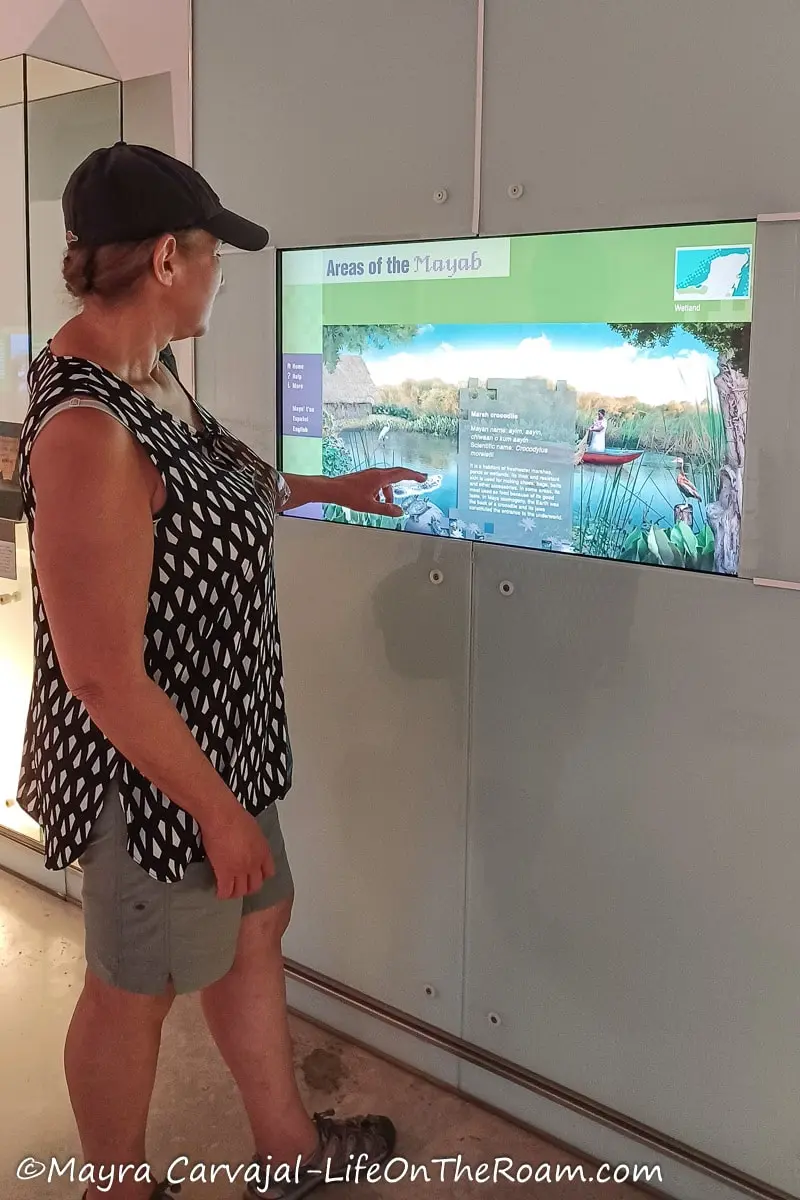
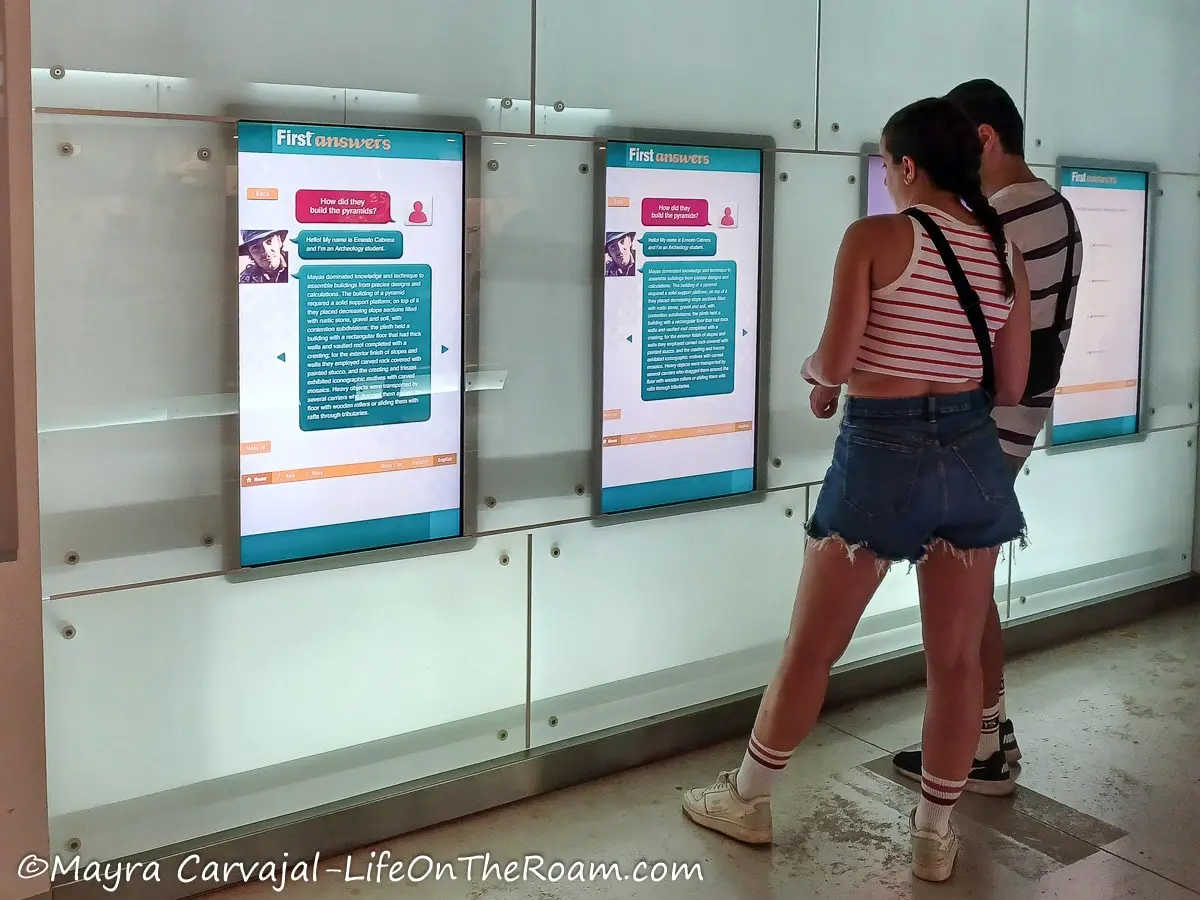
See below the colours and patterns that vary in the beautiful traditional dresses across the Mayab, the territory that covers the states of Quintana Roo, Yucatan and Campeche.
It’s interesting how they use embroidery pieces and wood carvings made by Yucatec artists to illustrate Mayan celebrations and traditions (gastronomy, herbal medicine, beliefs).
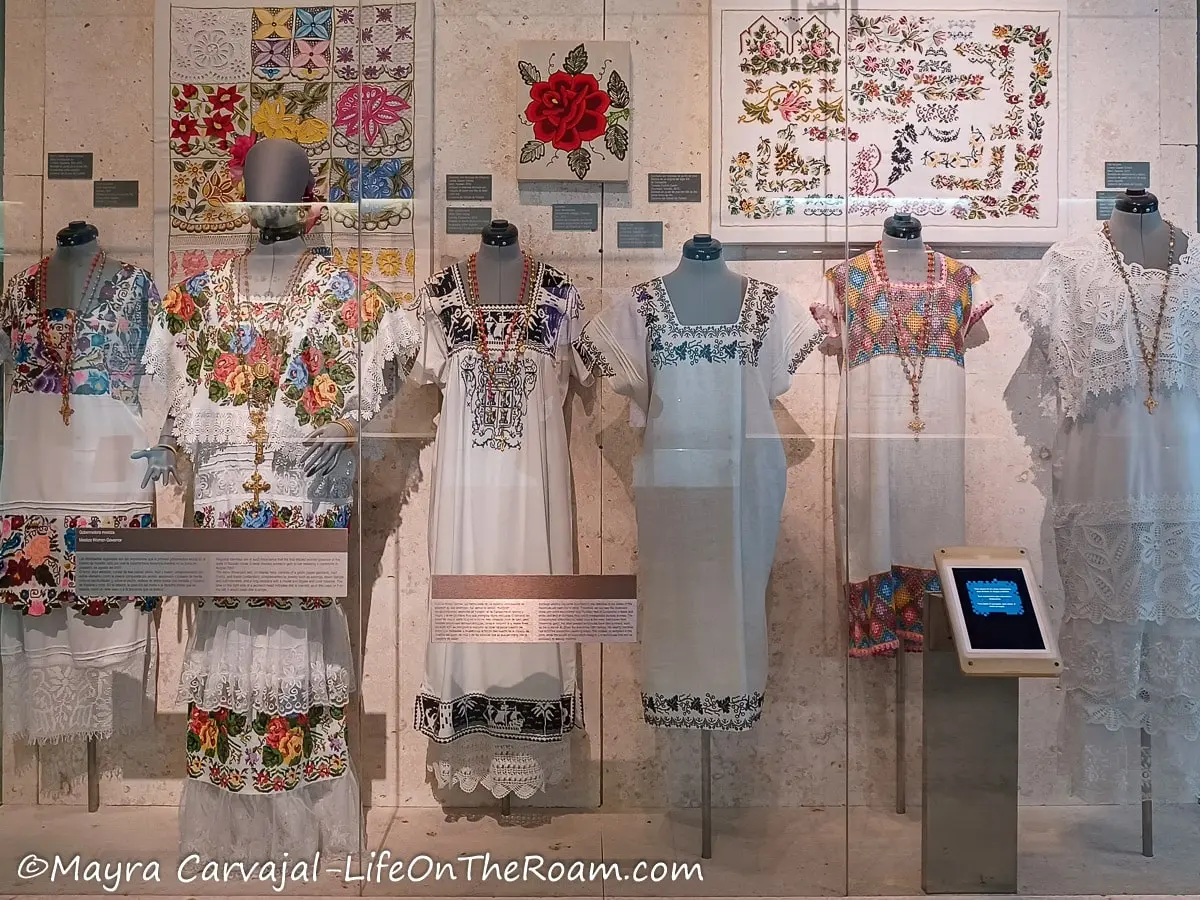
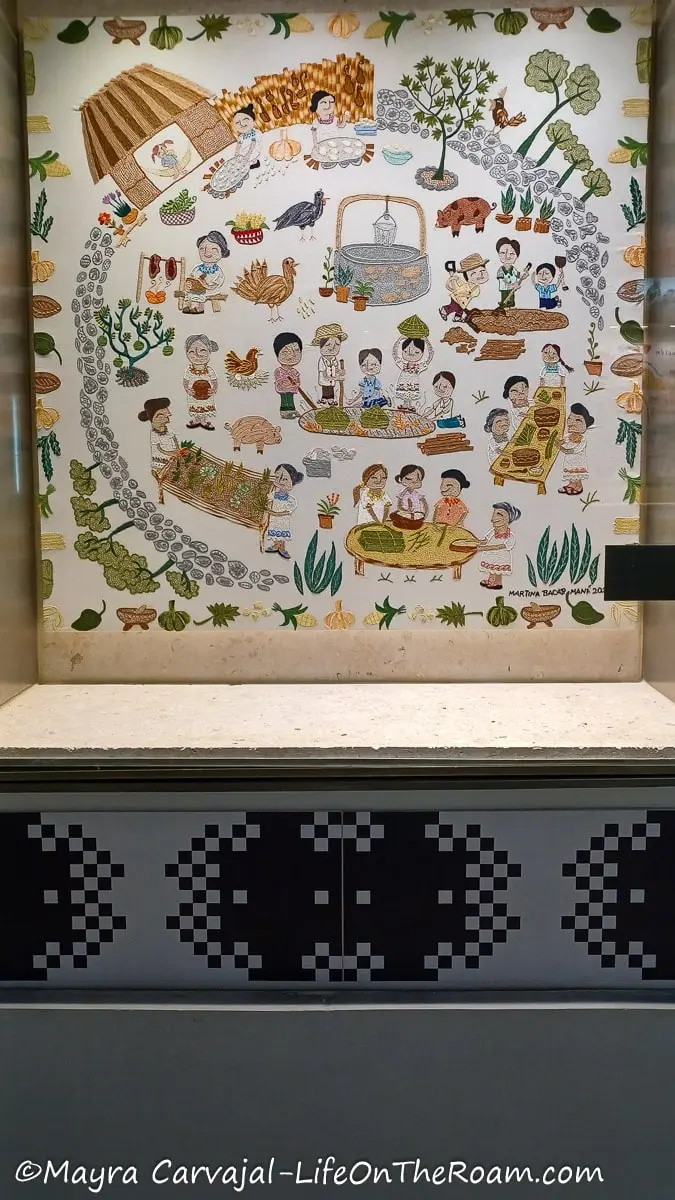
Dioramas and wood sculptures show the transition regarding religion, urban development, and taxes during colonization.
Mayan would pay taxes to the Spanish crown in the shape of cotton, beeswax, and salt.
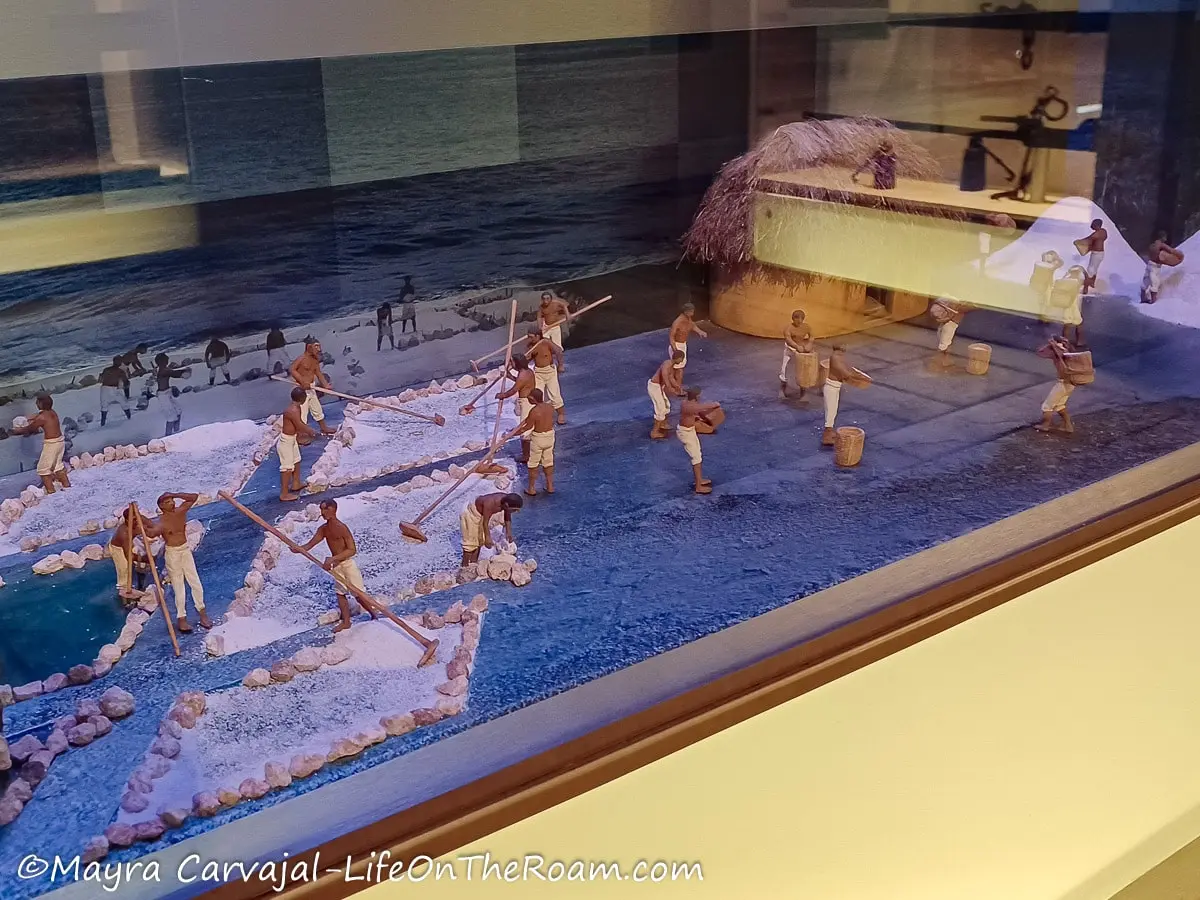
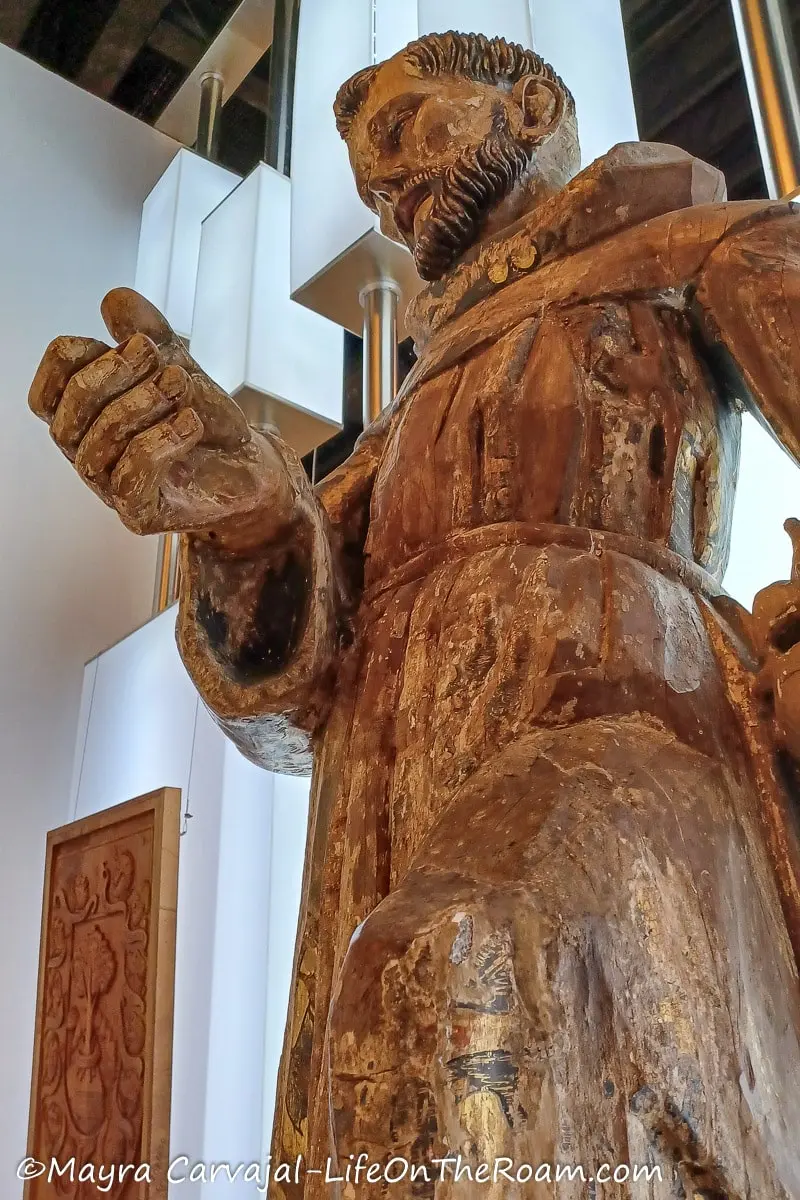
The pre Hispanic era section has beautiful pieces of pottery from sites like Mayapan and Uxmal, reproductions of archaeological sites, like the one at Ek Balam, and scale models of entire sites.
You’ll also see sculptures from famous sites like Chichen Itzá, 90 minutes away from Mérida by car.
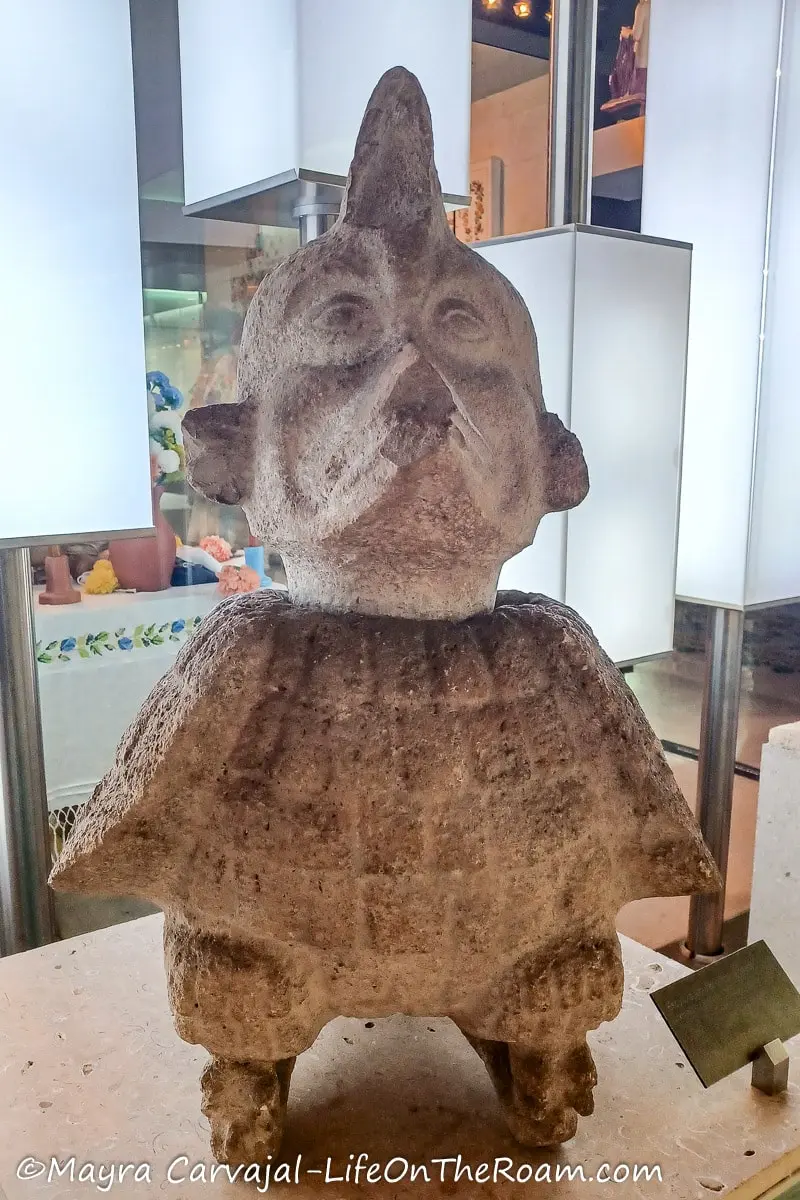

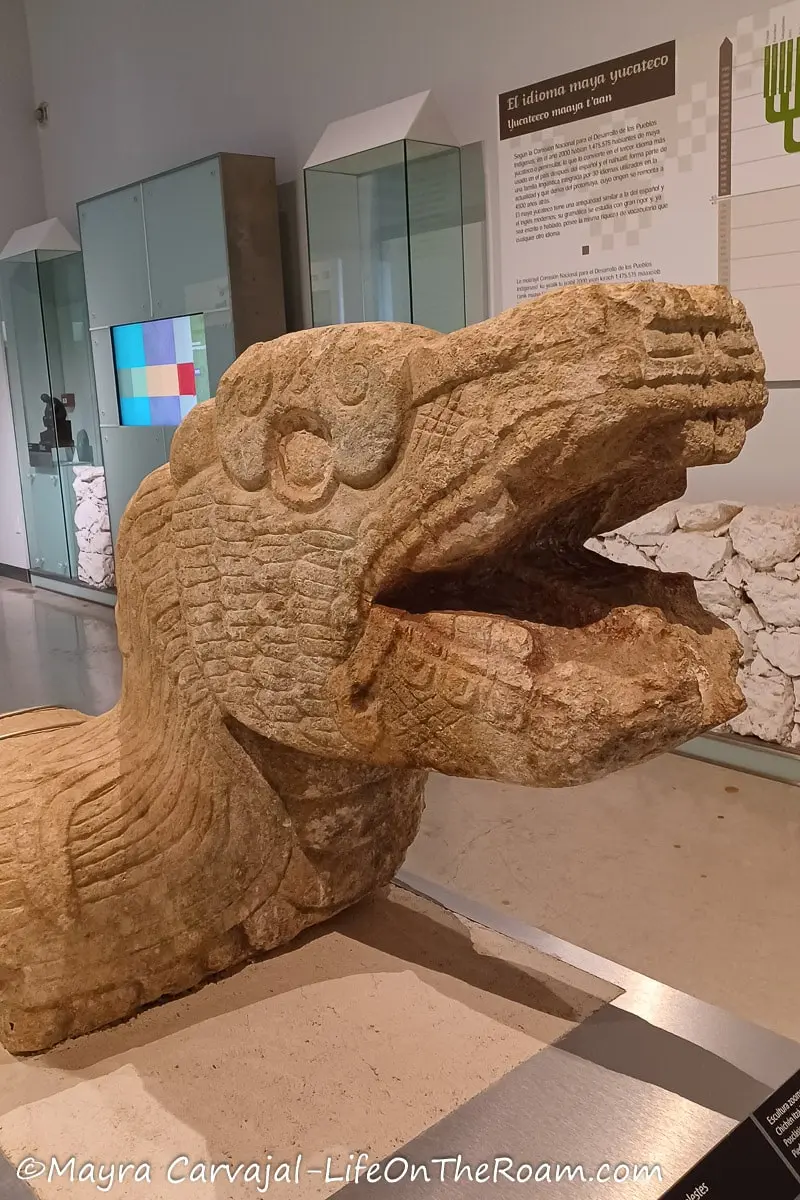
Chichen Itza Guided Tour: visit Chichen Itza, swim in a cenote, enjoy a lunch with typical food (included), and explore the yellow town of Izamal.
Book this tour, with a rating of 4.9/5 based on more than 185 reviews.
Guided visits in English take place Saturday and Sunday at 11AM. If possible, avoid visiting on Sundays as that day the entrance is free for Yucatan residents and the place is busier. Plan a 2-hour visit.
There’s a café on the upper level, on the underwhelming side.
Gran Museo del Mundo Maya
Calle 60 Norte, 299 E Unidad Revolucion; Open Wed. to Mon.: 9AM-5PM; General admission: MXN$150. The museum is not accessible by public transit, we took an Uber from the city centre.
Have Fun at La Plancha Park
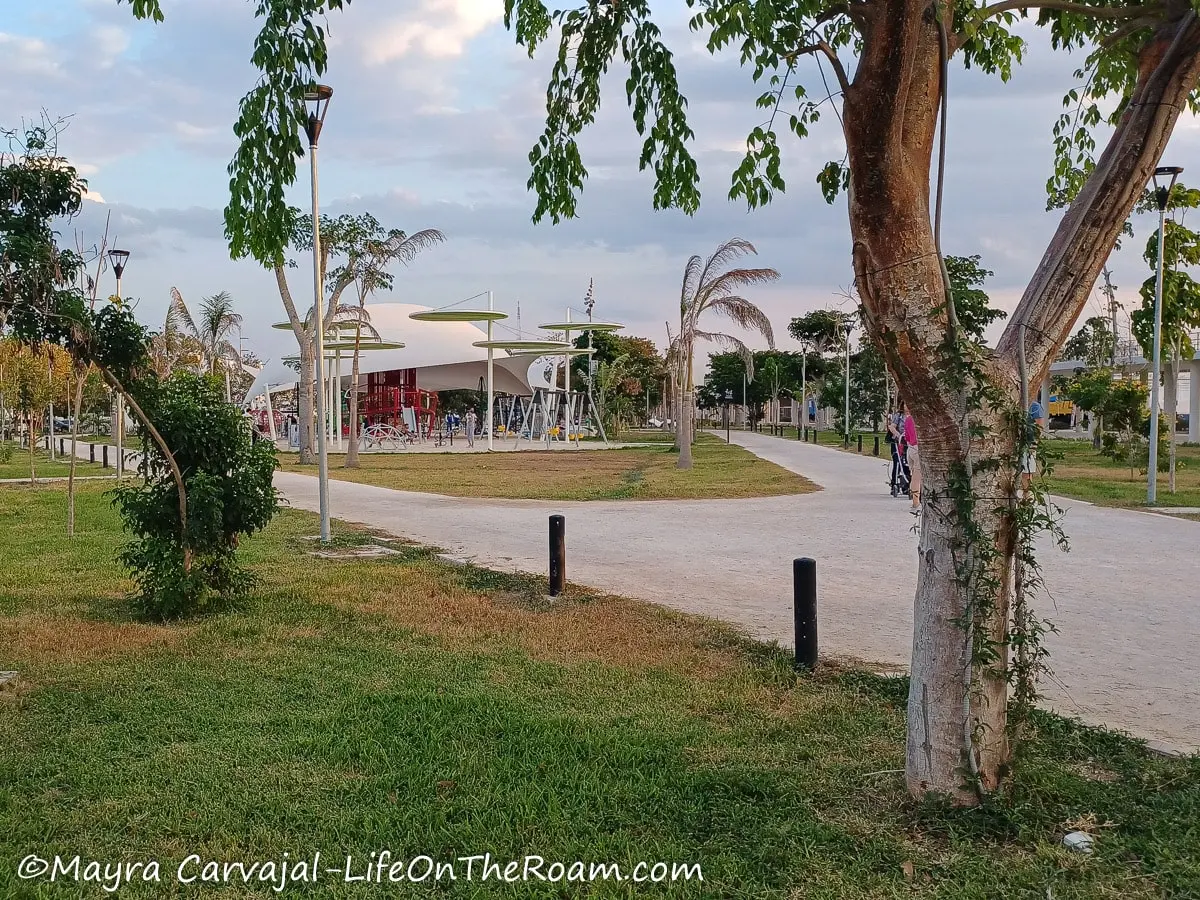
Gran Parque La Plancha is the newest park in Merida, a wonderful linear park that combines art, culture, and outdoor entertainment.
You can work on your step count by striding on any of the several walkways as you pass by outdoor gyms, picnic areas, playgrounds, and an interactive fountain with dancing jets that play with colour and music.
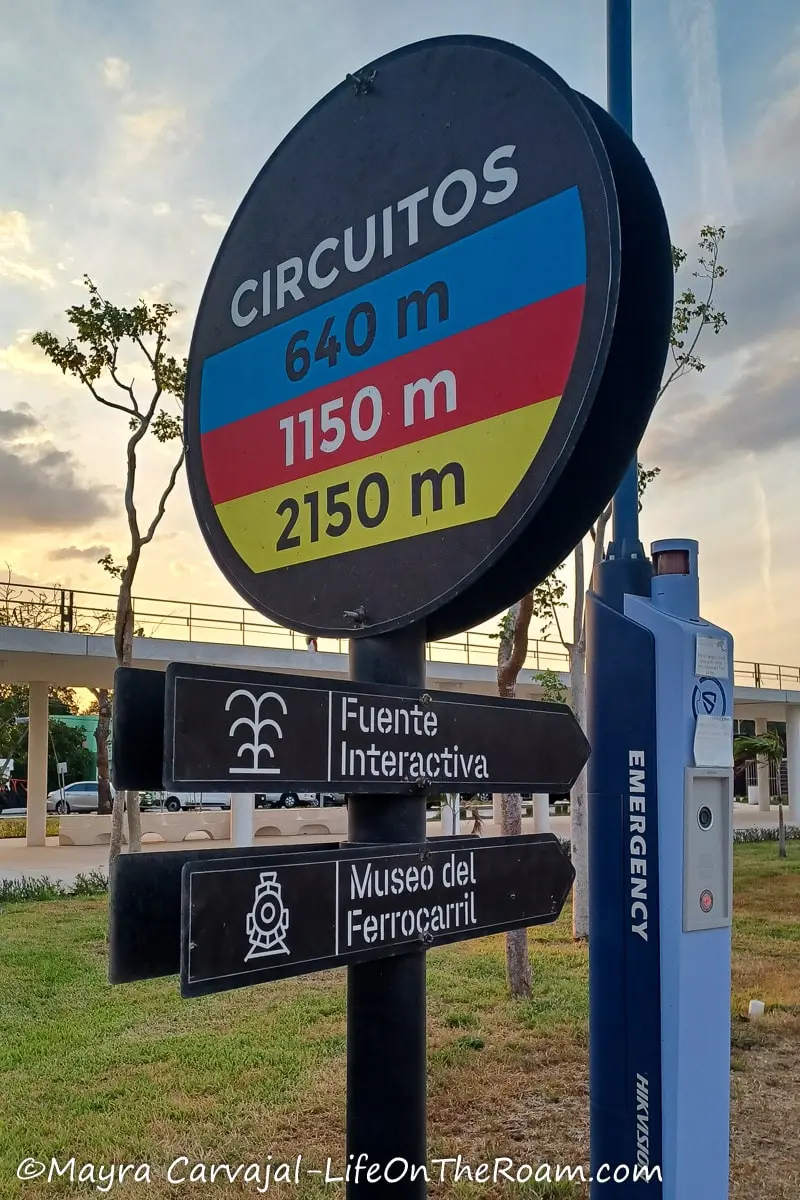
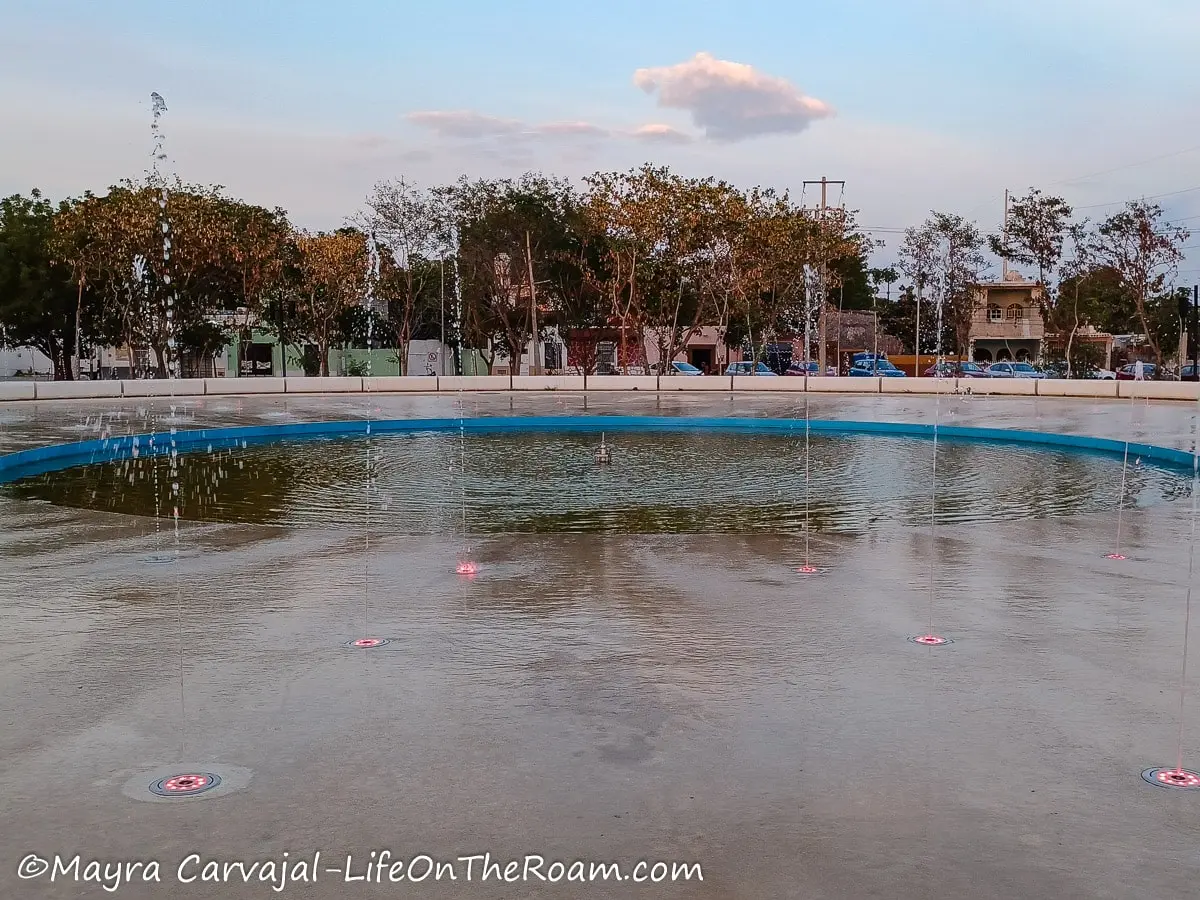
The widest section of La Plancha is on the north side, with additional walkways around a lagoon, an outdoor theatre, and open areas where you can join workout sessions late afternoon.
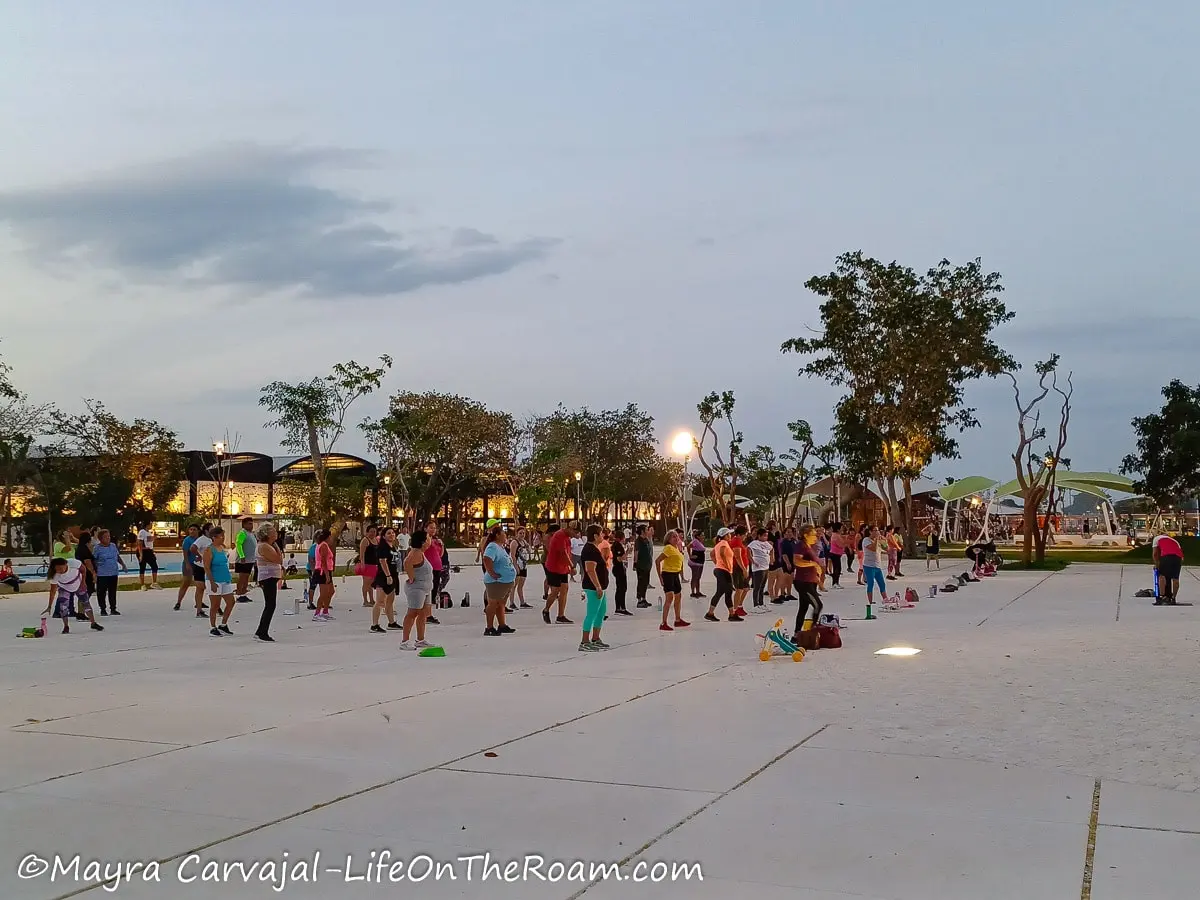
After a walk, run, or bike (there’s a bike path) you can grab a drink or a bite to eat at the huge food court. There’s also a scattered display of old train cars (Railroad Museum) painted in bright colours and the Museum of Light.

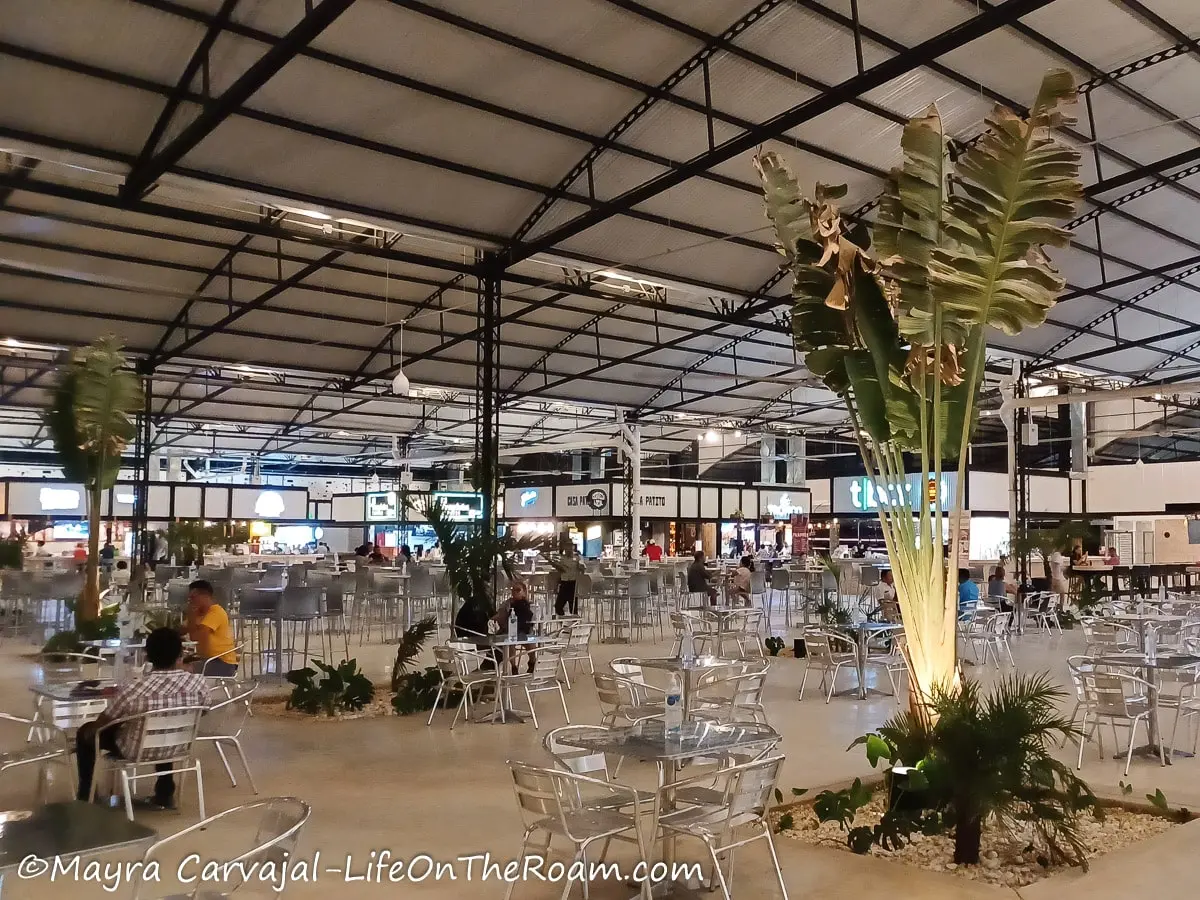
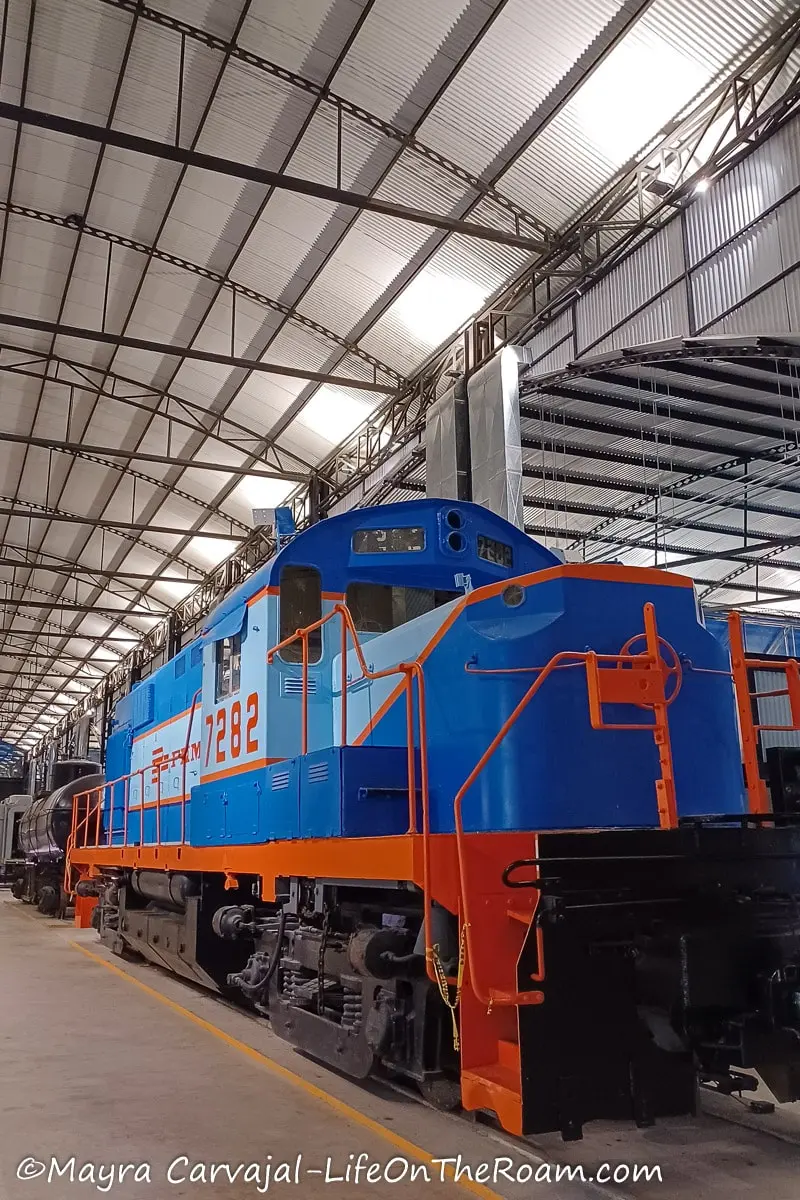
You can access Gran Parque La Plancha at the intersection of Calle 43 and Calle 50 (and the adjacent streets).
Go to the Museum of the City of Merida (Museo de la Ciudad de Mérida)
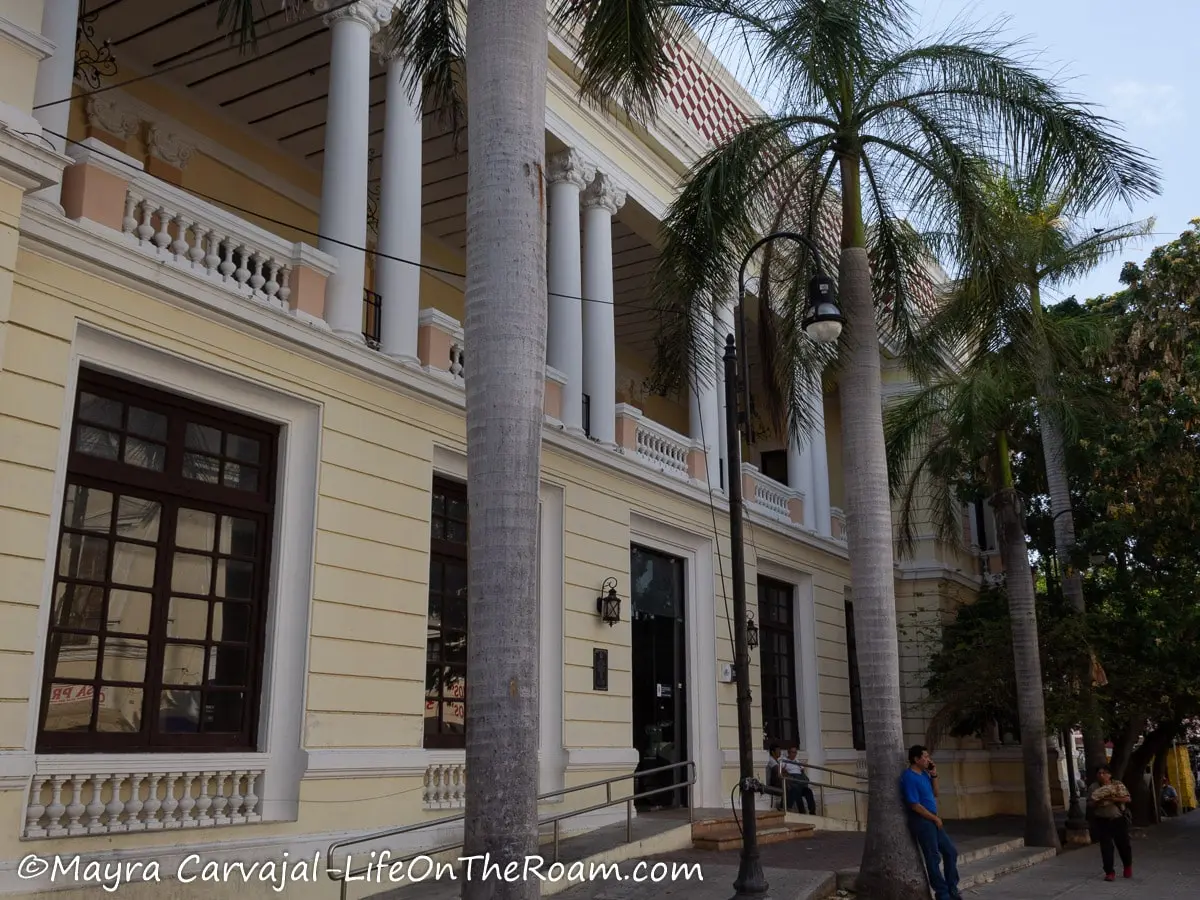
See how Merida evolved from a pre-Hispanic settlement called T’ho (the tenth oldest city in Mexico dating back to 1240) to a colonial town when Spaniards took over in 1542, to the urban centre you see today.
The exhibit is displayed across two rooms (with signs in English) located on the ground floor of the old post office, a historic and architectural heritage site of Yucatan from 1908 in French Neo-classical style.
Room 1 covers the pre-Hispanic period, when a Mayan site with three major complexes occupied this land.
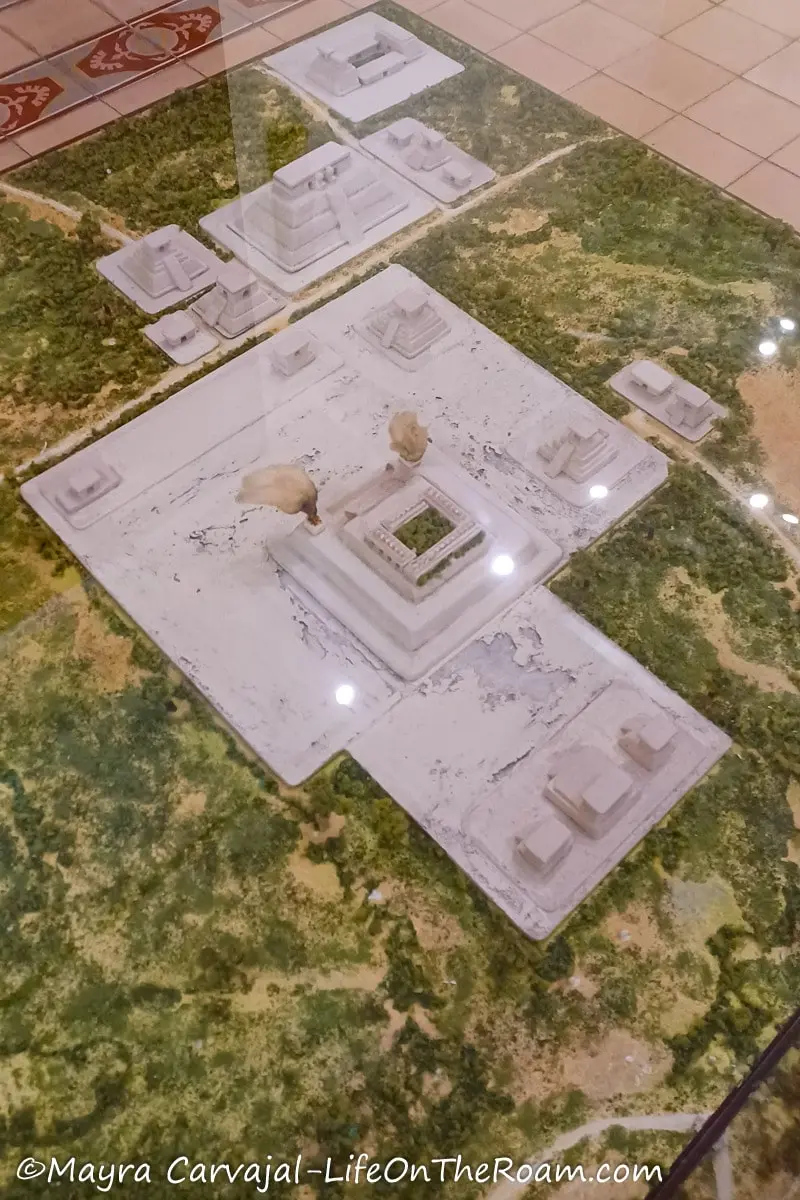
You’ll see some architectural details that adorned the buildings across Yucatan, typical of the Puuc style, like these elements that create lattices found on a site in Campeche.
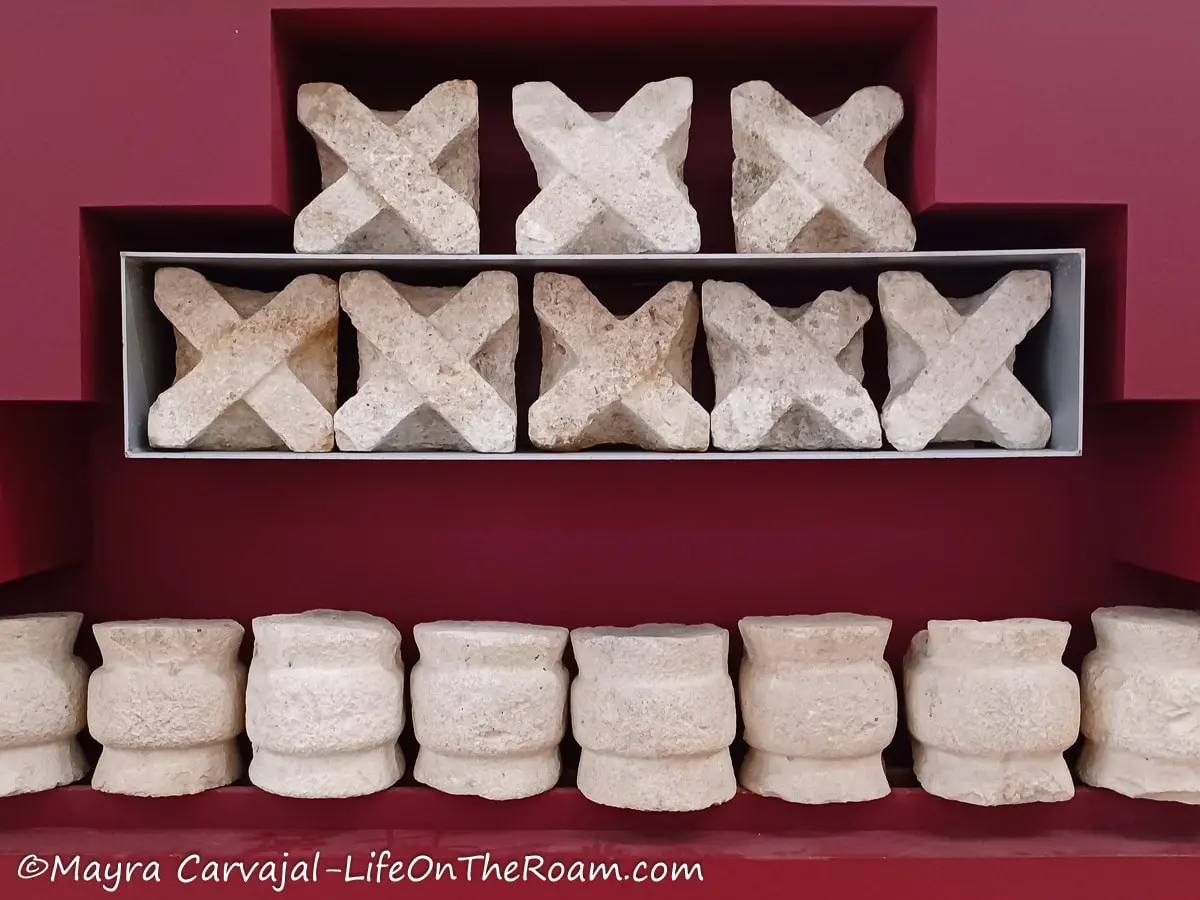
They reminded me of the ones I saw at Uxmal, an important archaeological site (actually, my favourite!) located one hour and change south of Merida.
Private Tour to Uxmal and Chocolate Museum: guided visit to Uxmal, the chocolate museum (sample hot chocolate Mayan Style), and a cenote where you can take a dip.
Visit Uxmal with this tour, with a rating of 4.9/5 based on more than 40 reviews.
You’ll see a few pieces of pottery, which were used not only for daily life, but also to accompany people in their afterlife as they were buried with the dead.
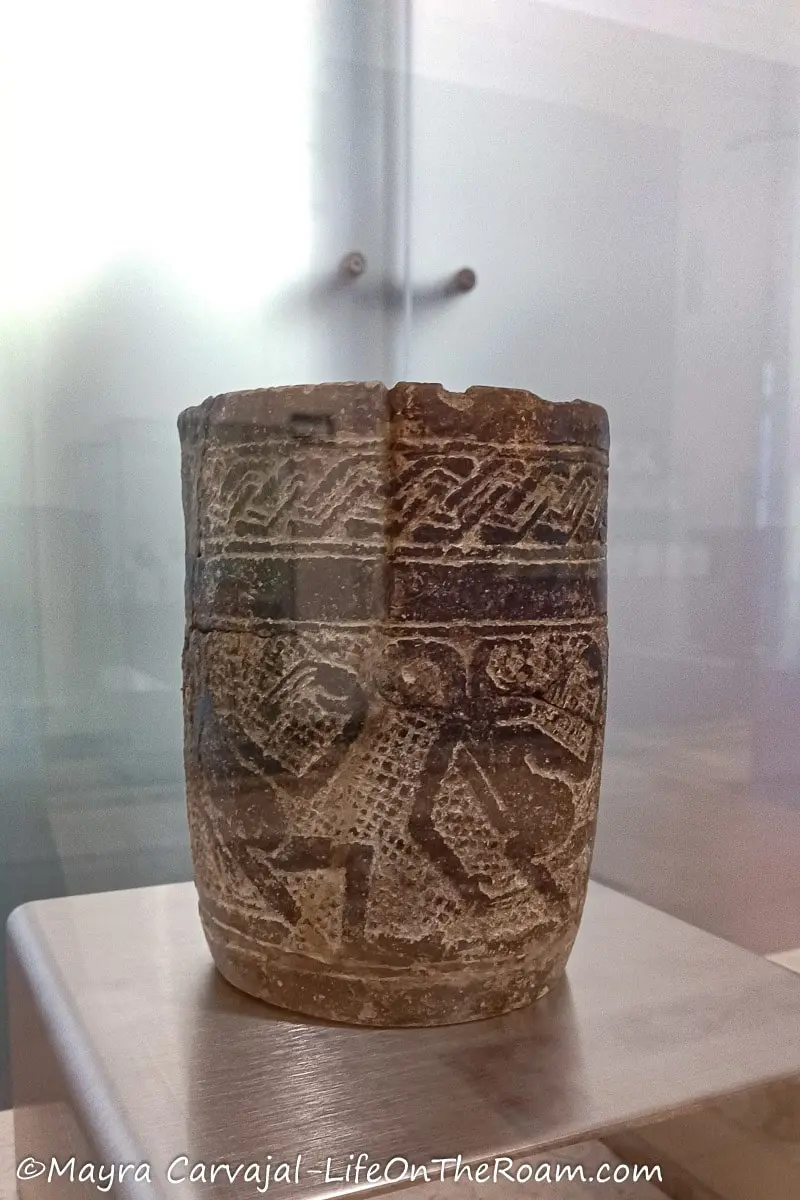
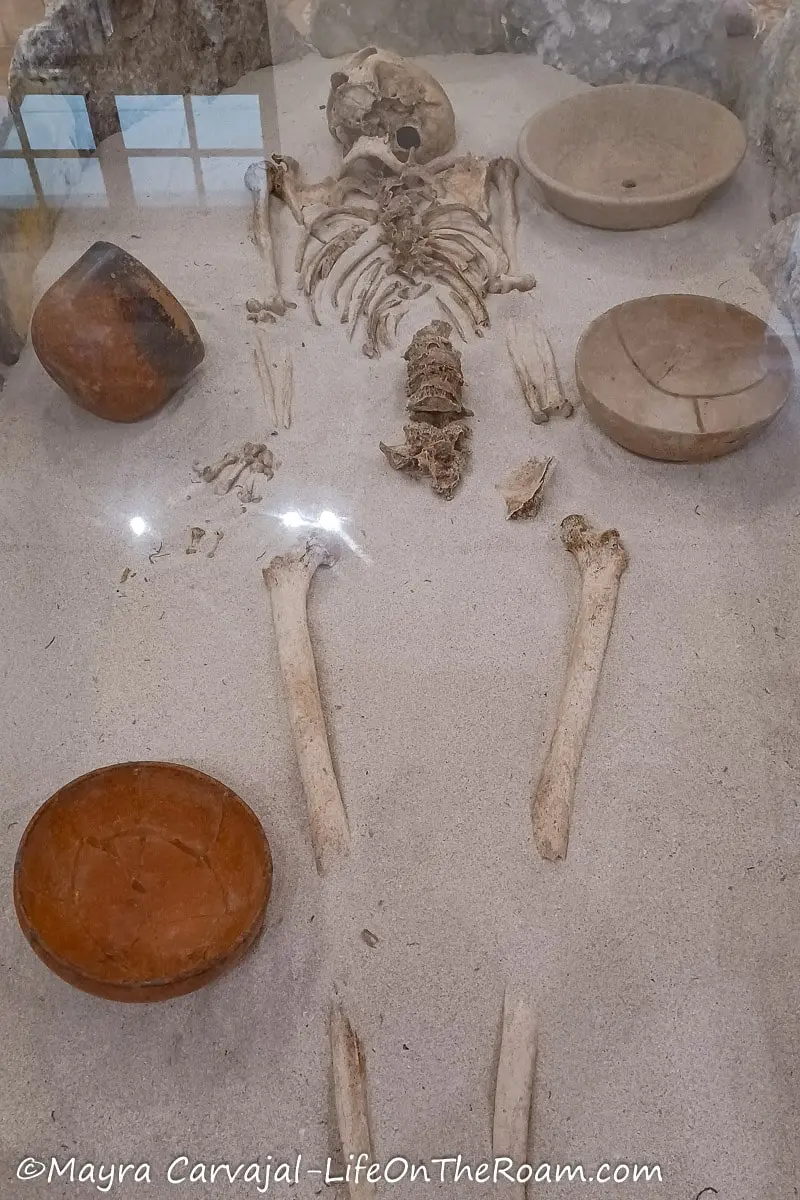
1542 was the year when everything changed forever for the indigenous population: Francisco de Montejo invaded T’ho and founded Mérida on top of the latter, kicking off the colonial period, which you can learn about in Room 2.
You’ll see a few pieces reflecting the architecture and ornamentation of this era and the influence of the Catholic Church, who was in charge of schools, hospitals, and the evangelization program, which relied heavily on imagery such as wooden statues representing saints.
You’ll also find a scale model of the cathedral and some information regarding iconic buildings in the city.
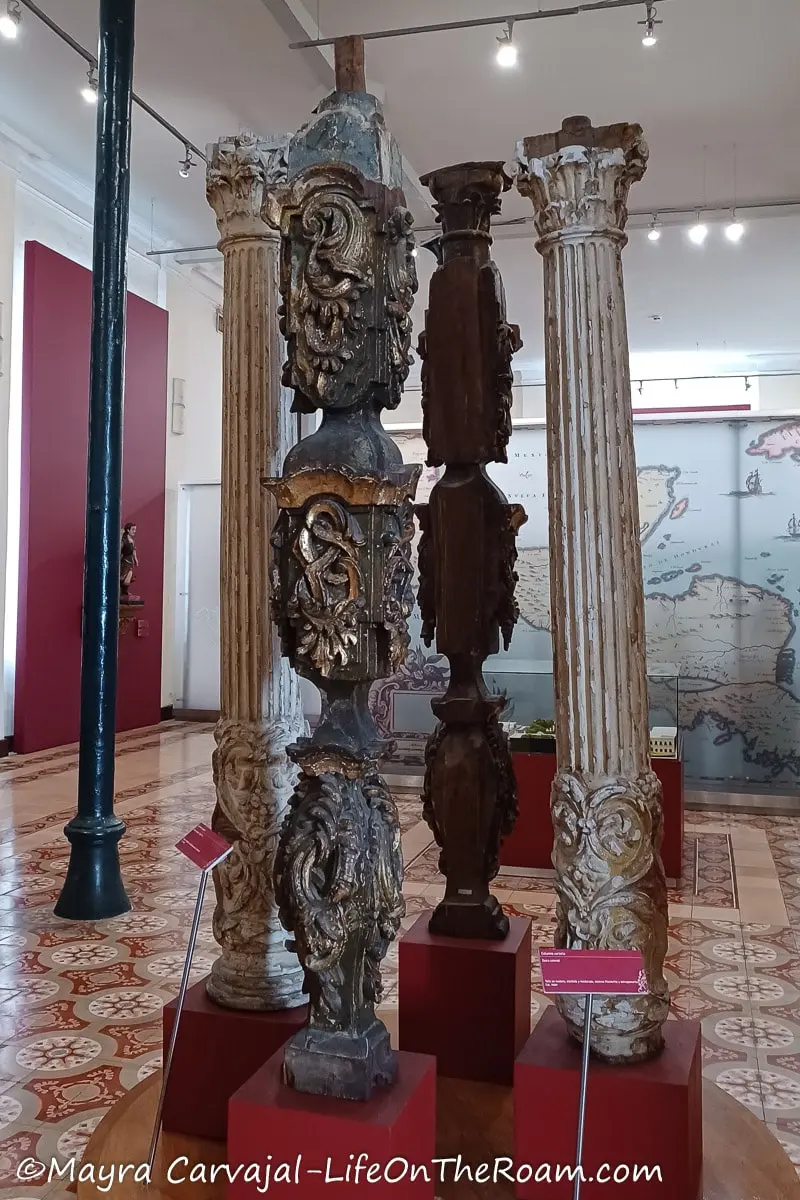

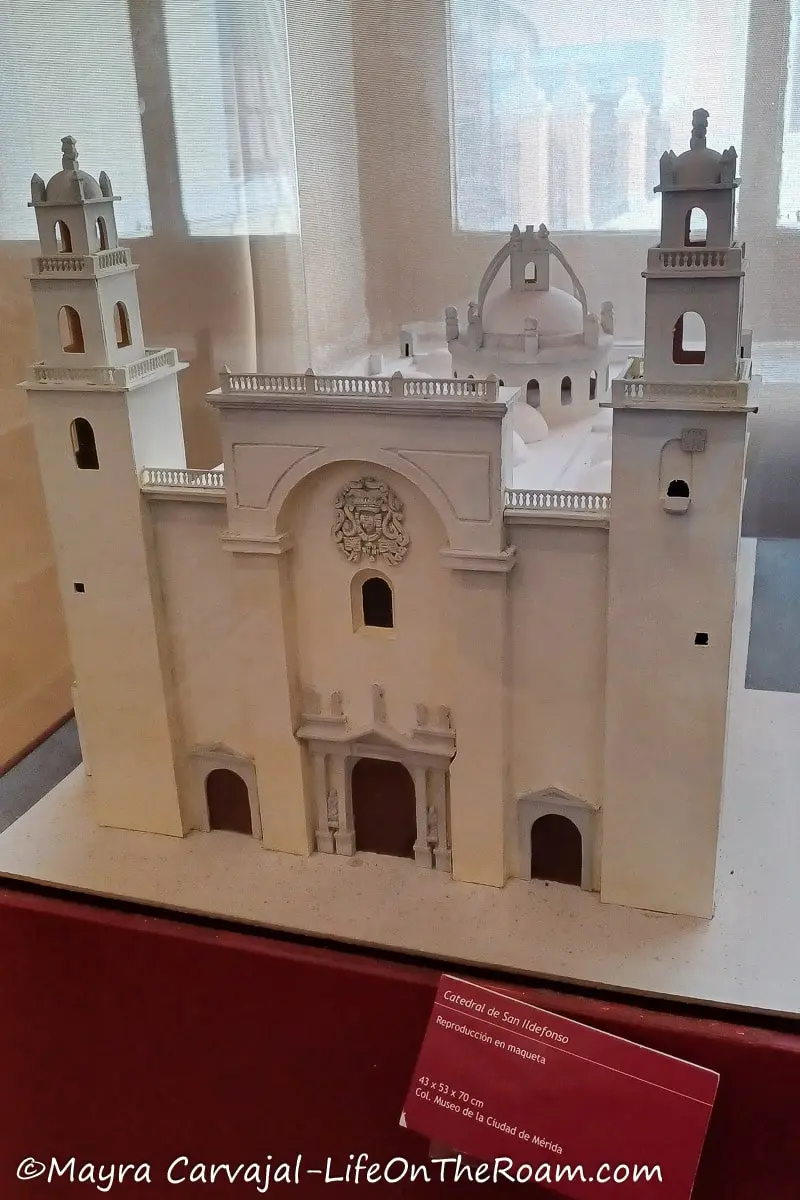
In Rooms 3 and 4 you can learn about the economic boom of Merida in the 19th century thanks to the sisal production and the railway system. This brought a lot of money to the few who owned the haciendas and a lot of pain to the Mayans due to slavery-type conditions and seizing of their land. It all ended up in a revolution.
The few that amassed fortunes built luxurious mansions along Paseo Montejo and filled them with luxurious objects to match.
The last room is dedicated to famous Yucatecs and their contribution in different fields.
As an added bonus and a pleasant surprise there are two rooms with temporary exhibits on the second floor of the museum, in the Municipal Art Gallery.
Open Tue. to Fri.: 9AM-6PM, Sat. & Sun.: 9AM-2PM. Free admission
Walk (or Bike) Along Paseo de Montejo
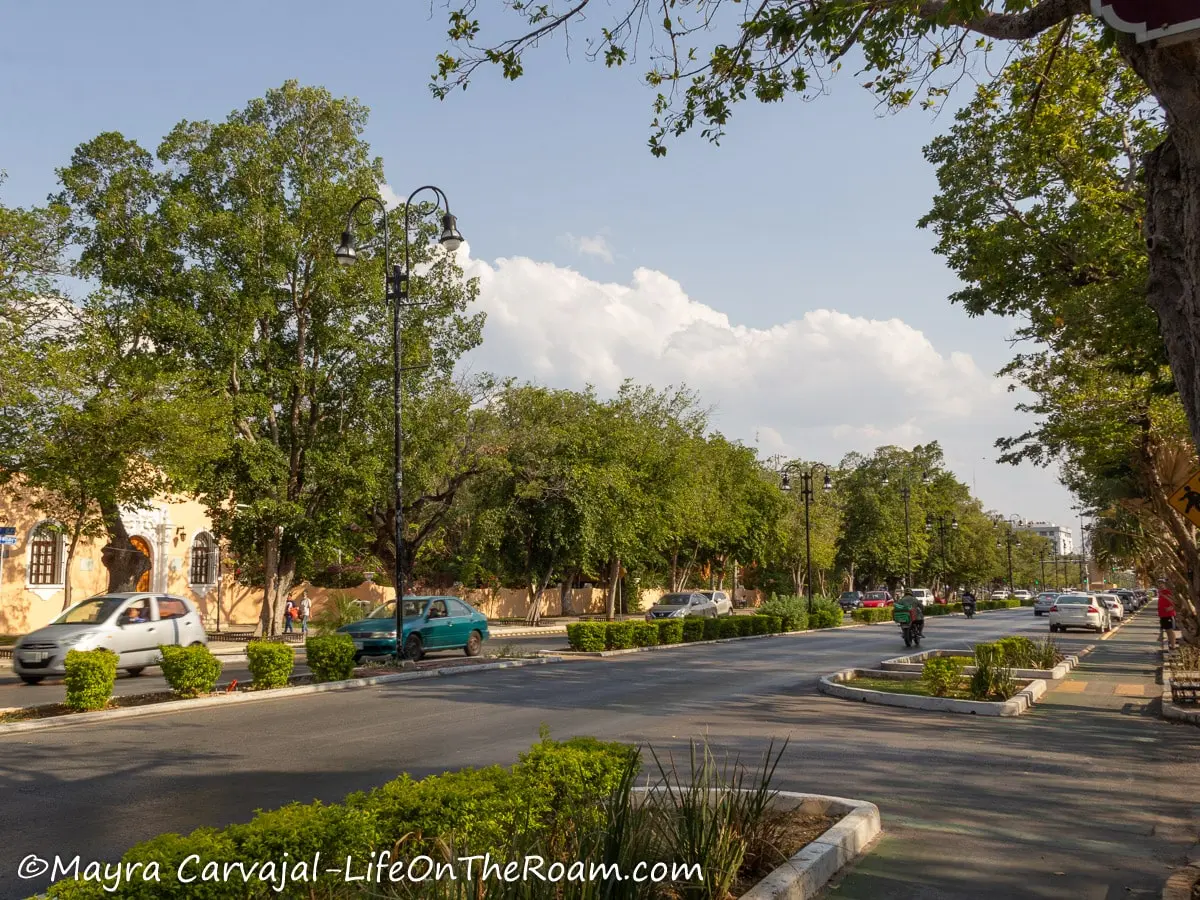
Paseo de Montejo is the Champs Elysées of Mérida, inspired by Paris’ famous avenue. Plans for its construction started at the very end of the 1800s, but it wasn’t until 1904 that the first car was driven on it.
I enjoyed strolling along the wide, tree-lined sidewalks looking at sculptures and the 19th century stately mansions in neo-classic, neo-gothic, and Baroque styles.
This is where la crème de la crème lived, hosting the most amazing parties where you could show off how rich you were thanks to the sisal (henequen) industry.
Some of the gorgeous mansions like Quinta Montes Molina (No. 469) and Montejo 495 became museums. Others became boutiques, cafés, and restaurants.
You can sign up for a free bilingual guided tour of Paseo de Montejo at the Tourist Info Office across Plaza Grande in the Historic Centre, running Monday to Saturday from 6:30PM to 8PM (25 people max so make reservations ahead).
Extra tip: every Sunday morning, until mid-day, Paseo de Montejo becomes a pedestrian street where you can walk or bike. You can rent bikes by the hour via an app at any of the Bici Estación (bike rental stations) or rental stores around the Paseo. The avenue has dedicated bike lanes.
Check out the Monument to the Homeland (Monumento a la Patria)
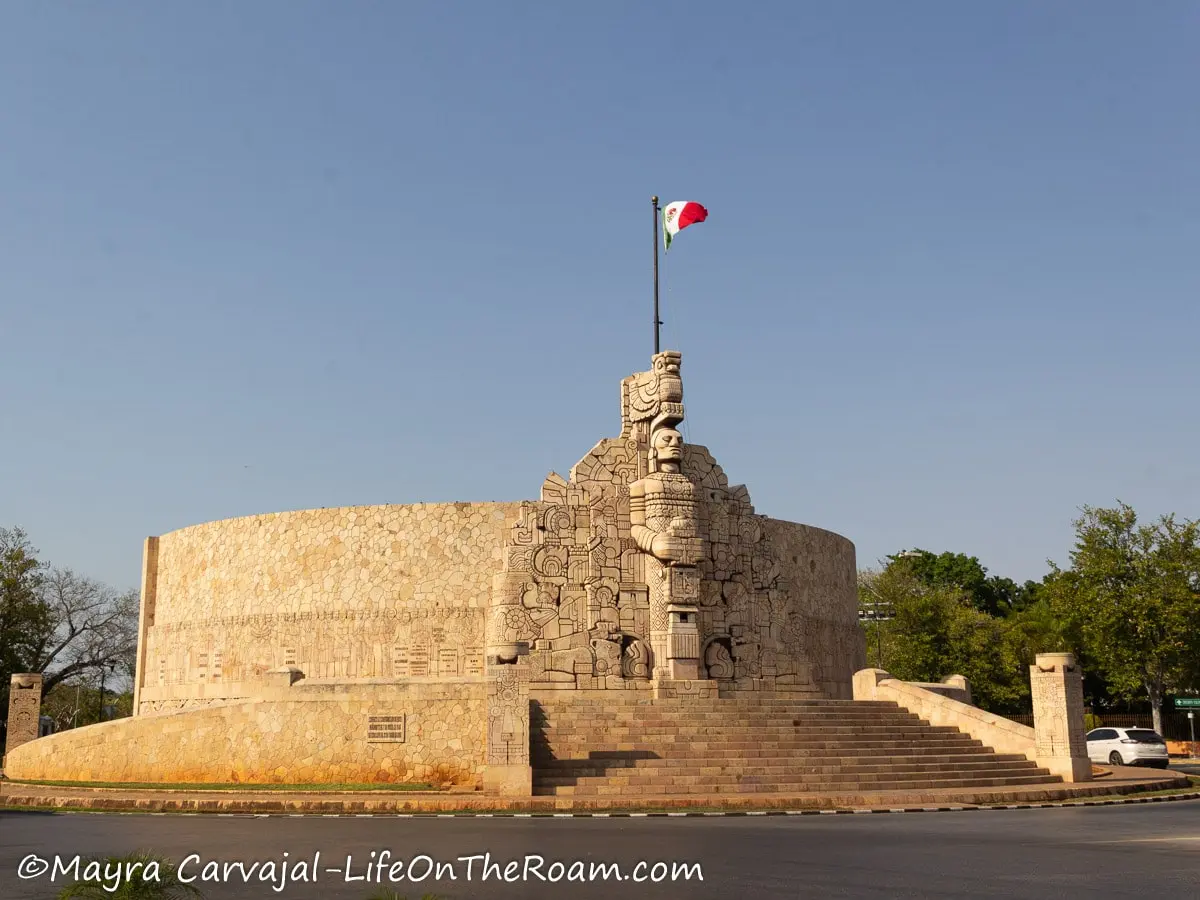
I loved the amount of detail, the symbols and beautiful carvings that make it one of my favourite monuments in Mexico.
Hand carved in stone by Colombian sculptor Rómulo Rozo, it sits on a big roundabout that marks the north end of Paseo de Montejo. As you walk around it you’ll see a broad depiction of the history of Mexico from the establishment of Tenochtitlan (the Aztec settlement known today as Mexico City) until the middle of the last century.
On the south side you’ll find a central figure wearing a pectoral decorated with seashells and the ubiquitous serpents.
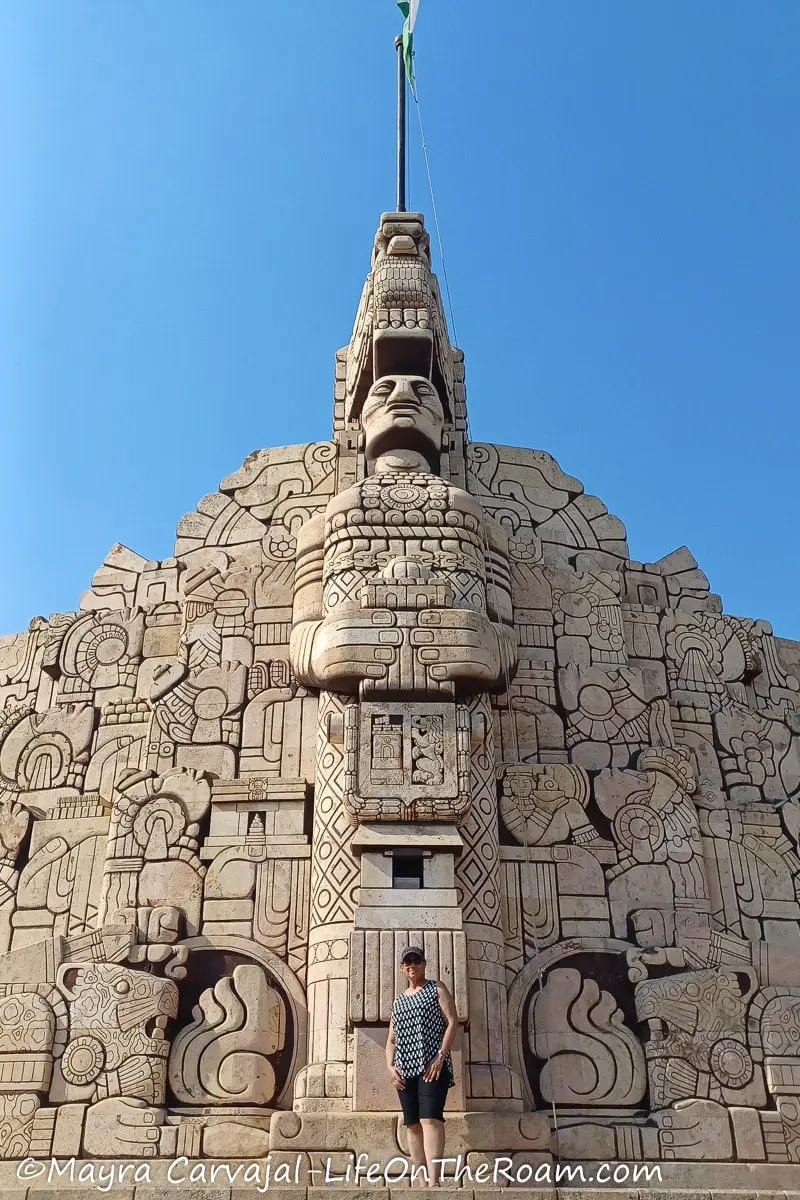
Right under the hands you’ll see the coat of arms of the city of Merida, one of several references to Yucatan sprinklered around the monument, such as the Chaac Mol (a seated figure holding a bowl) located immediately to the right.
At the bottom, on each side, you’ll see a tiger representing the Mexican army.
Walk around to see key moments of Mexico’s timeline until you reach the north side, where a lower wall with the coat of arms of the states of Mexico form a pond that represents Lake Texcoco in CDMX.
Inside there’s a sculpture of an eagle on a cactus devouring a serpent, a similar image to the one you see on the Mexican flag and the national coat of arms.
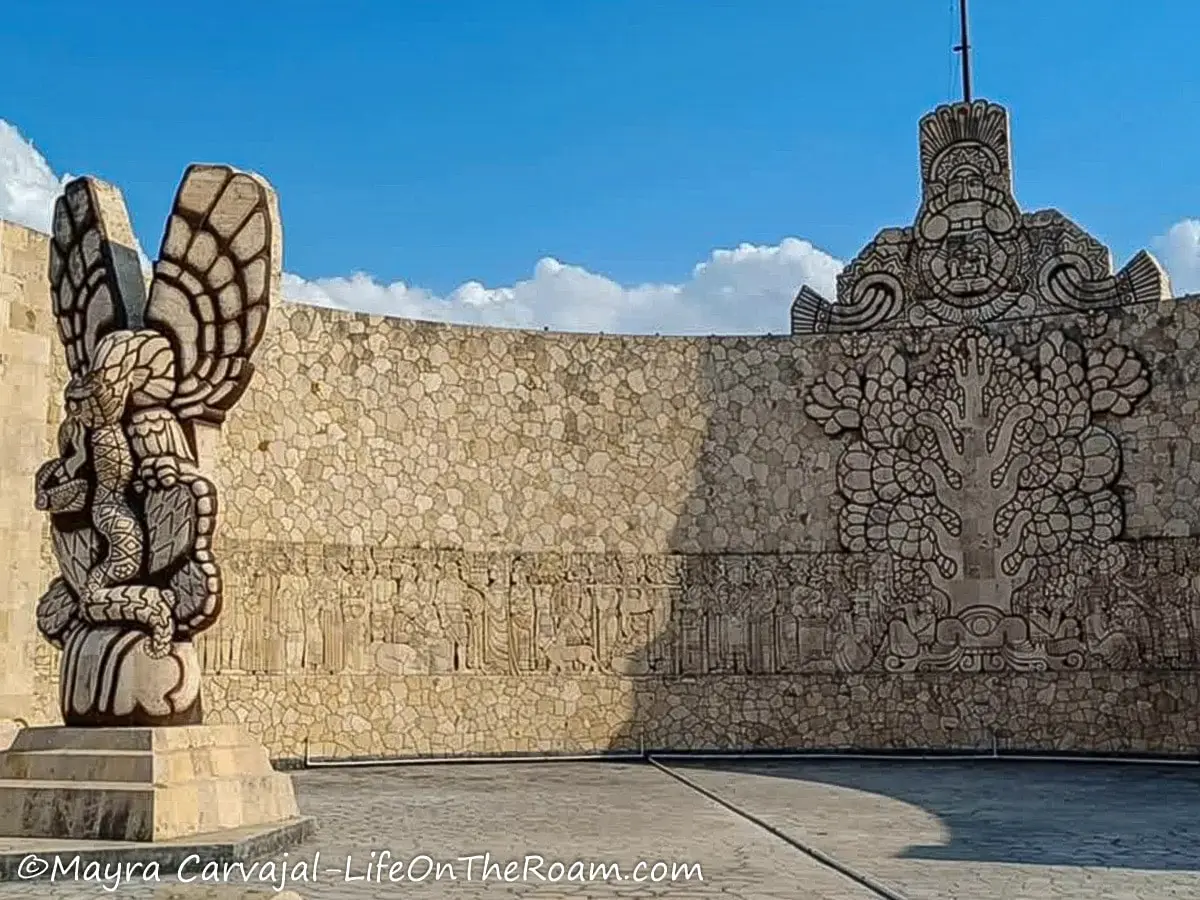
According to the legend, Huitzilopochtli -the Aztec god of war- told the Mexica people to be on the lookout for that scene as that would be the place to build Tenochtitlan.
In the background the main symbol is the ceiba tree, an icon in Mayan cosmography that connects the three levels of the universe.
Take some time to walk slowly around the monument as you’ll also find many references to the flora and fauna of Mexico.
On Fridays, from 8PM to 10PM, Monumento a la Patria becomes the canvas of a video mapping.
Fernando Pacheco Cultural Centre
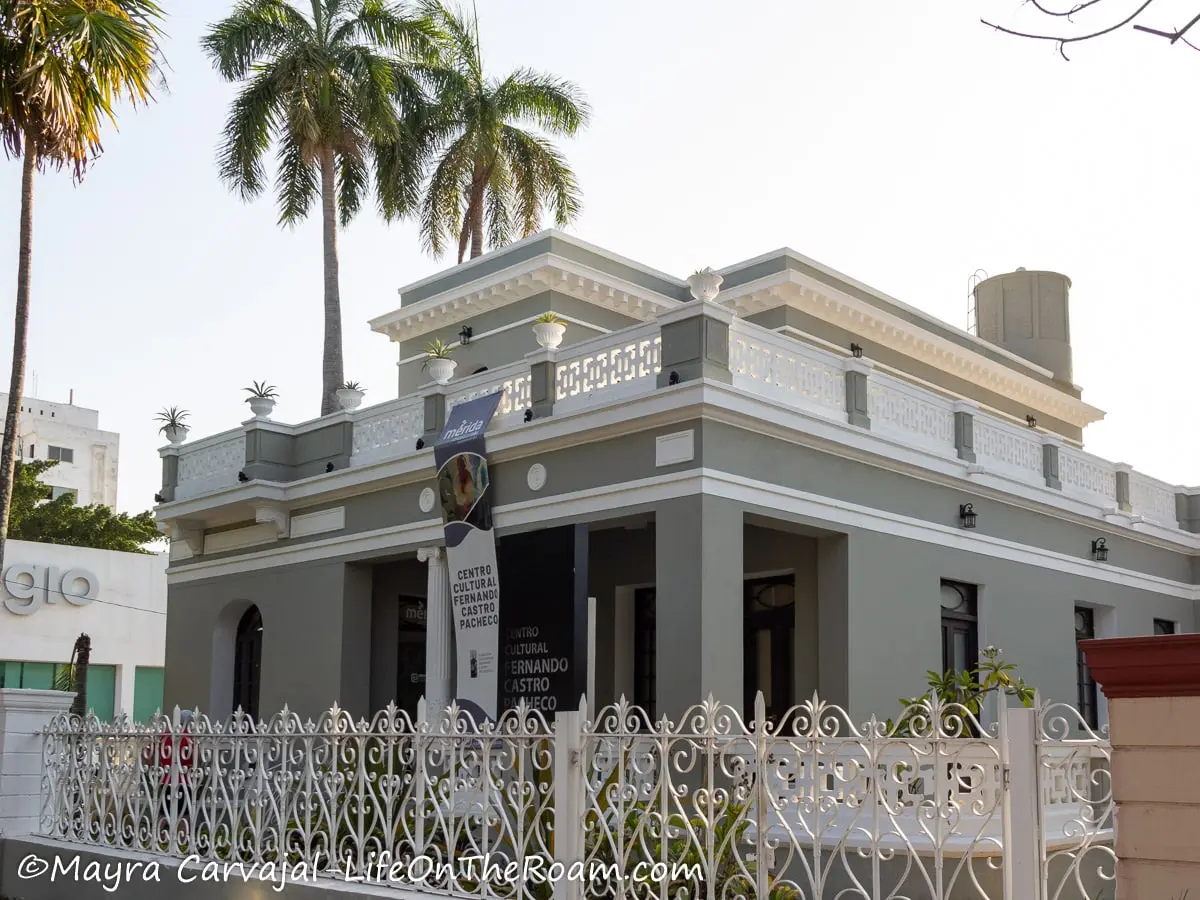
If you’re walking along Paseo de Montejo it’s worth stopping by this little museum to see the artwork of renowned local artist Fernando Pacheco.
From the mid to late 20th century he produced numerous works in different media, some of which you can see here. He was also a muralist, you can admire his awesome murals at the government palace, across Merida’s main square.
There’s also a space for concerts and performances and there are prints for sale.
Av. Paseo de Montejo, 479; Open Tue. to Sat. 10AM-8PM, Sun.: 9AM-5PM; Free admission
Learn About History at the Anthropology Museum (Museo Regional de Antropología de Yucatán- Palacio Cantón)
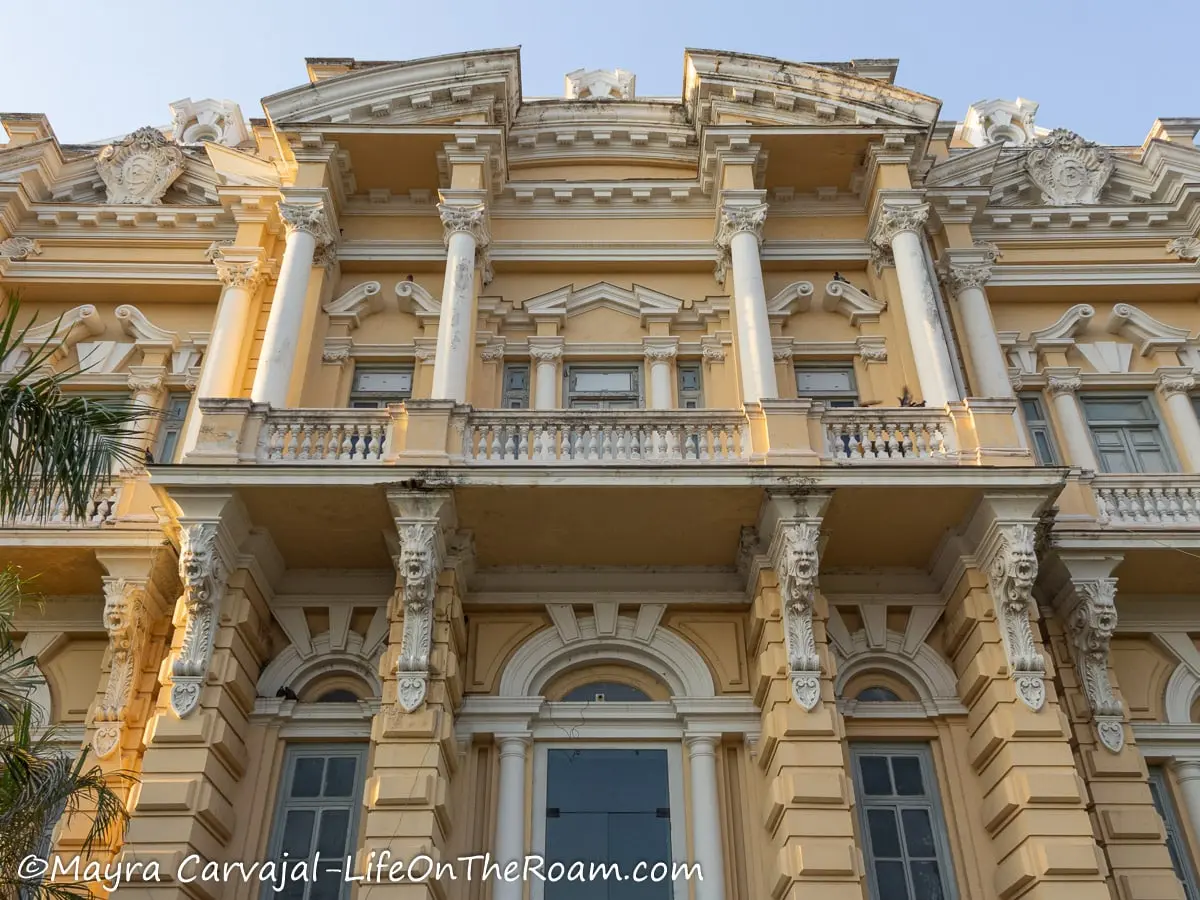
It’s impossible not to stop on your tracks when you see this gorgeous Beaux-Arts style mansion, built in the early 20th century as a residence.
Today, it houses the permanent collection of Yucatan’s Anthropology Museum on the ground floor, consisting of pre-hispanic objects showcasing the Mayan culture.
You’ll find temporary exhibits and cultural events on the upper floor.
Calle 43, 485, Zona Paseo Montejo; Open Tue. to Sun.: 8AM-5PM; General admission: MXN$100
Try the Crema Morisca, a Unique Local Flavour
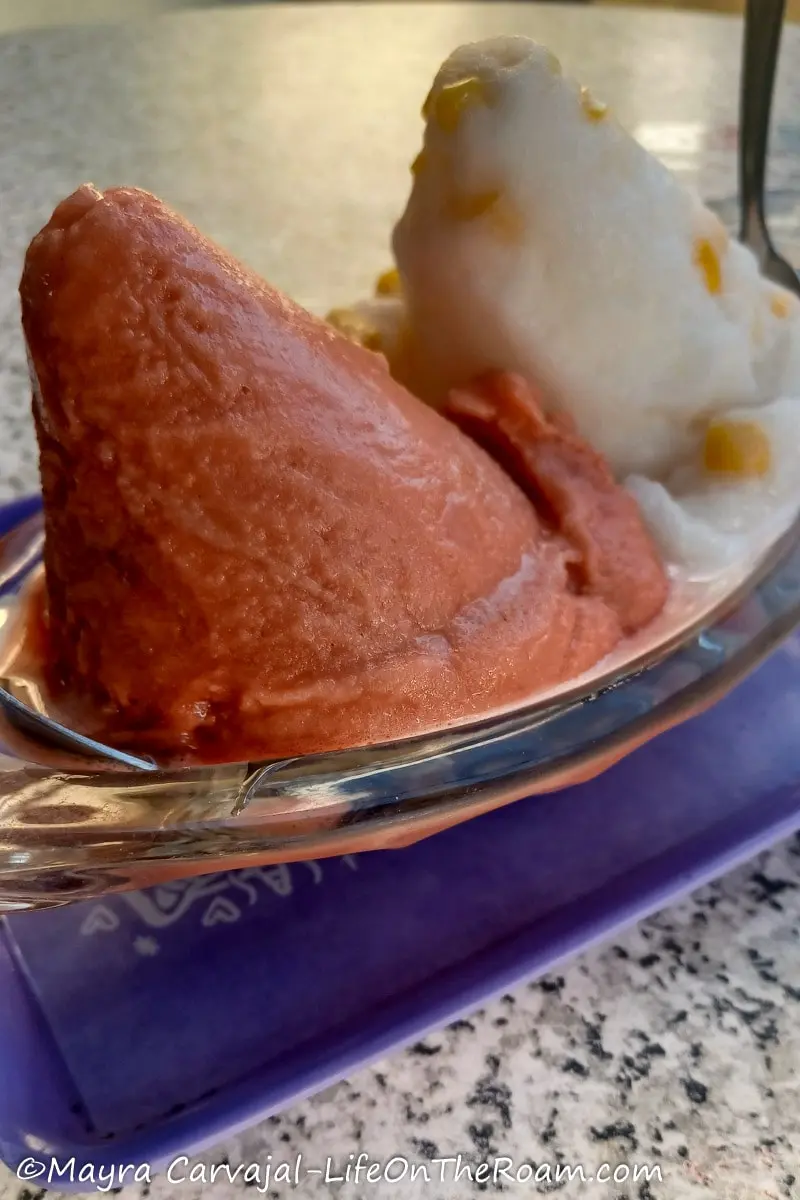
On the list of ice cream flavours, Crema Morisca is a name that screams Yucatan. I had heard that I couldn’t leave Merida without trying this local specialty, created after a recipe from 1876 containing milk, egg yolk, guava paste, prunes, cinnamon, vanilla, and a splash of rum.
We tried it at Dulcería y Sorbetería Colón, a café that opened in 1907 on Paseo de Montejo (you can also try it at other ice cream shops around Mérida and compare).
It has a great, unique flavour and consistency and I would have it again. Just stay away from their elote (corn) sorbet, quite disappointing. If you go to Colón, stick with the Crema.
Check out the Work of Mexican Designers at Casa T’Ho
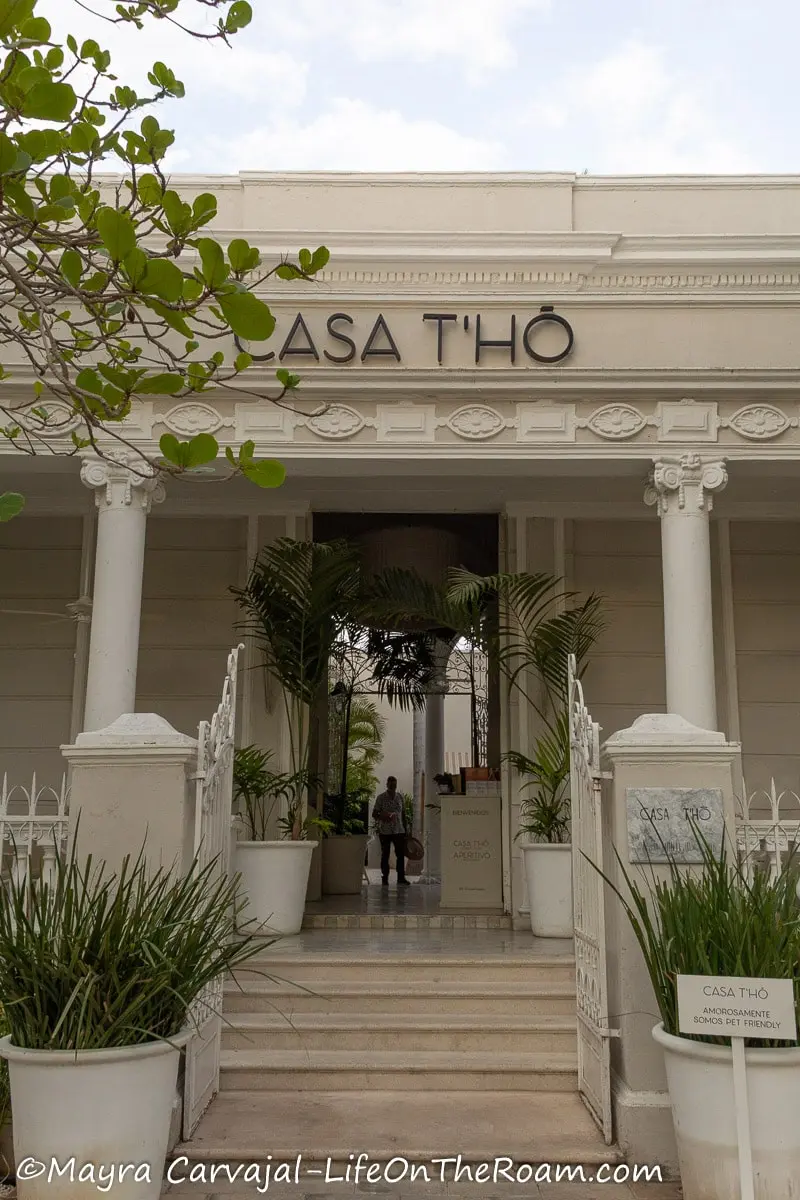
Step inside this stylish, early 19th-century property with an inner patio surrounded by boutiques that feel more like art galleries. It’s a great opportunity to see the creations of several Mexican designers, executed by talented artisans. You’ll find artwork, jewelry, textiles, furniture, accessories, fashion, and perfumes.
The prices aren’t cheap as these aren’t mass-produced items. We’re talking about unique, high-quality stuff. It’s worth taking a look.
As an added bonus, they have a bar/cafe with delicious food and cocktails, serving breakfast, lunch, and dinner, and live music on selected Fridays and weekends.
Paseo de Montejo, 498
Stroll Along Corredor Gastronomico 47
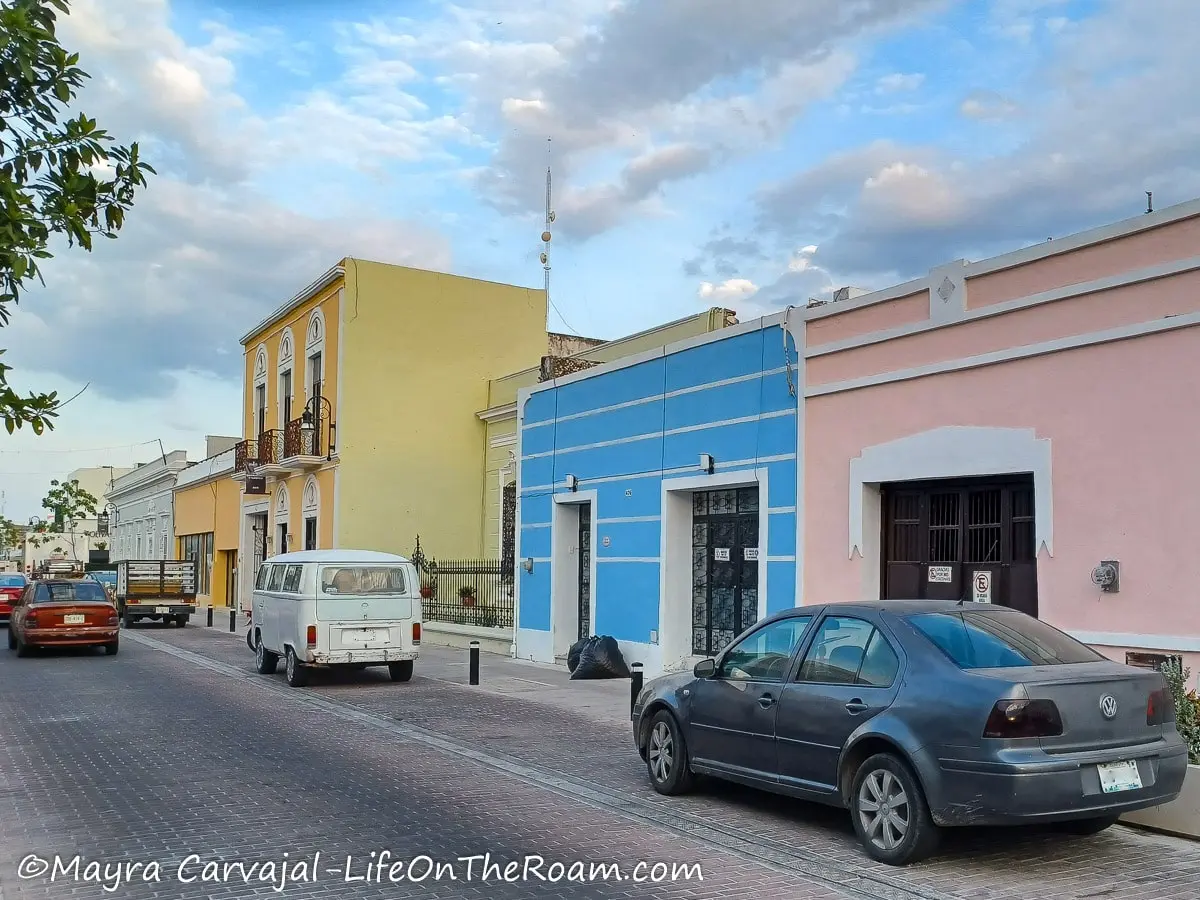
Calle 47 is the southernmost street that connects Paseo de Montejo and La Plancha Park. This stretch, named Corredor Gastronómico y Turístico 47, is filled with cafés, restaurants, art galleries, boutique hotels, and old houses painted in pastel colours, some with gorgeous ironwork.
Plenty of options to choose from while you enjoy a pleasant walk.
I liked a spot in particular: Punto MID Cultural Center. It’s a combination of art gallery, bookstore, library, arts and crafts market, and ice cream shop.
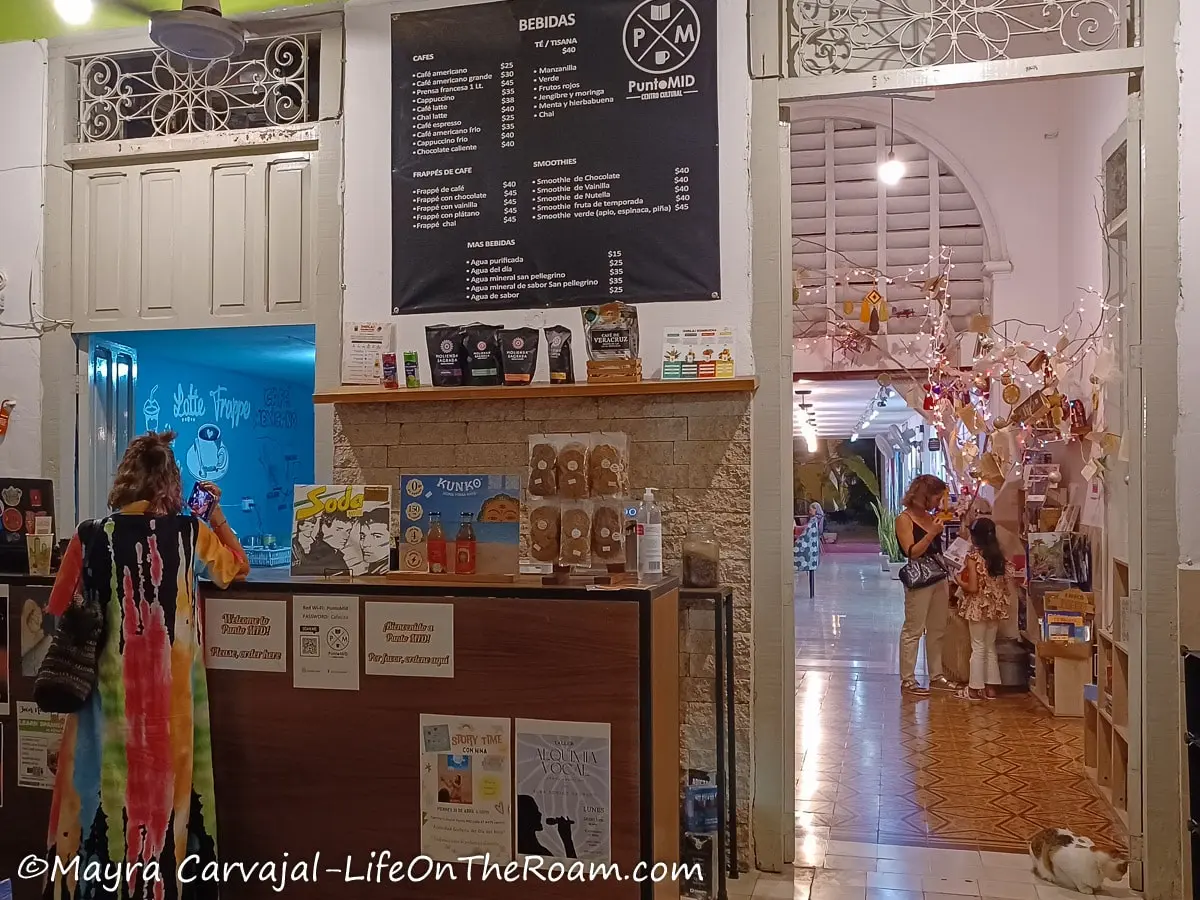
You can grab a book (English and Spanish) and read it while you sip a cup of tea (they also have coffee, frappes, and smoothies), or have an artisanal ice cream bar in their back patio while you enjoy a cultural event.
Enjoy Performances at Santa Lucia Park (and Try Mexican Chocolate)
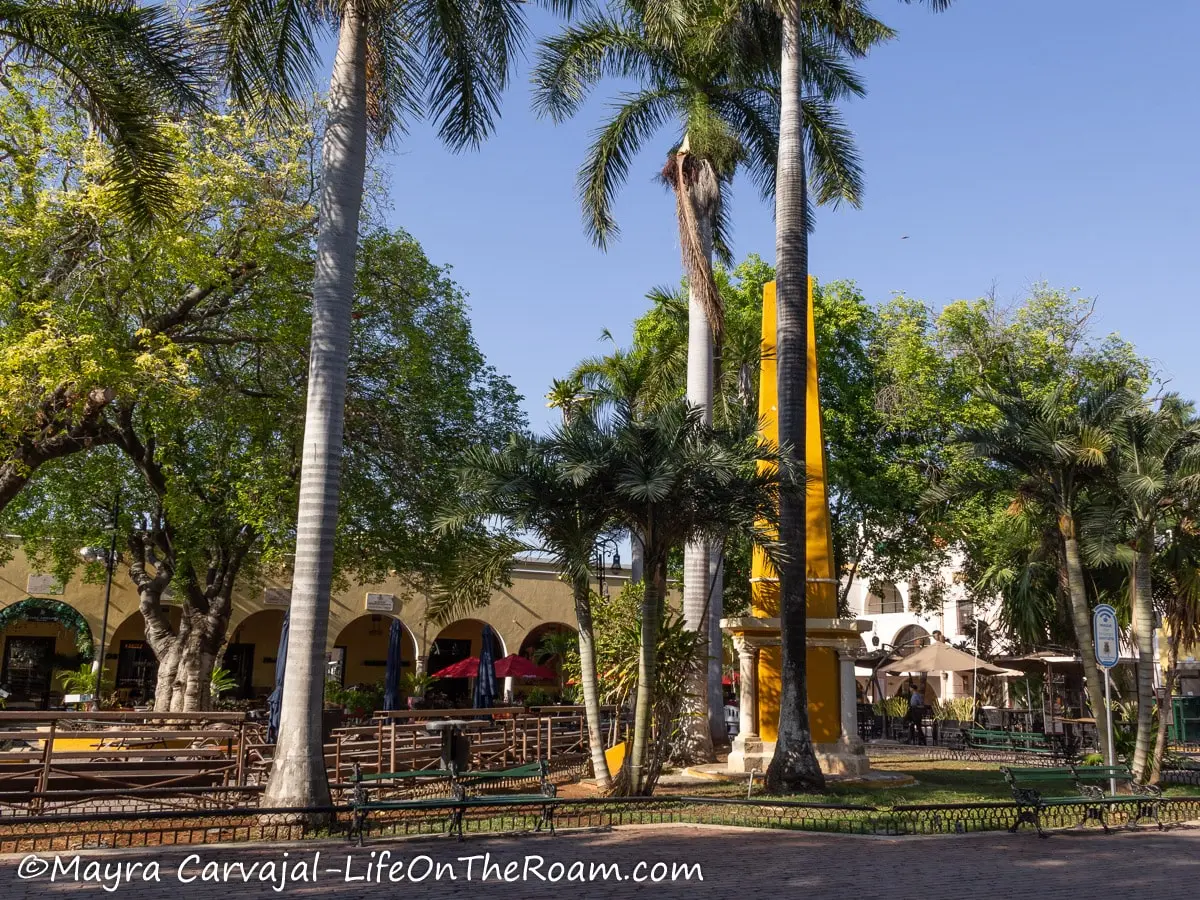
Santa Lucia park is more like a square with a lot of trees instead of a park. There’s lots of cafes around and benches and a giant Tu y Yo Chair that is great for a fun pic.
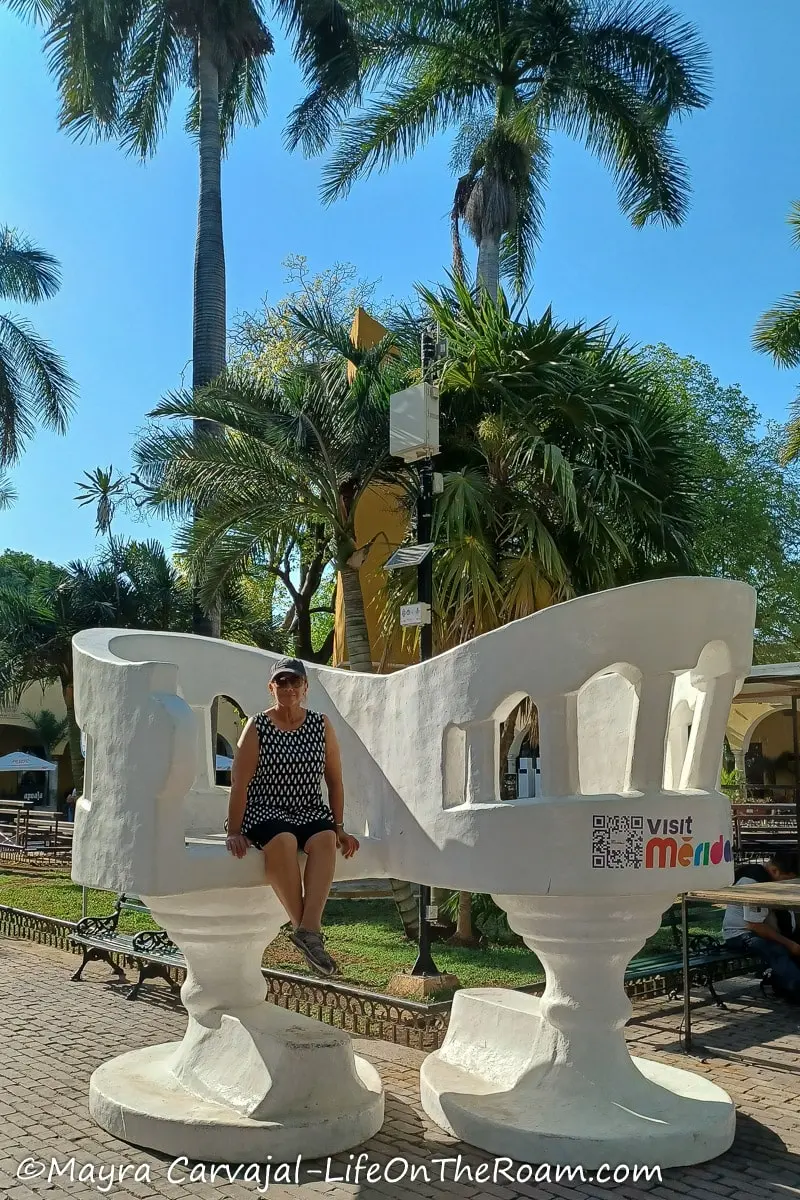
On Thursday evenings, from 9PM to 10PM, you can listen to live bands performing traditional serenades.
I love chocolate and if you love it too check out Ki’Xocolatl, a store in Santa Lucía Park selling products made with cacao beans from the states of Chiapas, Tabasco, and Yucatan.
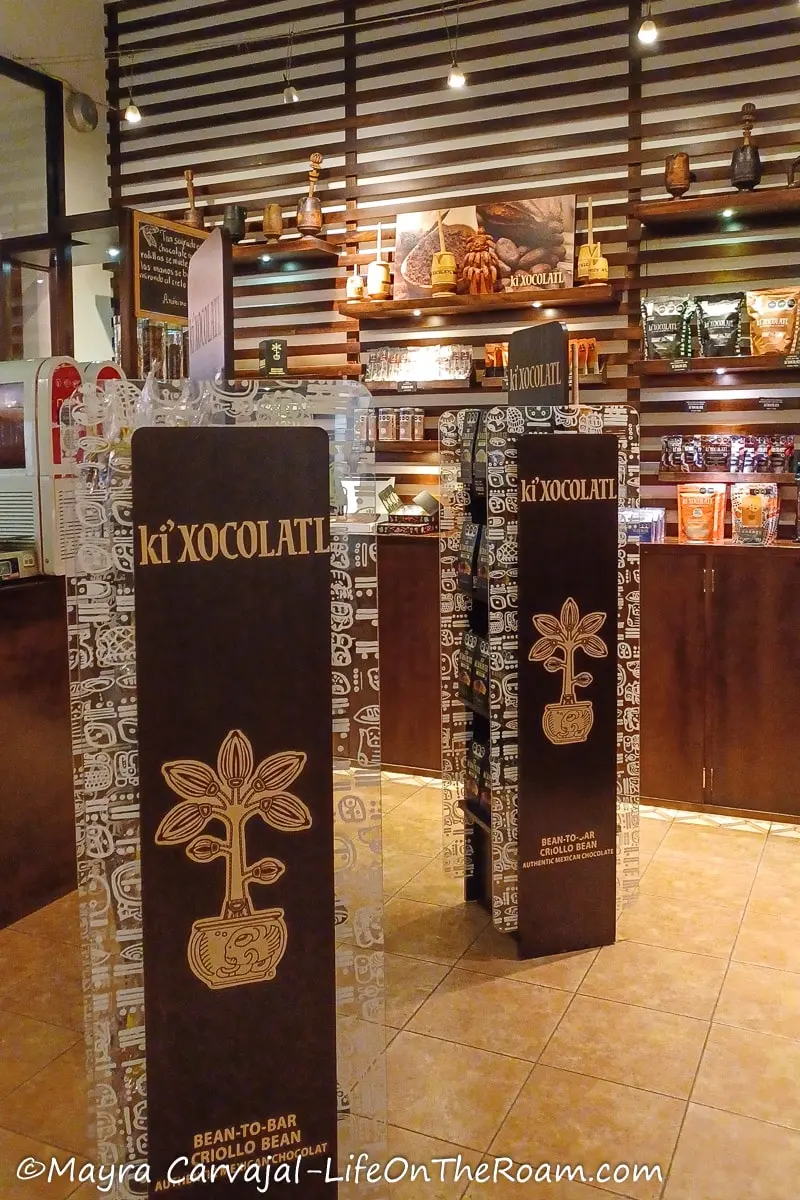
They have artisanal chocolate bars, cacao powder, nibs, even shampoo, soap bars, and more. Enjoy cold and hot chocolate drinks, coffee, and some treats too.
You can also visit the Santa Lucía Church across the street on Calle 60, dating back to the 16th century.
Eat, Drink, and Dance at Mercado 60

Mercado 60 is a fun shaded patio surrounded by eateries -food court style- where you can grab a bite to eat and a drink while you listen to live music and move your hips.
Calle 60, 461, two blocks north of Santa Lucía Park; Open everyday: 6PM-3AM
Have a Food and Cultural Experience at Santa Ana Park
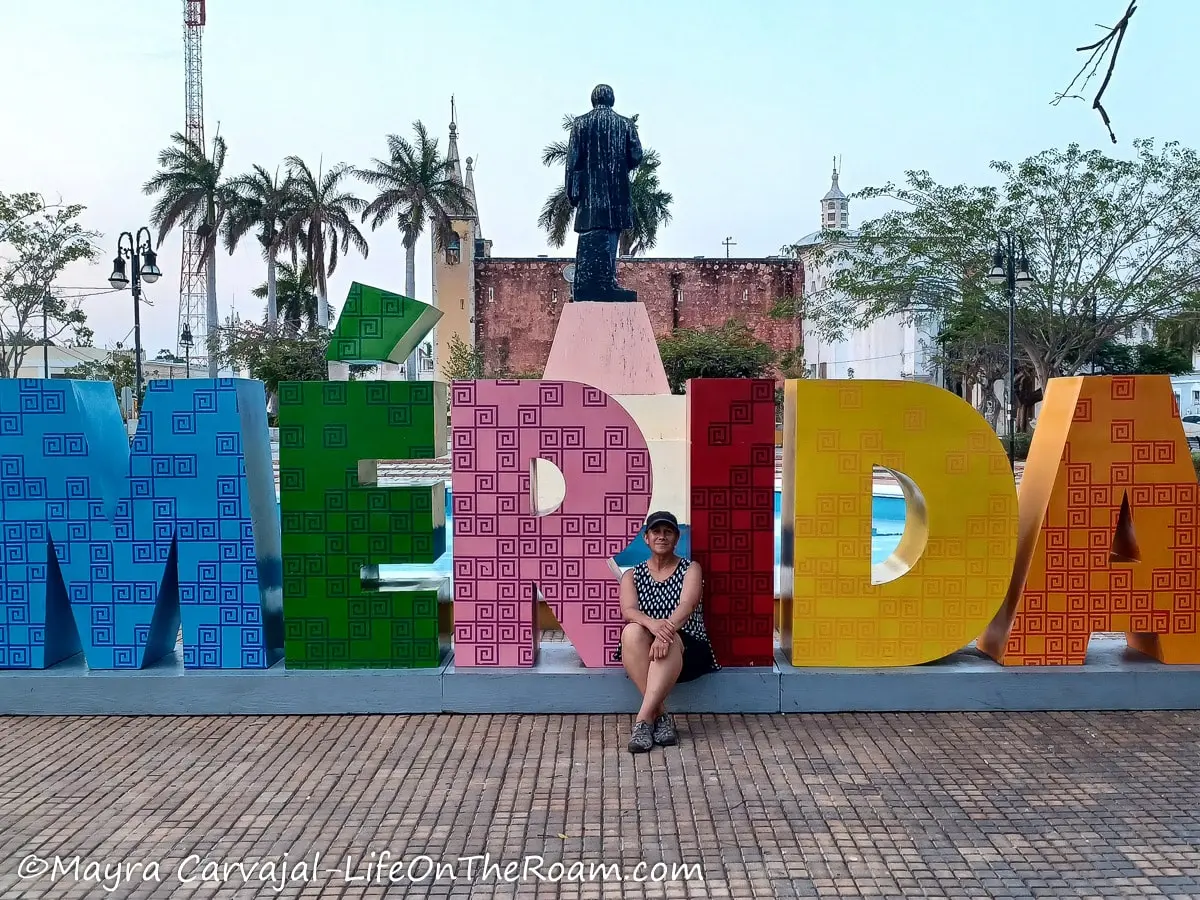
Santa Ana Park, located four blocks north of Santa Lucia park on Calle 60, is another one that looks more like a square and where you can take pictures with the MERIDA letters.
It isn’t a jaw-dropping square, but here you can find an outdoor market with food stalls selling local dishes. A good option if you prefer a less informal setting than a restaurant and more affordable prices.
On Fridays, from 6PM to 11PM you’ll find many vendors selling crafts and other merchandise.
It’s also the site of festivals with music, dance, and performances throughout the year. Ask at the Tourist Info office across Plaza Grande to find out what’s going on during your visit.
While you’re here check out the Santa Ana Church, built in 1734 and located on the north side of the square.
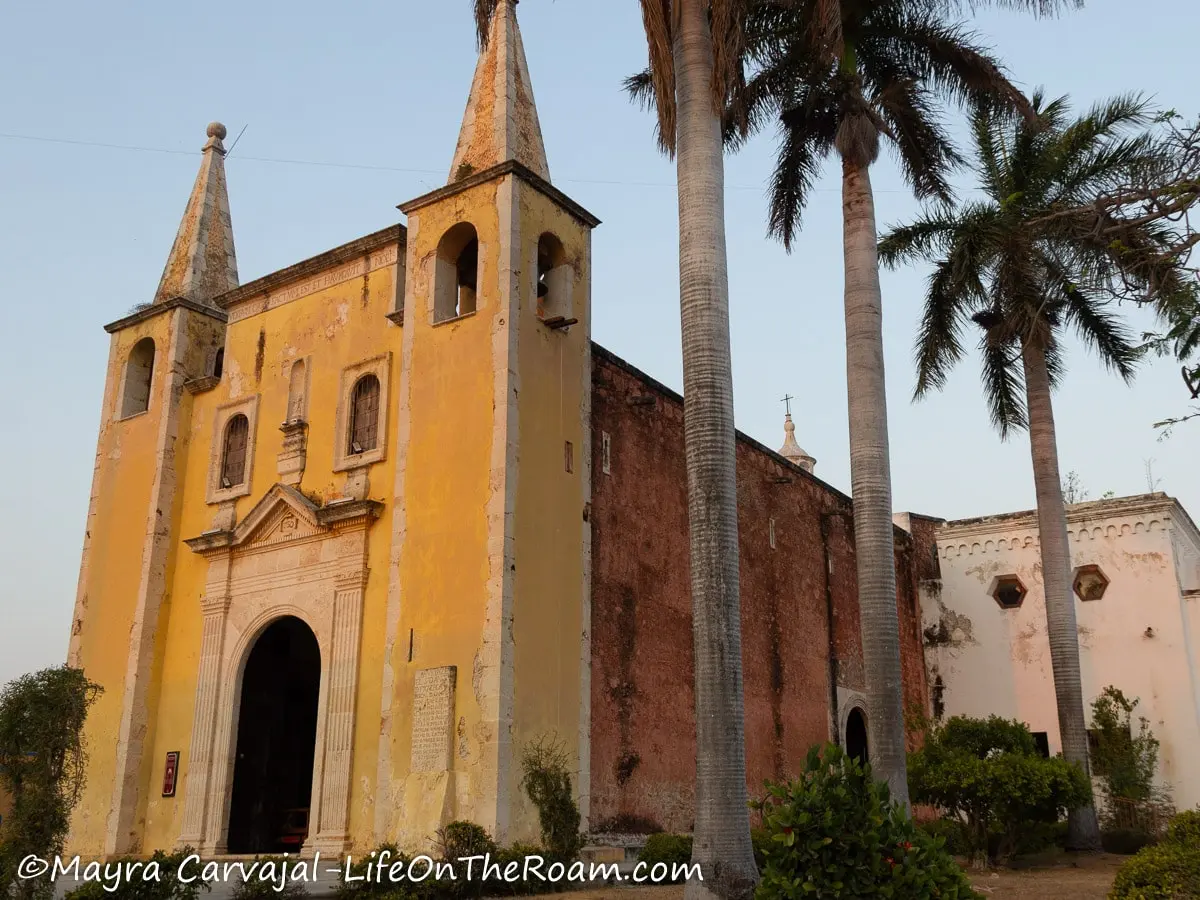
Visit the Church of Jesus -Third Order (Rectoría El Jesús Tercera Orden)
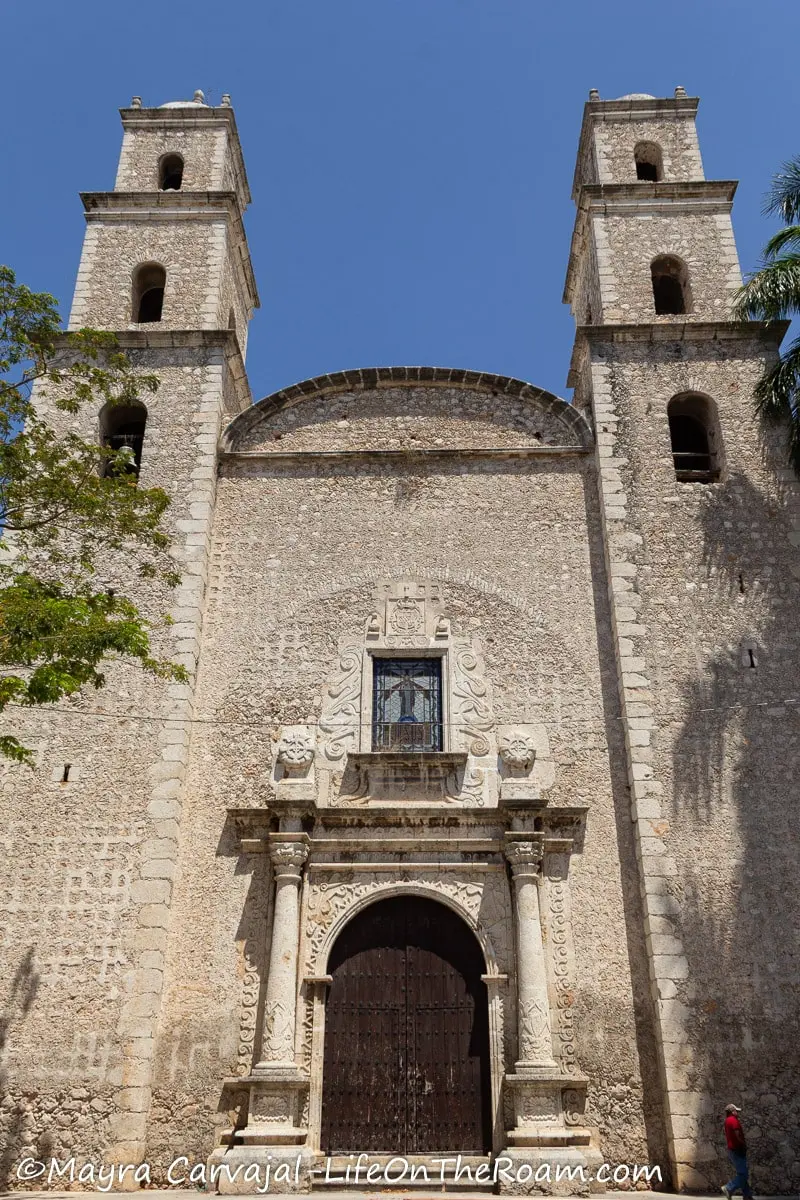
To me, this is the most beautiful church of all the ones I visited in Mérida. It was built in the early 17th century with some Baroque-style elements such as the columns framing the entrance and the garlands and floral motifs carved in stone.
Even though the exterior ornamentation is limited to the monumental entrance, the rocks joined together with mortar create an interesting textured pattern.
Since Spaniards ordered the demolition of Mayan temples and reuse of the rocks to build their churches, you can see here and there some Mayan carvings on the wall along Calle 59.
Compared to the interior of other churches in Merida, the Church of Jesus is quite ornate, with paintings and murals and many golden details.
Extra tip: another location where you can see the use of rocks that were part of Mayan structures is the red building in the corner of Calle 60 and Calle 61 (northeast corner of Plaza Grande). See picture below:
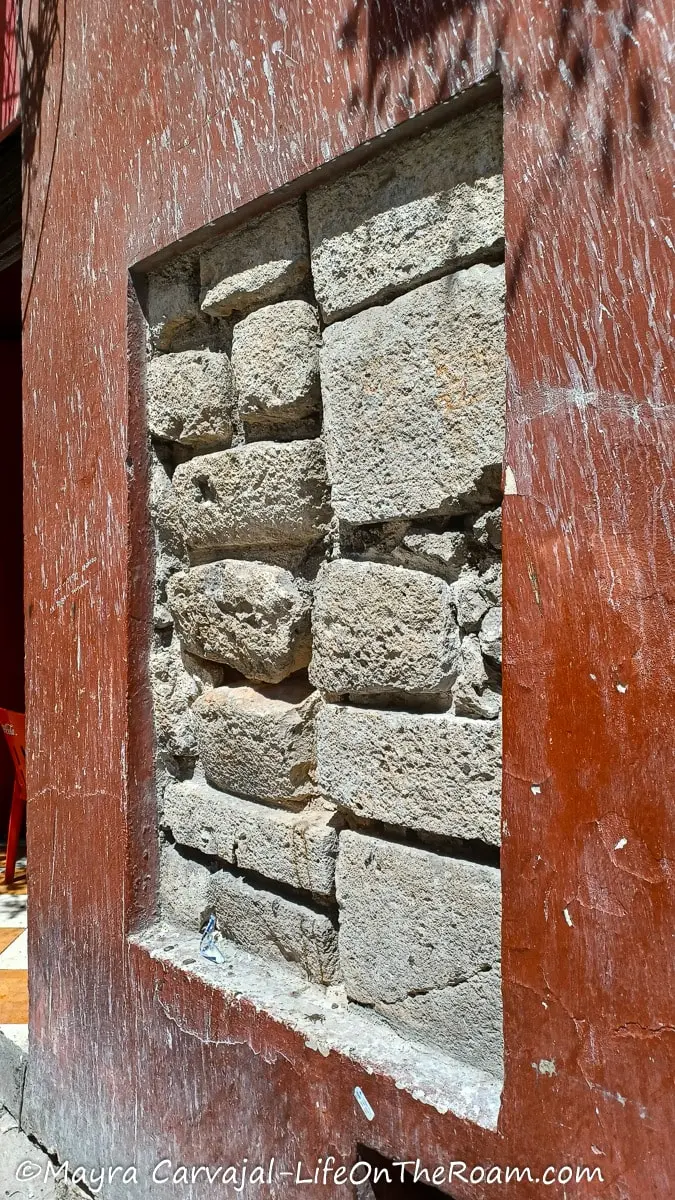
The church is surrounded by two small parks that are great for relaxing and people watching.
On the north side (to the left of the main entrance), you’ll find Parque de la Madre (Park of the Mother).
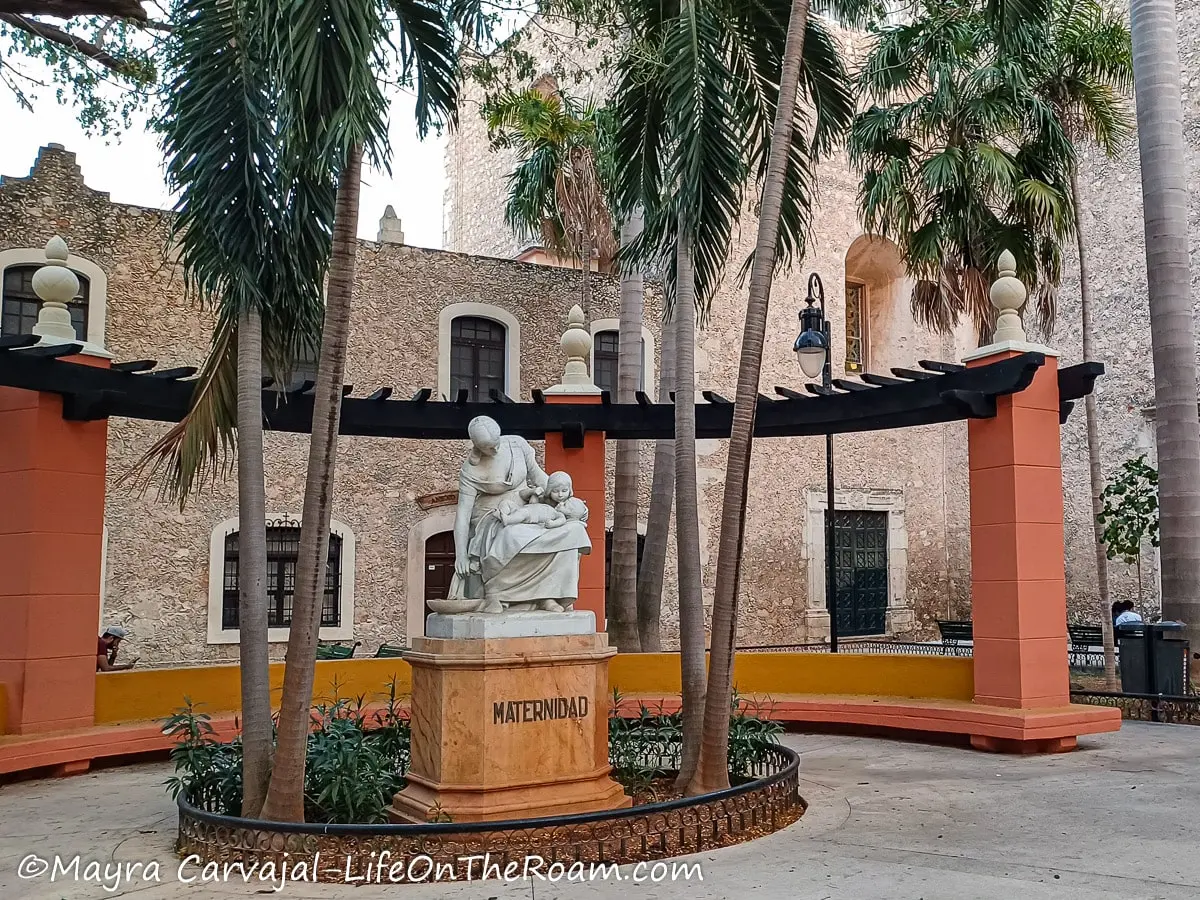
It takes its unofficial name after “Maternité”, the sculpture in the centre: a reproduction of the 1926 original located in Sèvres, France, by Alfred Lenoir.
The square is really pretty, with a hemicycle framing the sculpture, plenty of benches, a couple of Tu y Yo chairs, big and tall trees, and the rough stone walls of the church as a scenic background.
On the south side is Parque de los Hidalgos, with benches, Tu y Yo chairs, and mature trees surrounding a statue at the top of a curved stairway. There are many cafes around to grab a drink.
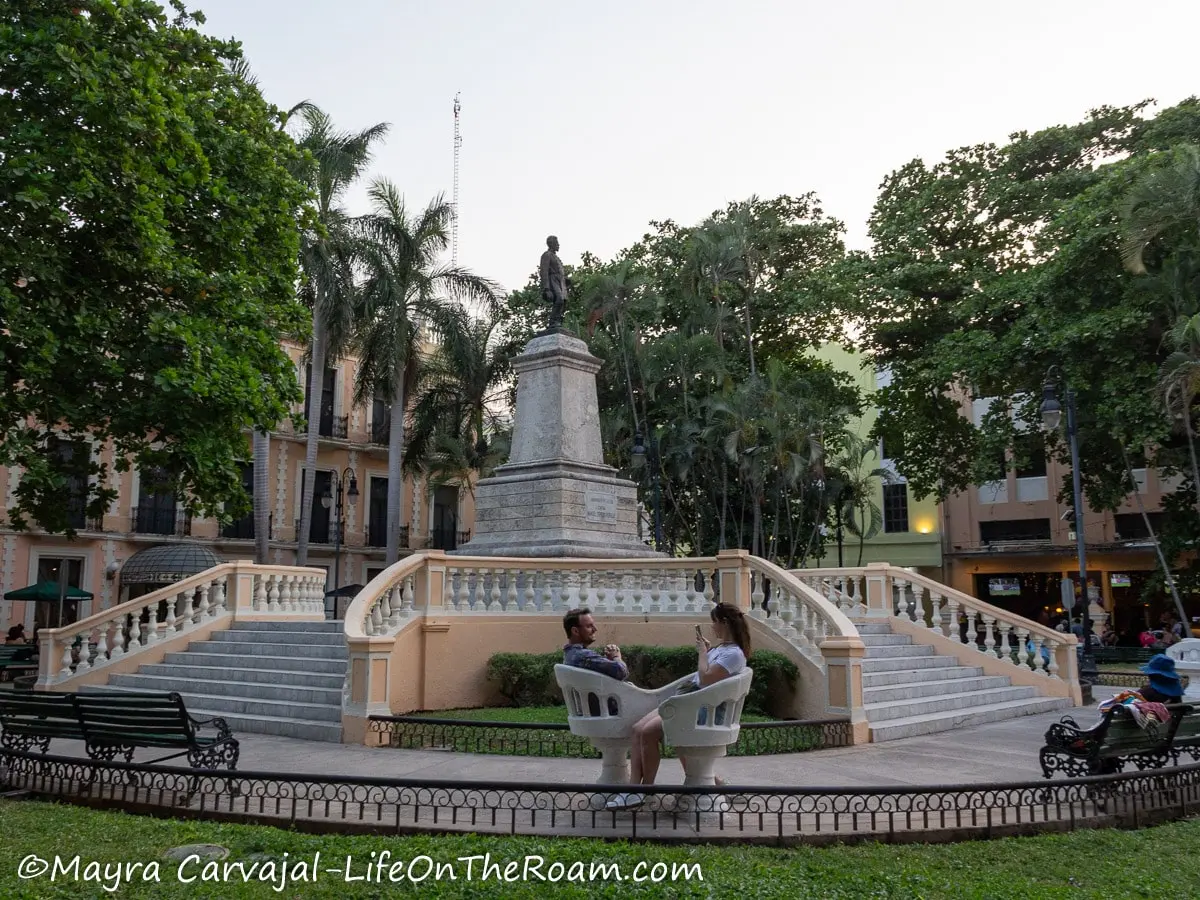
Intersection of Calle 60 and Calle 59
Check Out Merida’s Art Galleries
Mérida is a dream for art lovers. I didn’t walk too far without encountering an art gallery or combination of café and gallery. Here are some of my favourites, not too far from each other:
La 60 Cafe Atelier
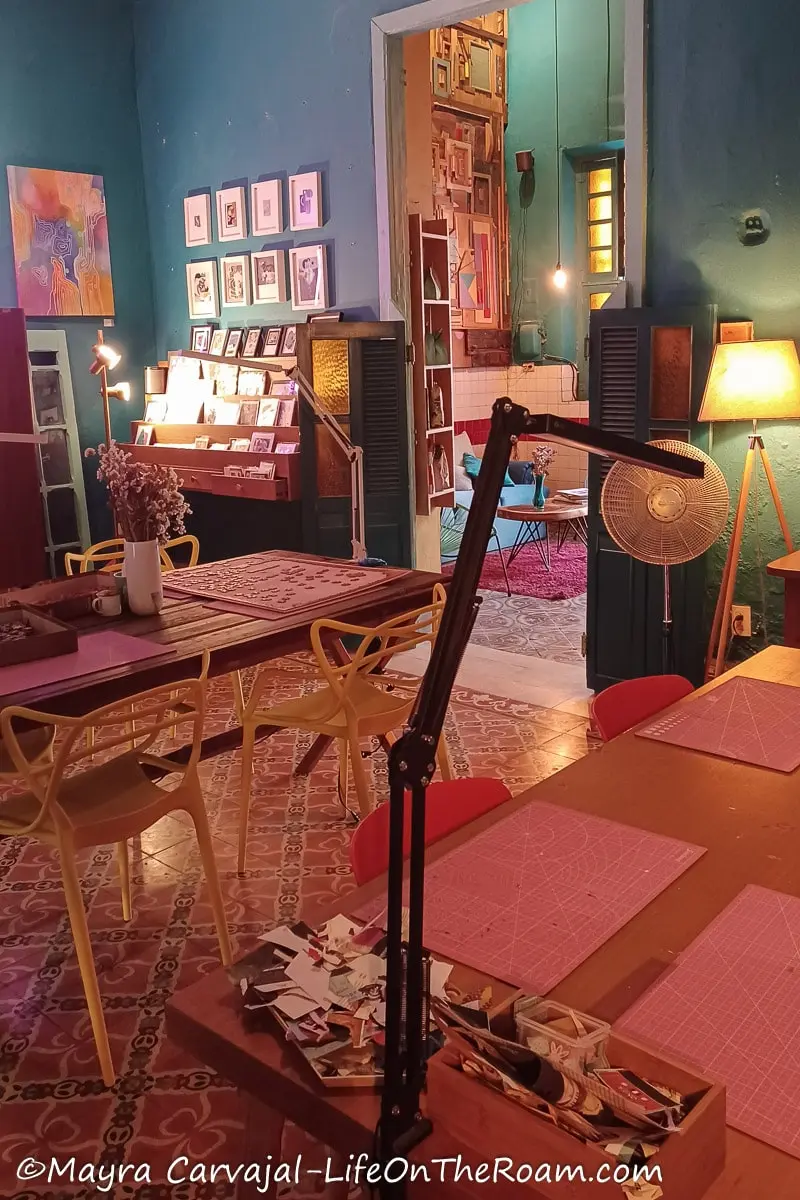
I.Loved.It. What an inspiring place: art gallery/café/art workshop. Grab a bite to eat or a drink and play with the craft supplies available at the several tables, surrounded by walls covered with art.
Calle 60, 393
Soho Galleries
Small gallery with paintings and sculptures created by Mexican artists from all over the country. Really unique pieces of contemporary art that are a visual treat.
Calle 60, 400
Nahualli Casa de los Artistas

Fantastic art gallery, thanks not only to the artwork but to the beauty of the space: a striking façade, hydraulic floors, tall ceilings, elaborate wrought iron, and a relaxing terrace.
Other than exhibiting the work of Mexican artists, they also offer workshops and host art events and performances.
Nahualli Casa de los Artistas
Calle 60, 405.
Taller Maya Santa Ana
This showroom presents the work of more than 200 artisans of the region, with original and high-quality art pieces, home décor and furnishings, clothing, and accessories.
Taller Maya
Calle 60, 417A
Visual Arts Centre (Centro de Artes Visuales)
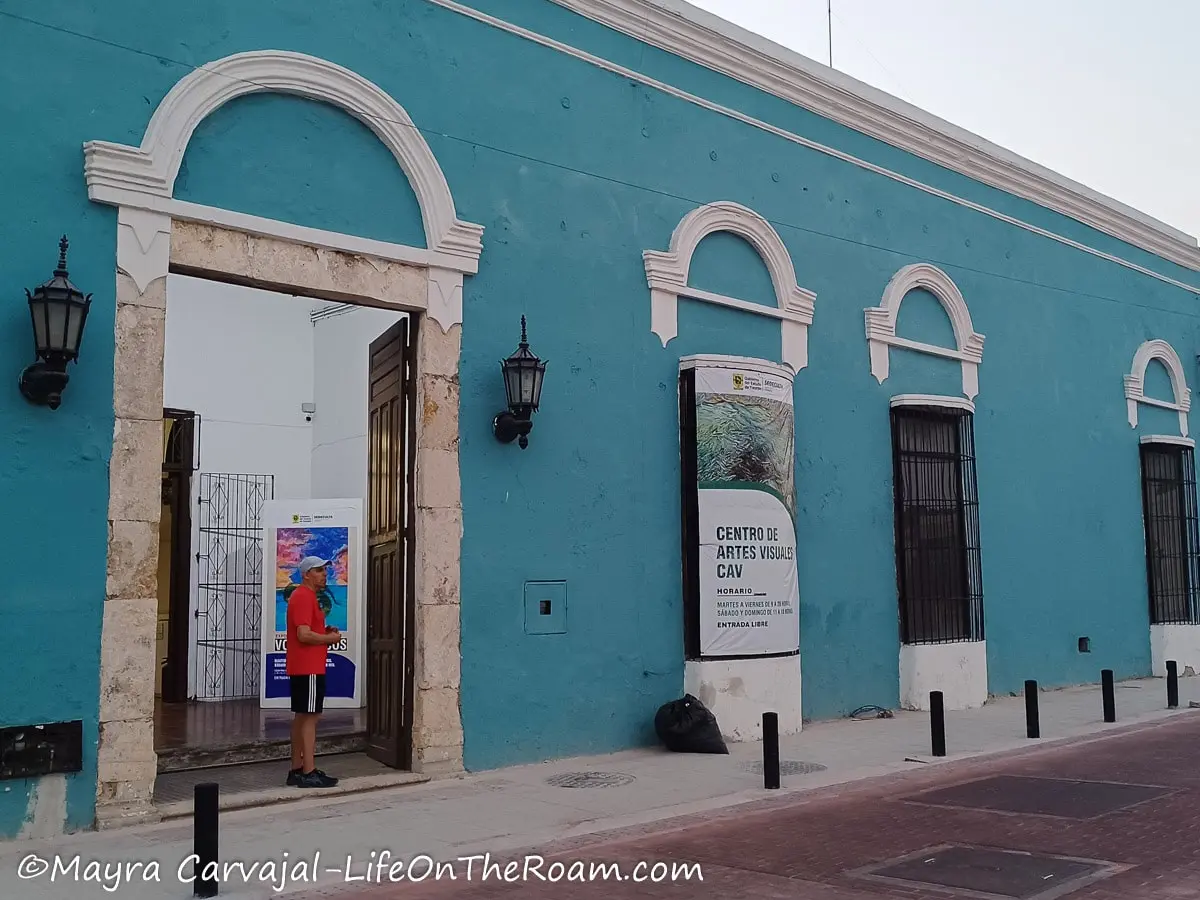
Located inside a big old house across Santa Ana Park, with several small rooms featuring different artists.
Calle 60, 411.
Play with Music at Palacio de la Música
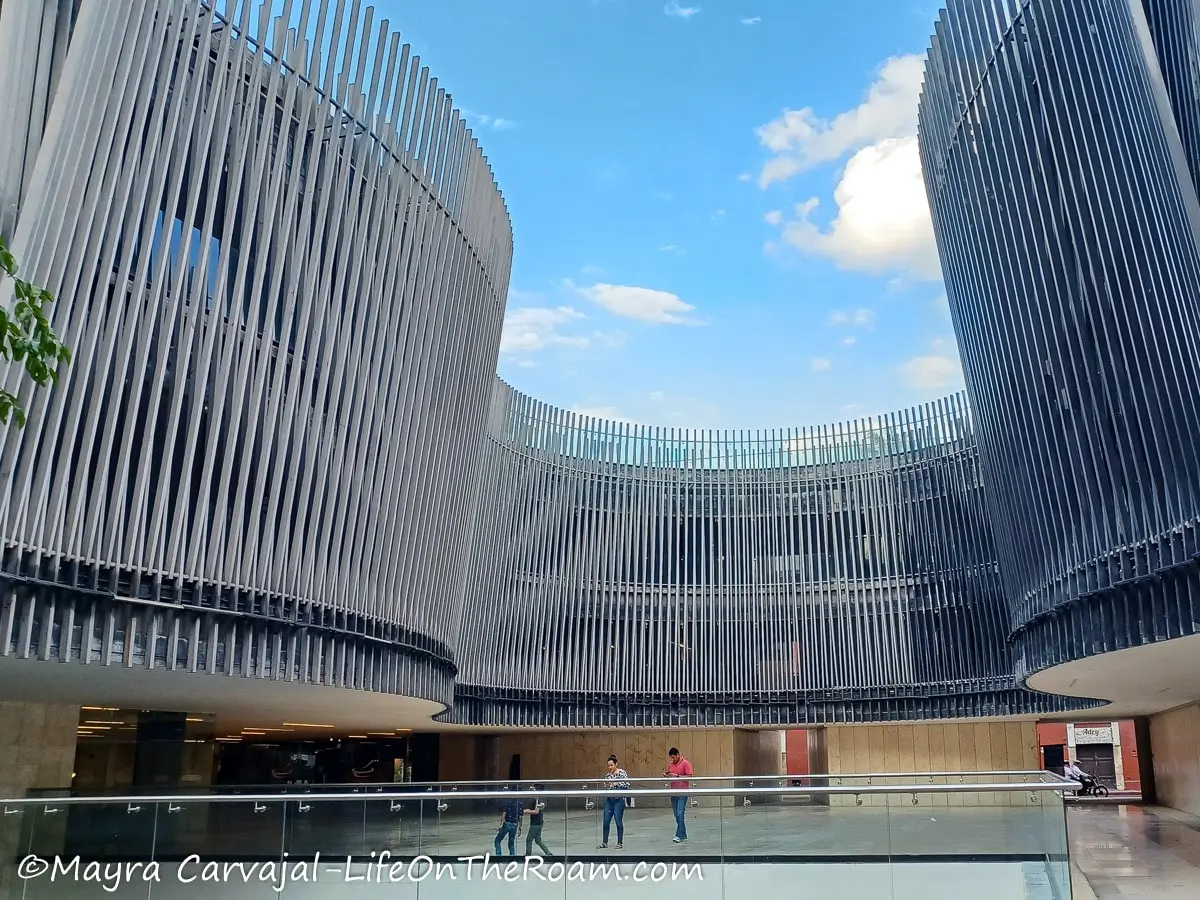
This fun and interactive museum, part of a concert venue, it’s a place where you can learn about the history of music in Mexico. You can hear how it has evolved, its instruments and most celebrated figures.
You can also enjoy paid and free concerts.
Palacio de la Musica
Corner of Calle 58 and Calle 59; Open Wed. to Sun.: 10AM-4PM. General admission: MXN$200
Check out the Cultural Events at Teatro Armando Manzanero
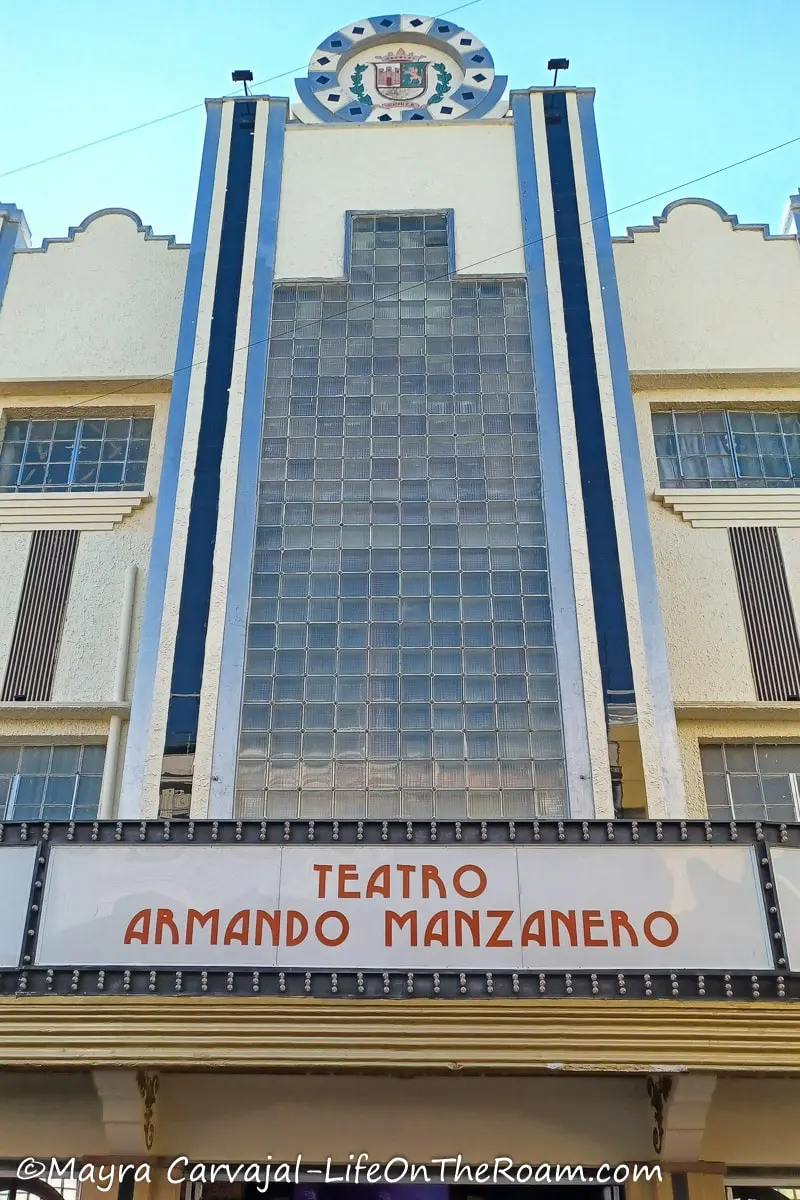
Ballet, traditional dance, concerts, film, theatre, and more, fill the schedule of events at Teatro Armando Manzanero, a beautiful Art-Déco theatre built in the mid-20th century. At one of the entrances’ steps you’ll read the original name of the building: “Teatro Merida”, in a nice font that matches the style of the place.
It was changed later to its current name to honour Armando Manzanero, who was born in Yucatan in 1935 and who became one of the best composers and musicians not only in Mexico, but in Latin America.
Another theatre you can check is Teatro Daniel Ayala.
Roam Around La Mejorada
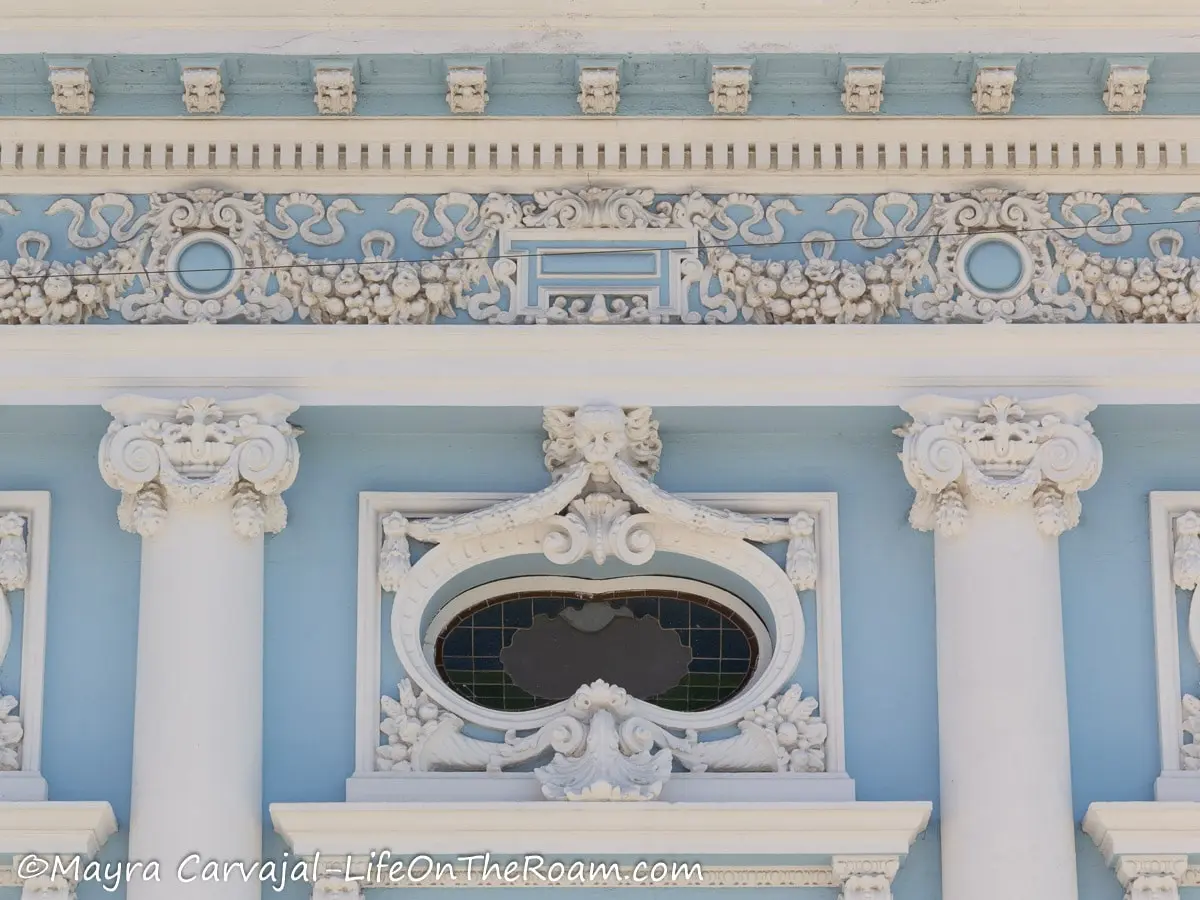
If you have time to spare, walk around La Mejorada, a neighbourhood only a few steps away from Merida’s Historic Centre, on the east side. Although I didn’t stumble upon any “must-sees”, there are a couple of interesting sites that will interest you if you’re into history and architecture.
Merida Arches
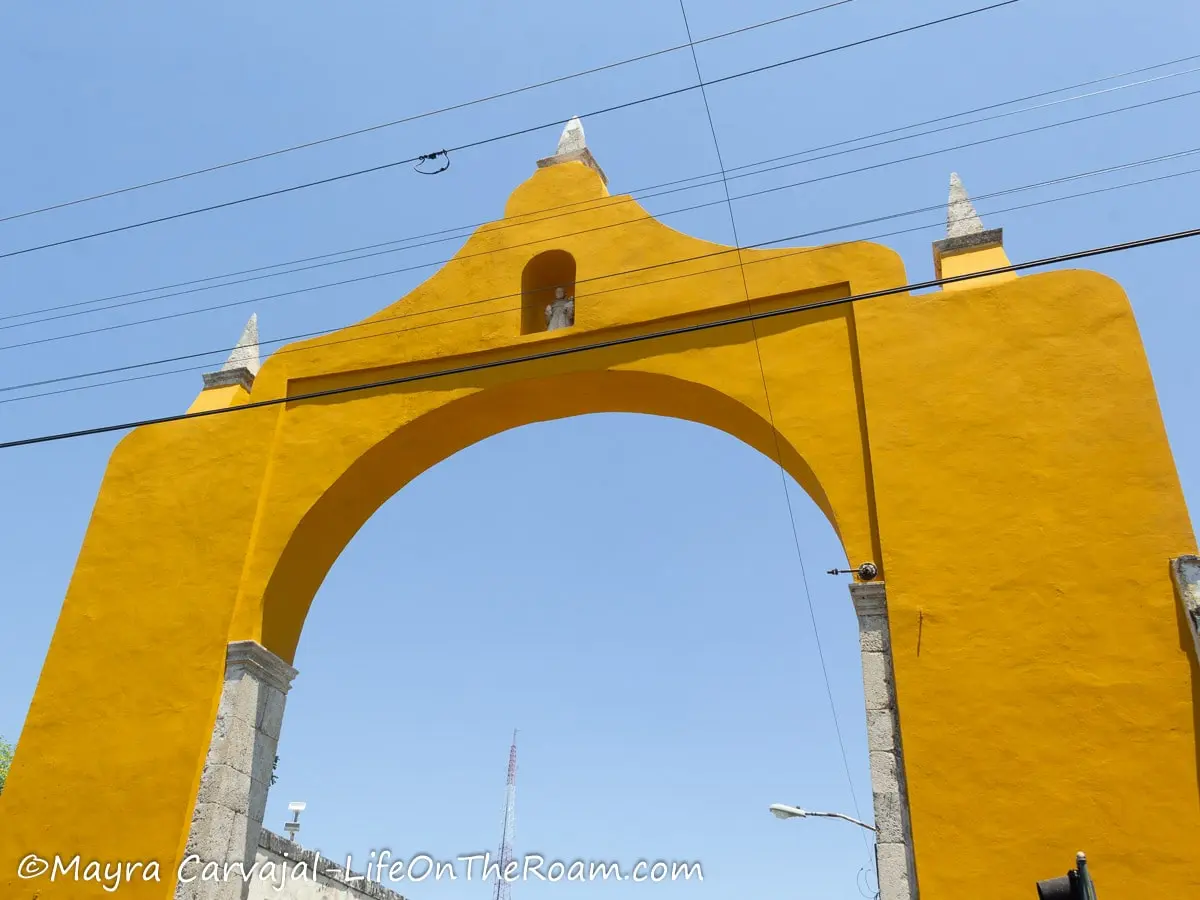
Go to the intersection of Calle 50 and Calle 61 to see the Arch of the Dragons (Arco de los Dragones), named after the adjoining military barracks.
I wouldn’t call it an architectural wonder. As you can see from my picture, let’s say that the name is more interesting than the structure. But, it’s a historic landmark as it’s one of the three remaining arches out of the eight that were built in the mid-17th century to mark the limits of the city.
If you have plenty of time and you want to see the other arch located nearby -which looks pretty much the same-, walk one block south on Calle 50, towards Calle 63, and you’ll find the Arch Bridge (Arco del Puente).
Our Lady of Carmen Church and Ex-Convent La Mejorada (Iglesia de Nuestra Señora del Carmen)
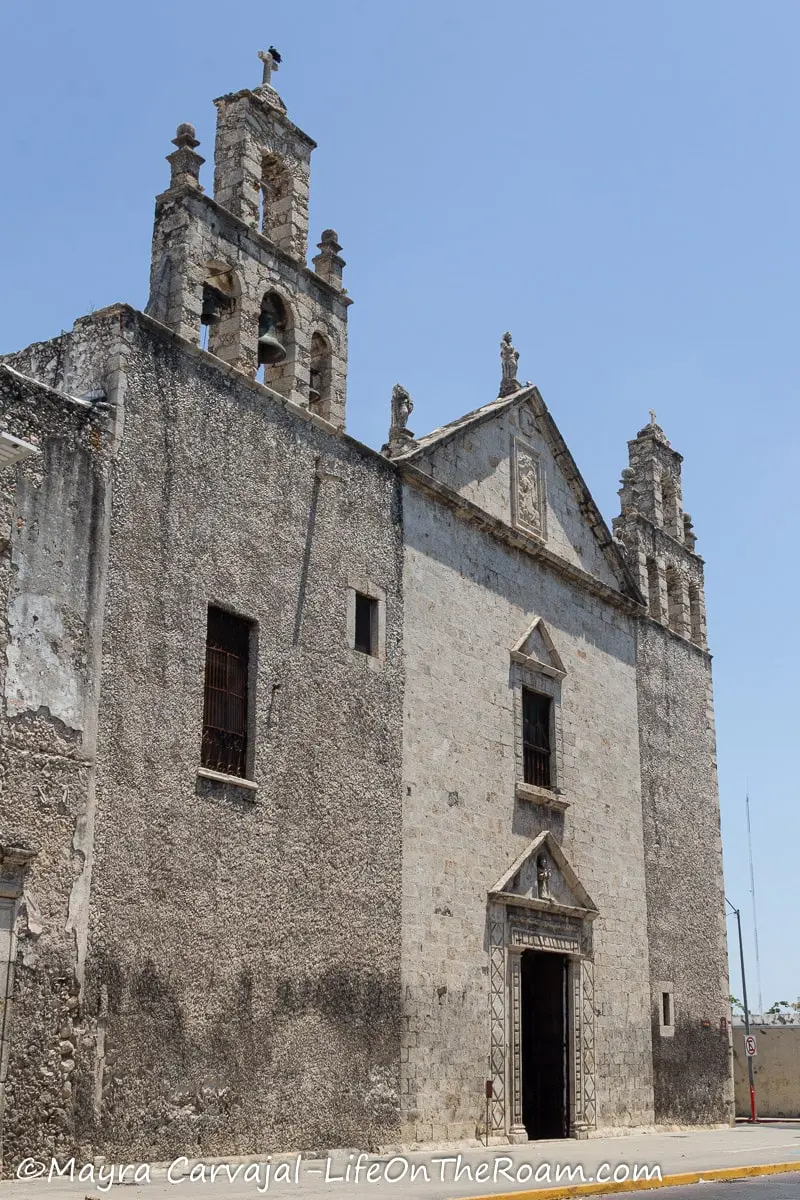
At the corner of Calle 50 and Calle 59 you’ll see this church from the 17th century. At some point it was part of a large convent that now houses the Faculty of Architecture and the Museum of the Yucatecan Song.
You won’t see any frills here. It was built for the Franciscan Order, which advocated for simplicity and austerity.
La Mejorada Park
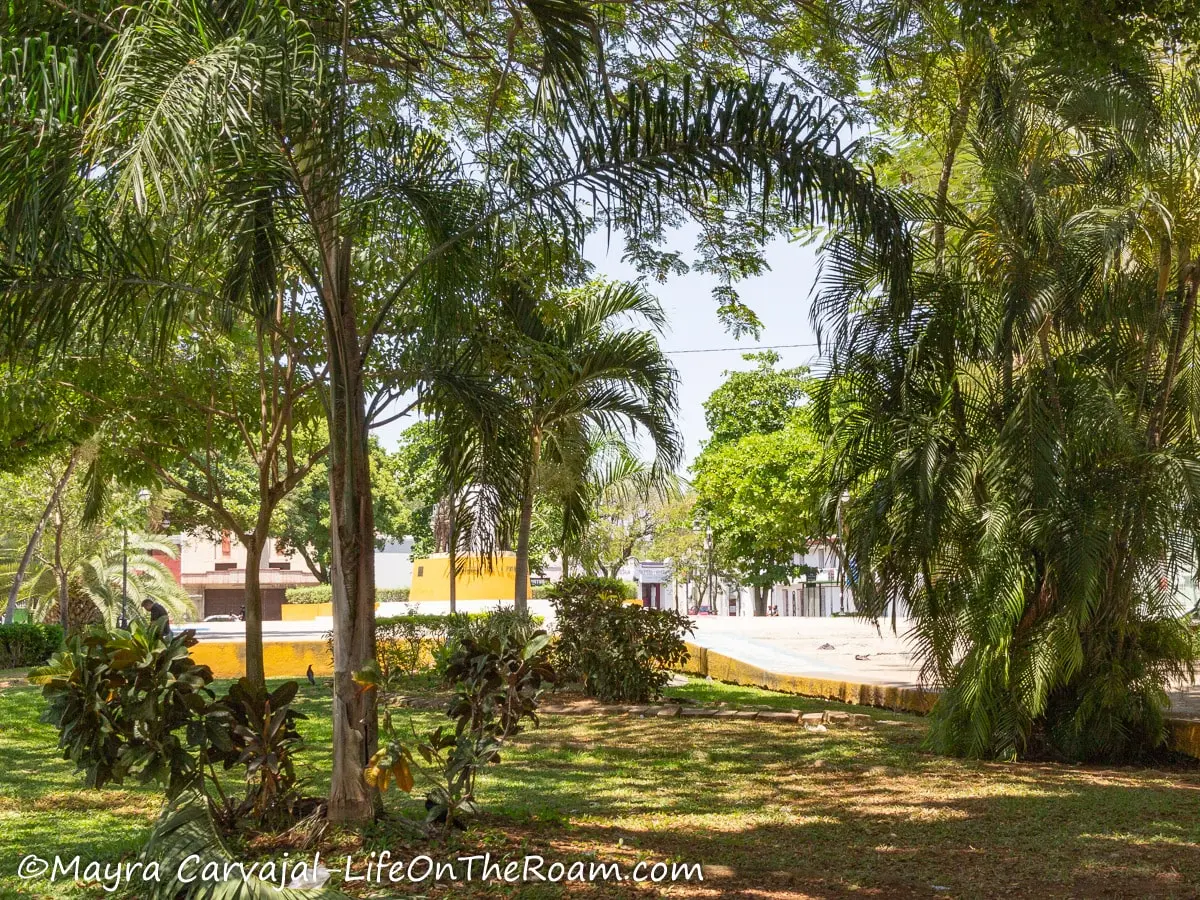
This small park is right across the church and has tons of big trees and palms surrounding a monument in the centre dedicated to the Boy Heroes of Chapultepec. Nice for a quick stop and for an outdoor break from Yucatan’s intense sun.
Historic Buildings
These are some of the gems you can encounter:
On Calle 59, #458, sits Casa de la Cultura Jurídica. This beautiful blue building was built in 1915 and designed by architect Manuel Amábilis.
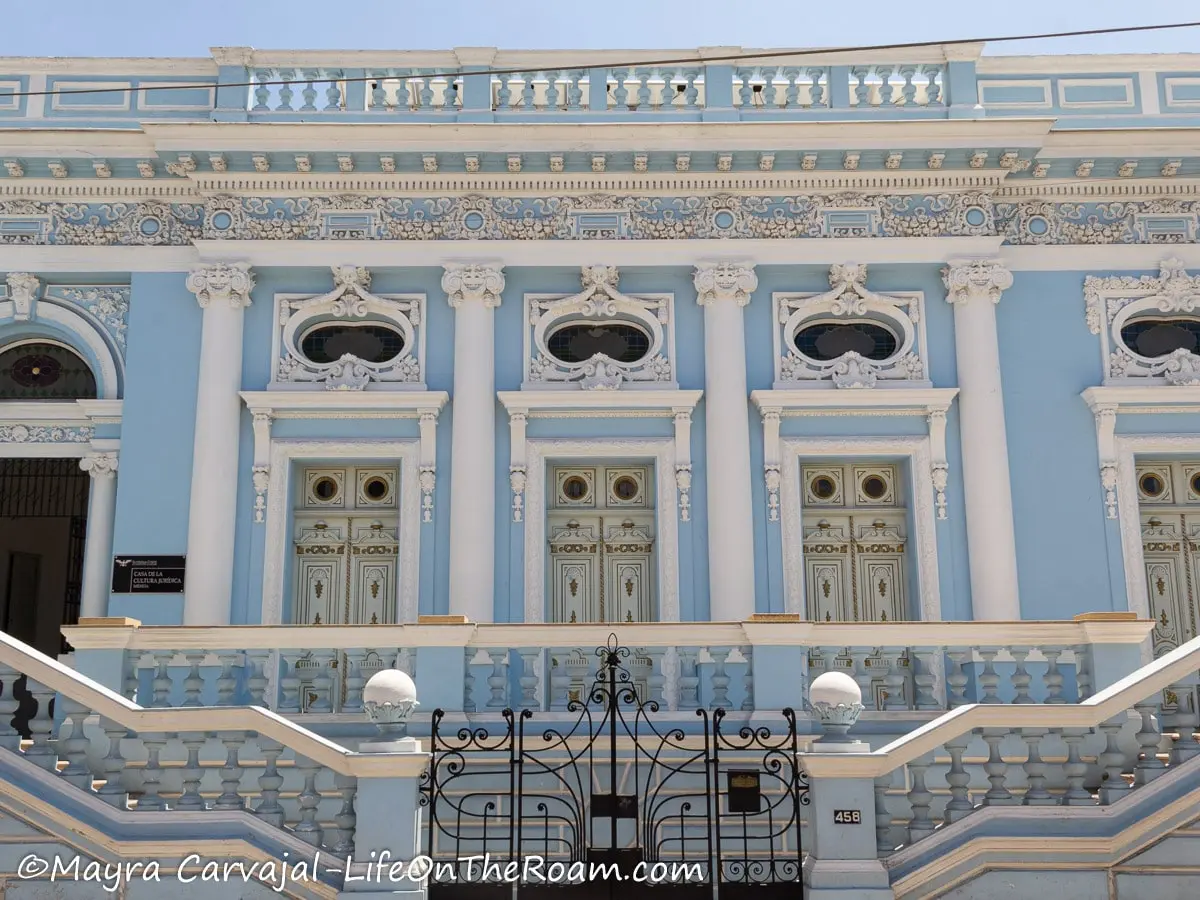
Or this one, #455, a vacant building formerly occupied by a hotel.
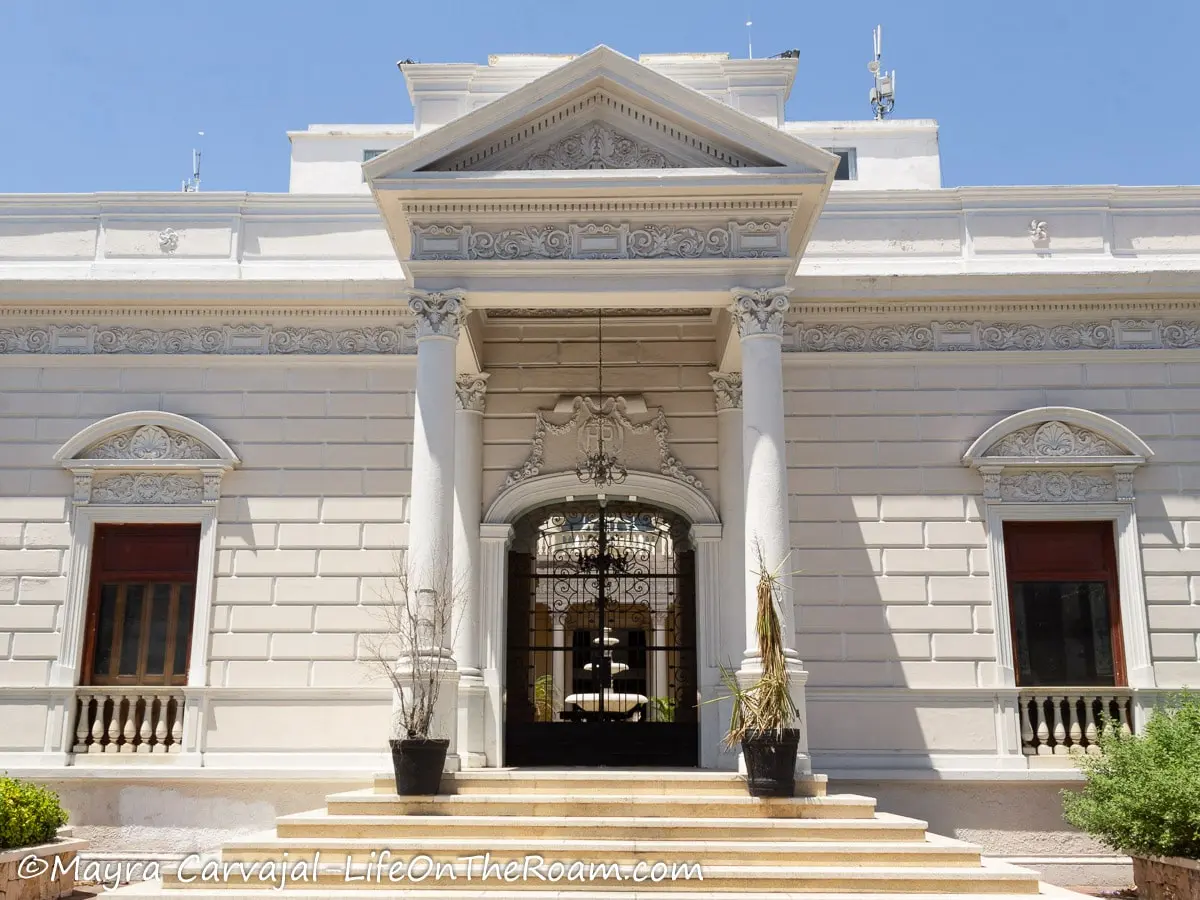
Walk around to find other beautiful old houses.
Accommodations in Merida
Check out the map below to find accommodations around Mérida:
How to Get Around Merida
Mérida’s core was built using a grid pattern where calles (streets) with odd numbers run North to South and streets with even numbers run East to West, which makes it really easy to navigate.
You don’t need a car to explore Merida’s centre and its surroundings. It’s a walkable city that you can explore on foot, preferably when the sun isn’t at its peak. This is a hot destination. Literally.
By bus
If you want to save time or if the humidity is unbearable you can catch the Va y Ven buses. They’re blue and (very important) they have AC, unlike other buses. You need a card to ride which you can purchase and recharge at an Oxxo (a popular convenience store you’ll see all over Mexico).
You can download the app on your phone where you can see the routes with circles marking the stops and the buses location in real time. I took Ruta 79 Centro-Francisco de Montejo, which runs near the most popular attractions.
Uber
Uber works well in Mérida and it’s considered a safe option.
Is Merida Safe?
The U.S. Department of State website lists the state of Yucatan under “Exercise Normal Precautions When Traveling To”. Mérida is considered one of the safest cities in Mexico.
It’s quite lively at night with plenty of people around thanks to the many weekly events that take place outdoors.
Of course, always check for updates and remember to follow safe practices.
Find how much you would pay for travel insurance during your trip to Mérida with SafetyWing:
How to Get to Merida
Fly into Mérida
Some airlines fly direct into Merida’s International Airport (MID) from major cities in the United States (Atlanta, Dallas, Houston, Miami, and Orlando) and from Toronto in Canada, as well as from major cities in Mexico (Mexico City, Puebla, Queretaro, Oaxaca, and others).
Things to consider:
-Generally, flying into Mérida is more expensive than flying into Cancún. Even if you add the bus ticket from Cancún it can be a couple of hundred dollars more. But it’s an option if you don’t mind paying more for convenience and to save time.
-If you fly to Mérida, be aware that Uber isn’t allowed to do airport pickups. You’ll have to walk with your luggage completely outside the airport to the main road. You have the option of taking an official taxi from the airport (they’re not always available at peak hours) or you can book a private shuttle.
Fly into Cancún
You’ll have more options flying into Cancun International Airport (CUN) and it’s cheaper than flying to Mérida. From there you can take the ADO bus to Mérida (details below).
By bus
You can take the ADO bus to Mérida from Cancún Centro (downtown station) or from the Cancún airport. Mérida has several terminal stations, make sure to select the right one according to where you want to end up. Here are some tips:
From Cancún airport: Mérida’s ADO station closer to the centre is Terminal Paseo 60, which is on Paseo de Montejo.
There’s only two departures, early and late afternoon.
The trip is around 4.25 hours.
From Cancún Centro: Mérida’s ADO station closer to the centre is Mérida Centro Historico (TAME), six blocks southwest from Plaza Grande. You also have the option to book your ticket to Terminal Paseo 60, which will be more convenient if you’re staying at a hotel around Paseo de Montejo.
There are regular departures throughout the day.
The trip is around 3.25 hours.
ADO buses are comfortable, clean, and considered a safe option. You can check schedules and prices (and buy tickets in advance) at www.ado.com.mx or you can download the app on the phone.
By car
A car will come handy if you want to explore Yucatán beyond Mérida’s centre. If you rent a car in Cancún it will take you around 3.25 hours to reach Mérida taking Road 180D, a route with tolls.
Check savings on rental car rates with Rental Cars
You can also take the Tren Maya (Maya Train), which has been a controversial project. Not a fan of this option as the news have reported that it has caused (and keeps causing) serious environmental damages.
One thing is sure when you visit Mérida: you won’t get bored. There’s a lot going on, with public performances every day in parks and squares, galleries, and art centres. This city is bursting with culture and music and joy.
When planning your trip to the Yucatan Peninsula set aside some time to explore Tulum, another remarkable Mayan site in the neighbour state of Quintana Roo.
YOU MAY ALSO WANT TO READ
BOOKING FLIGHTS AND ACCOMMODATIONS
Book your flight without losing your shirt
We check Momondo to find great deals to book our flights. Also, check Great Escape: it combines the listings from Expedia, Kiwi, Kayak, (and Skyscanner on the premium service) to find the best airfares.
To find a place to stay for less
Booking.com: this site combines everything under the sun. You’ll find hotels, apartments, B&B, hostels, rooms, etc., with all sort of filters to make your search a breeze.
Hotwire: the first site I check when we plan to stay at a hotel for a few nights. You can save anything from 20% to 60%. Use the search filter to find what you want and you’ll end up with three listings that match your criteria. You’ll know which one you’ll get after you book. If you can handle a little bit of uncertainty you can score big savings.
House Sitting: you take care of people’s pets and house for free while staying for free. It’s the closest thing to experiencing a place “like a local”. But it comes with responsibilities… Are you an animal lover? It may become your new way to travel.
To get travel insurance
SafetyWing: travel medical insurance that gives us peace of mind knowing that we’re covered in case of emergency. It’s convenient, affordable, and suitable for digital nomads who spend a long time outside their home country.
Check the full list of travel resources on my Resource Page for more options and savings
